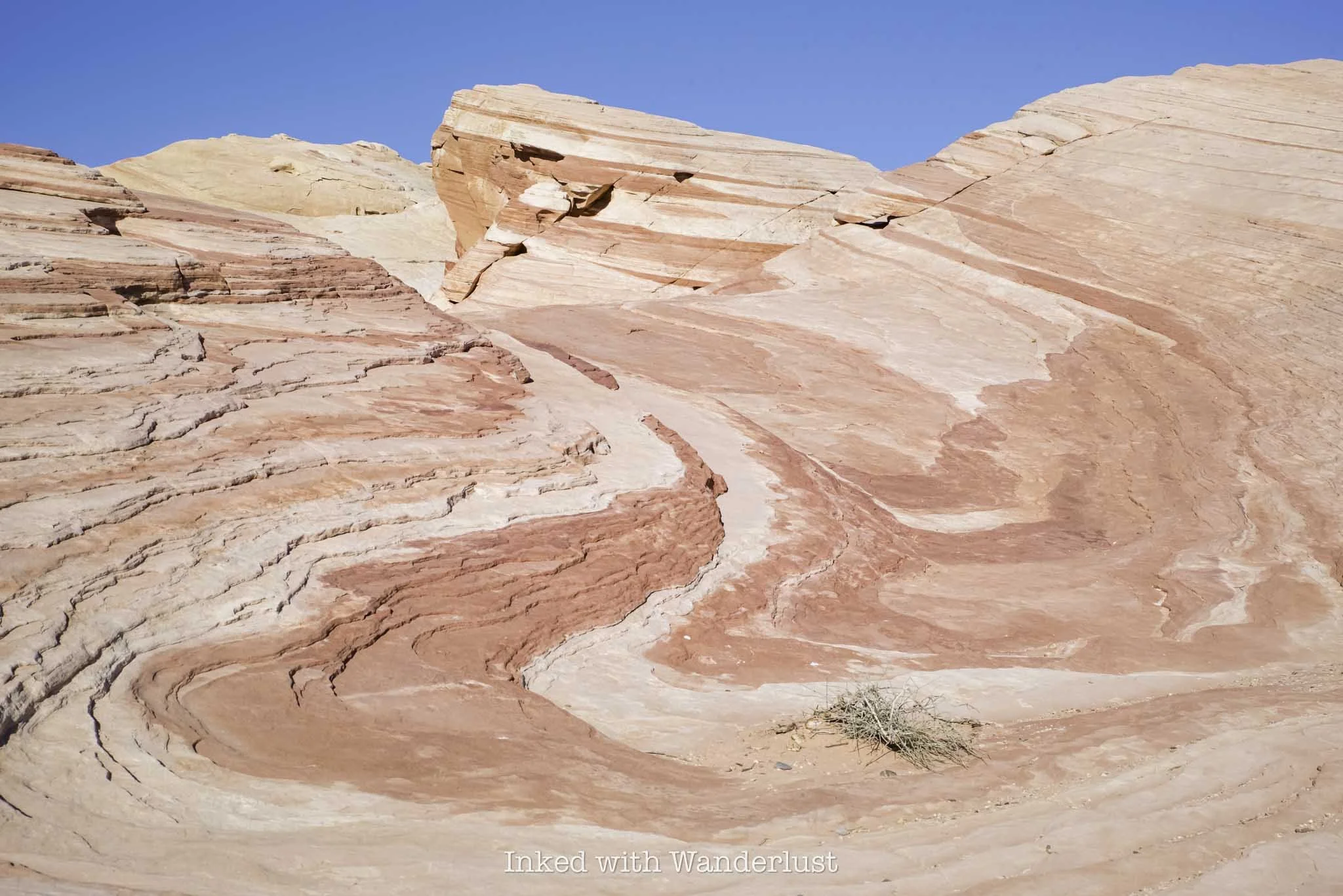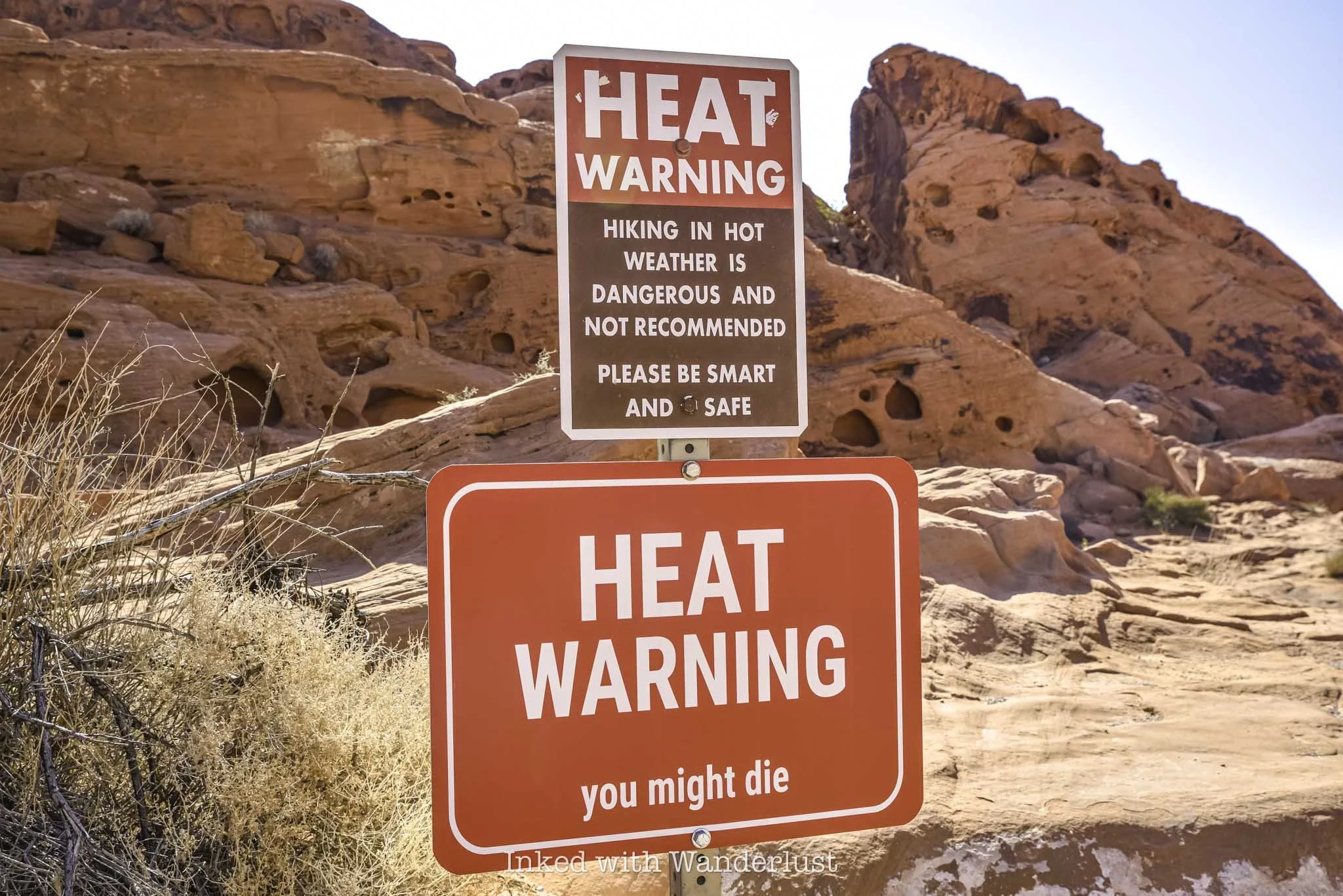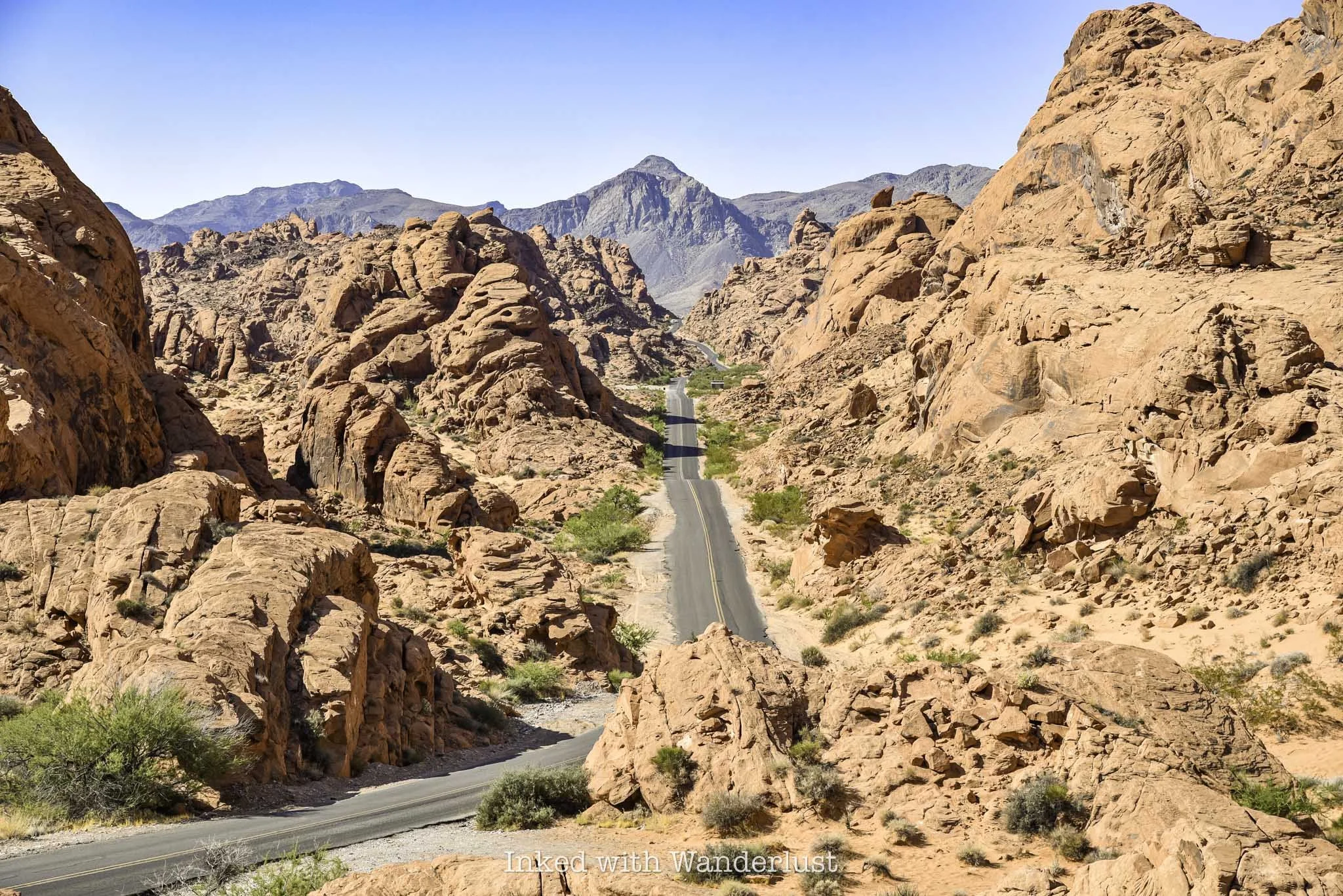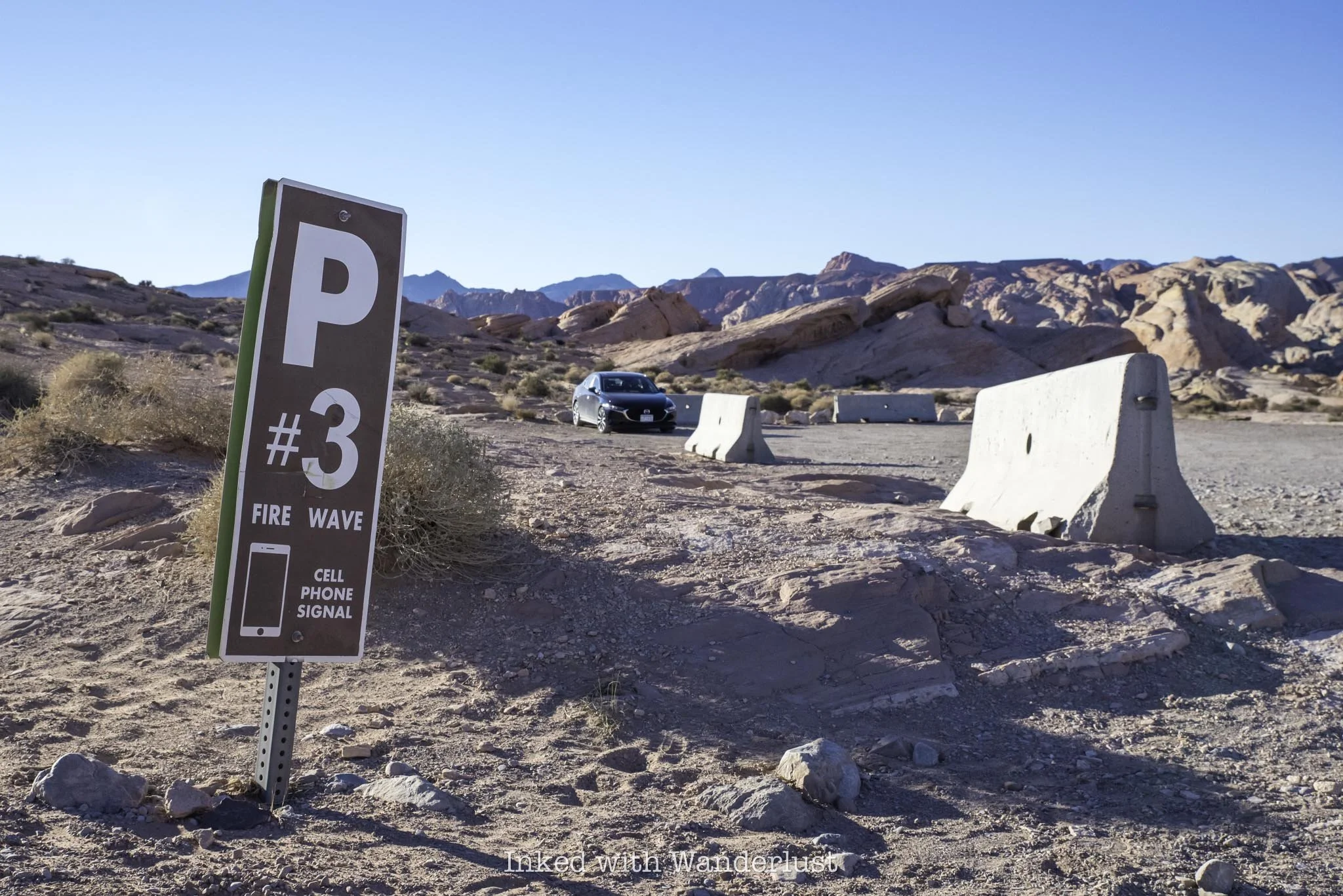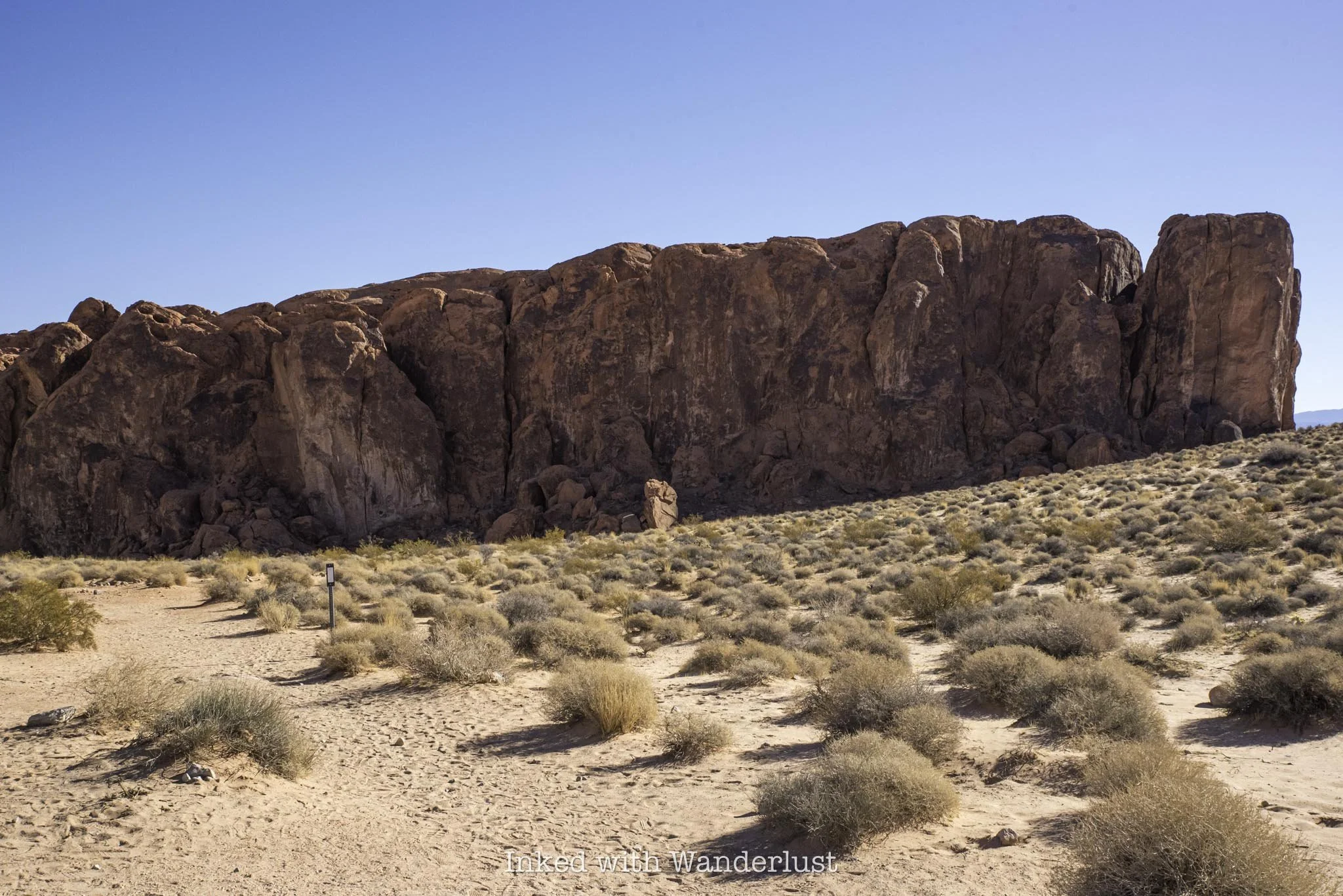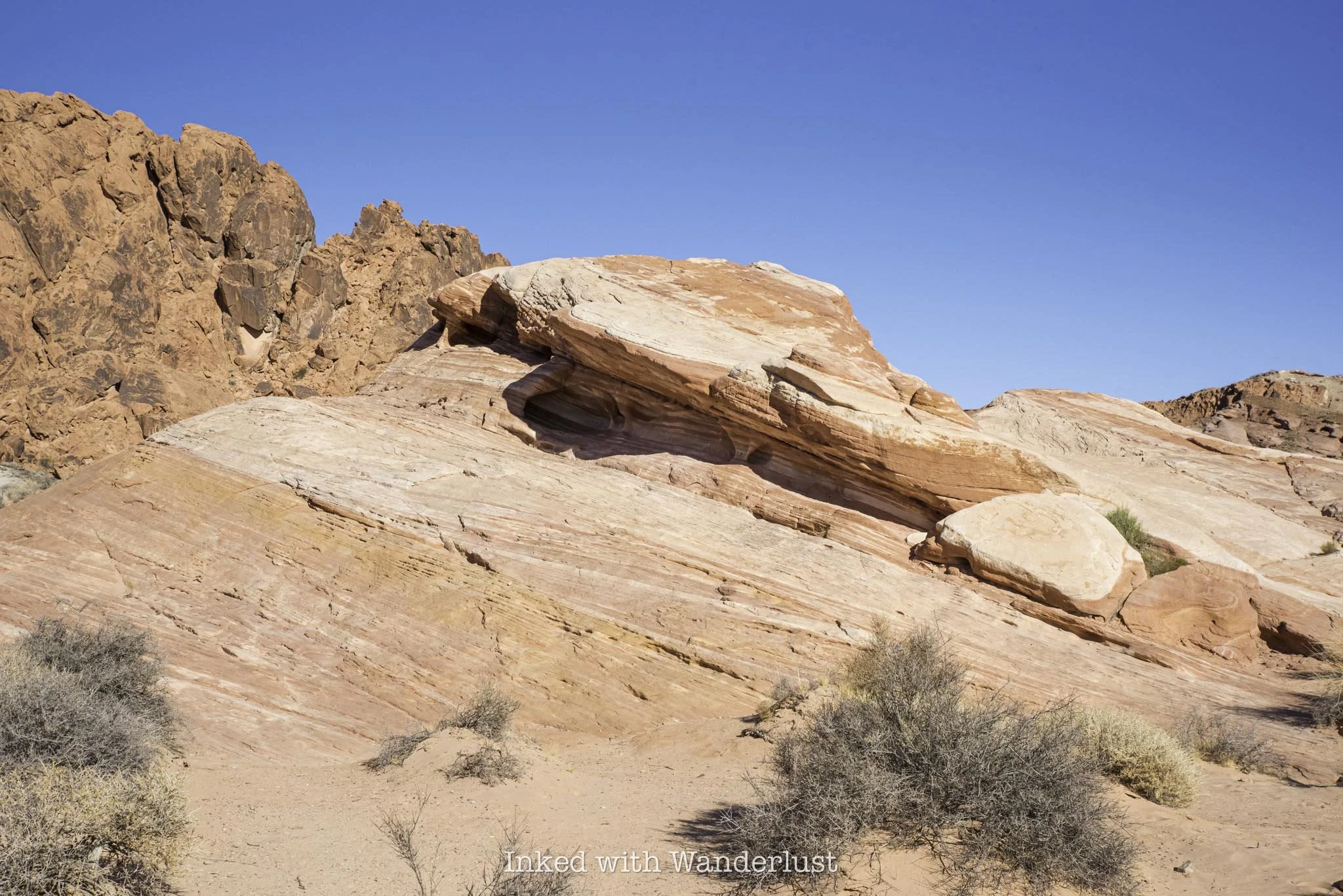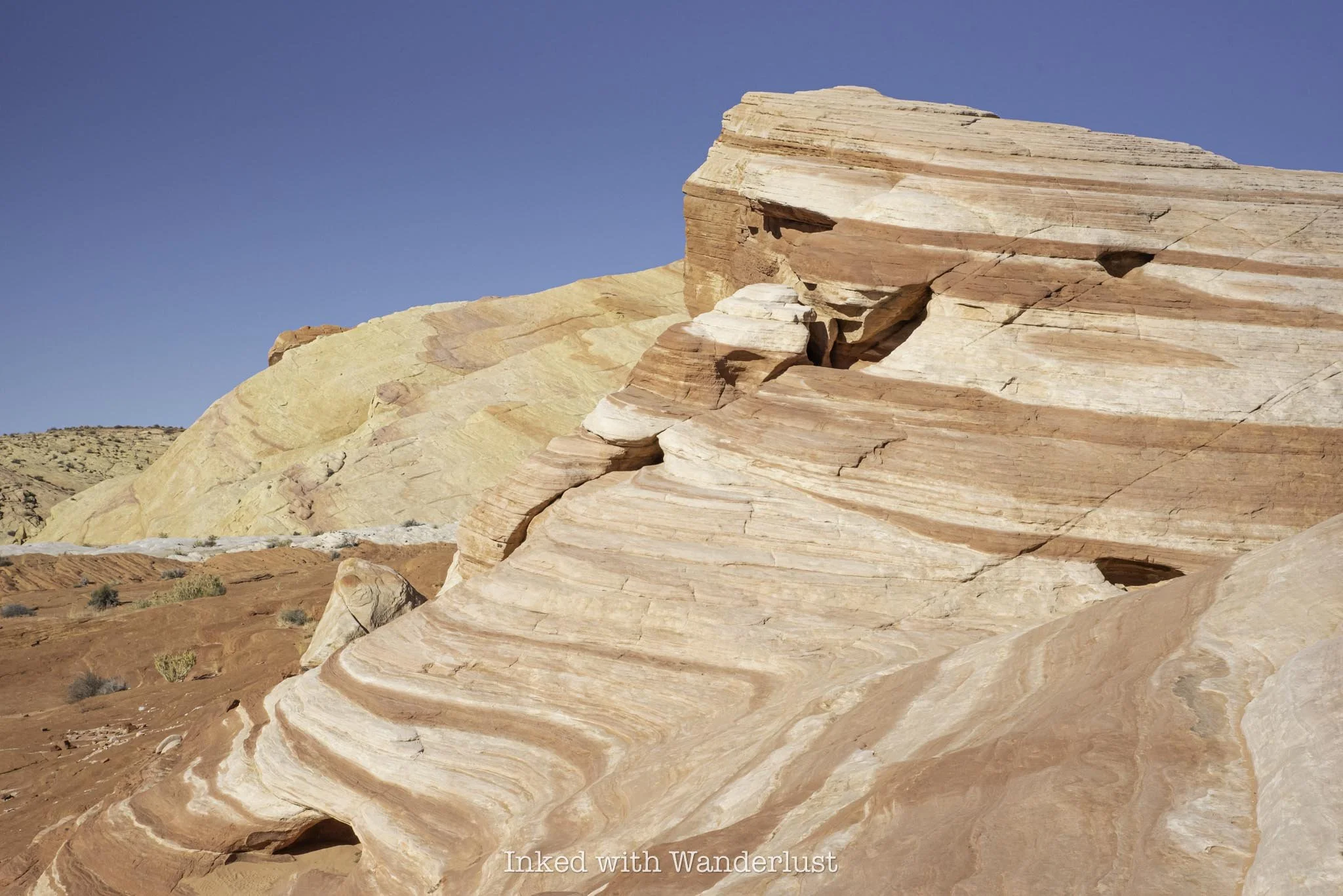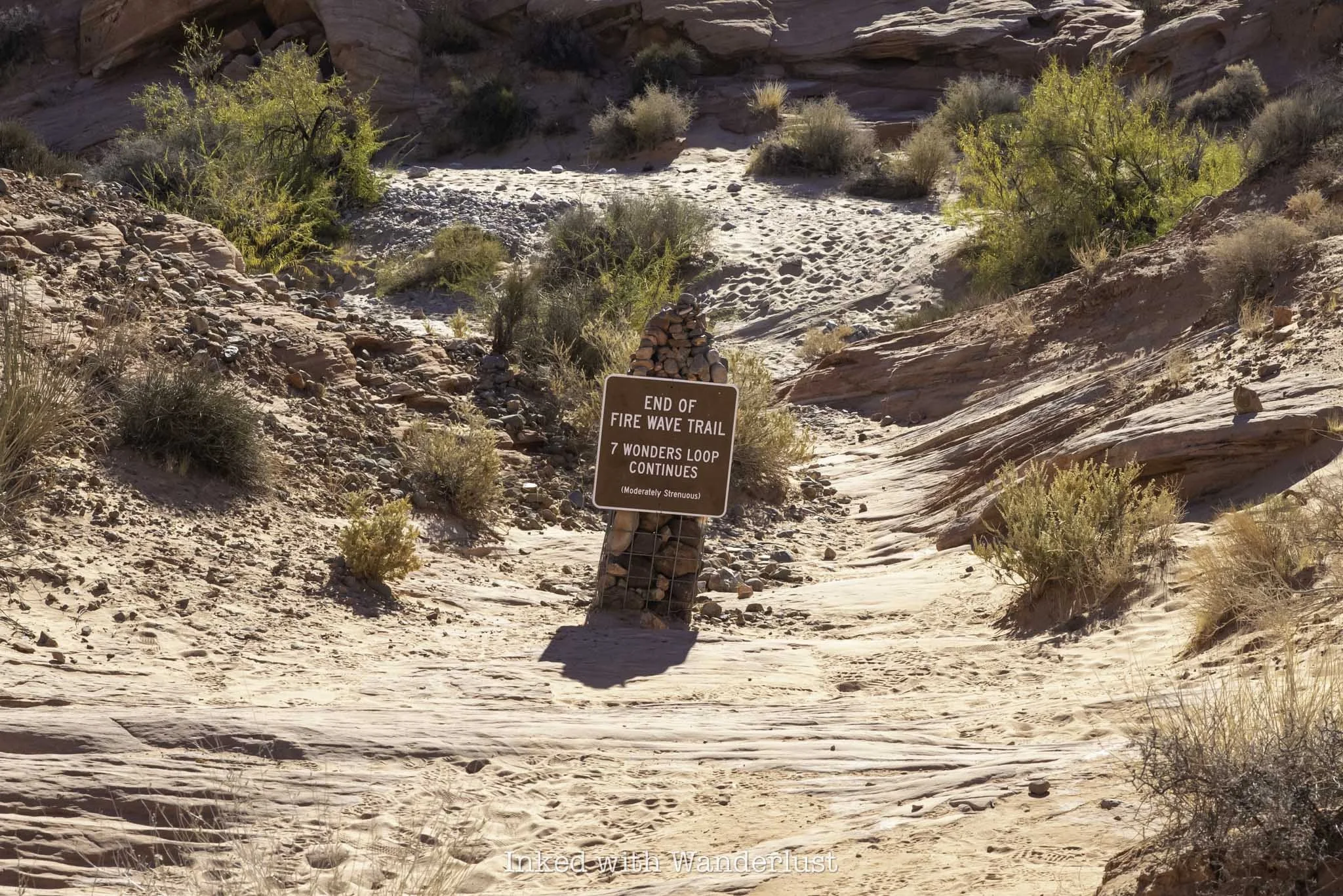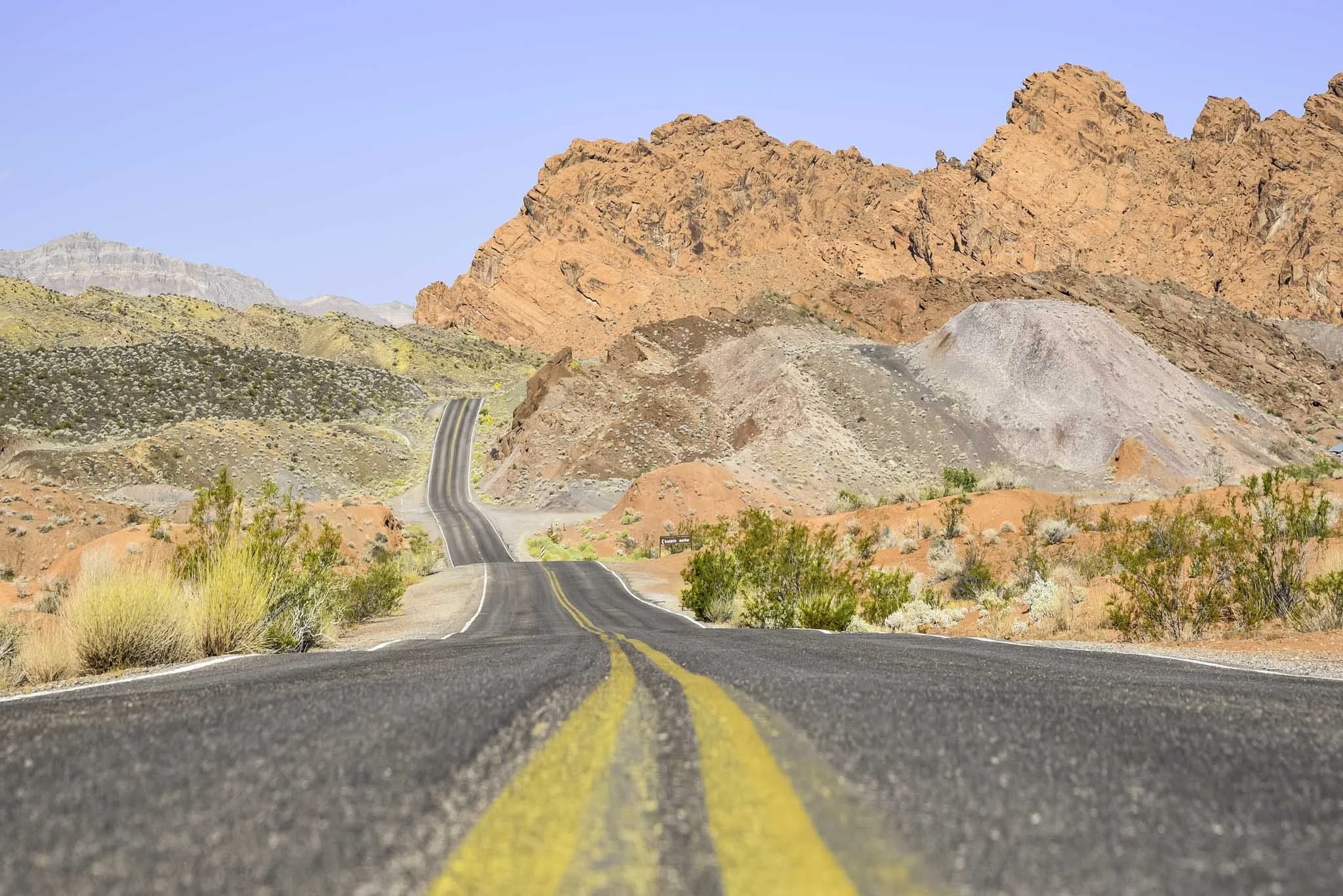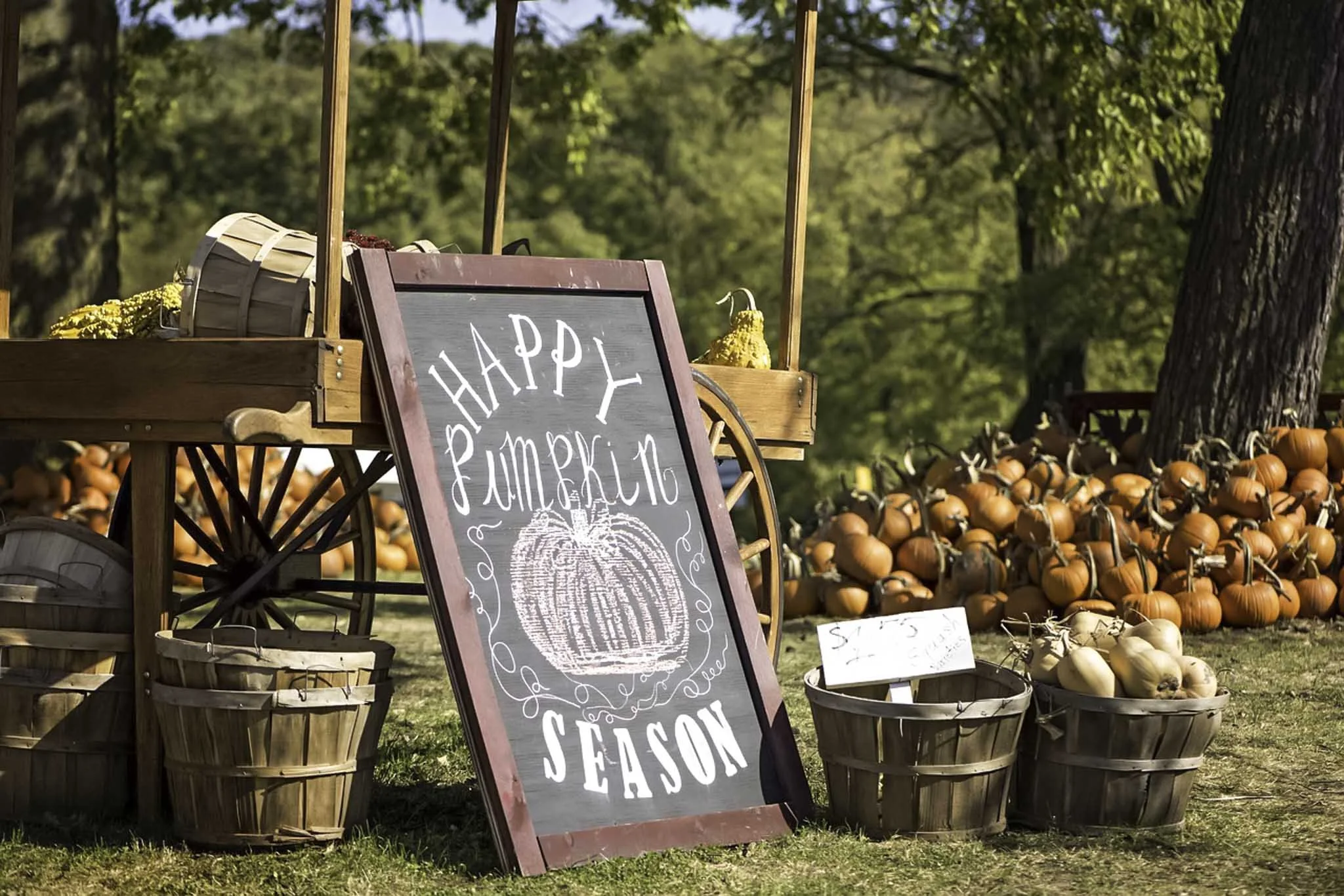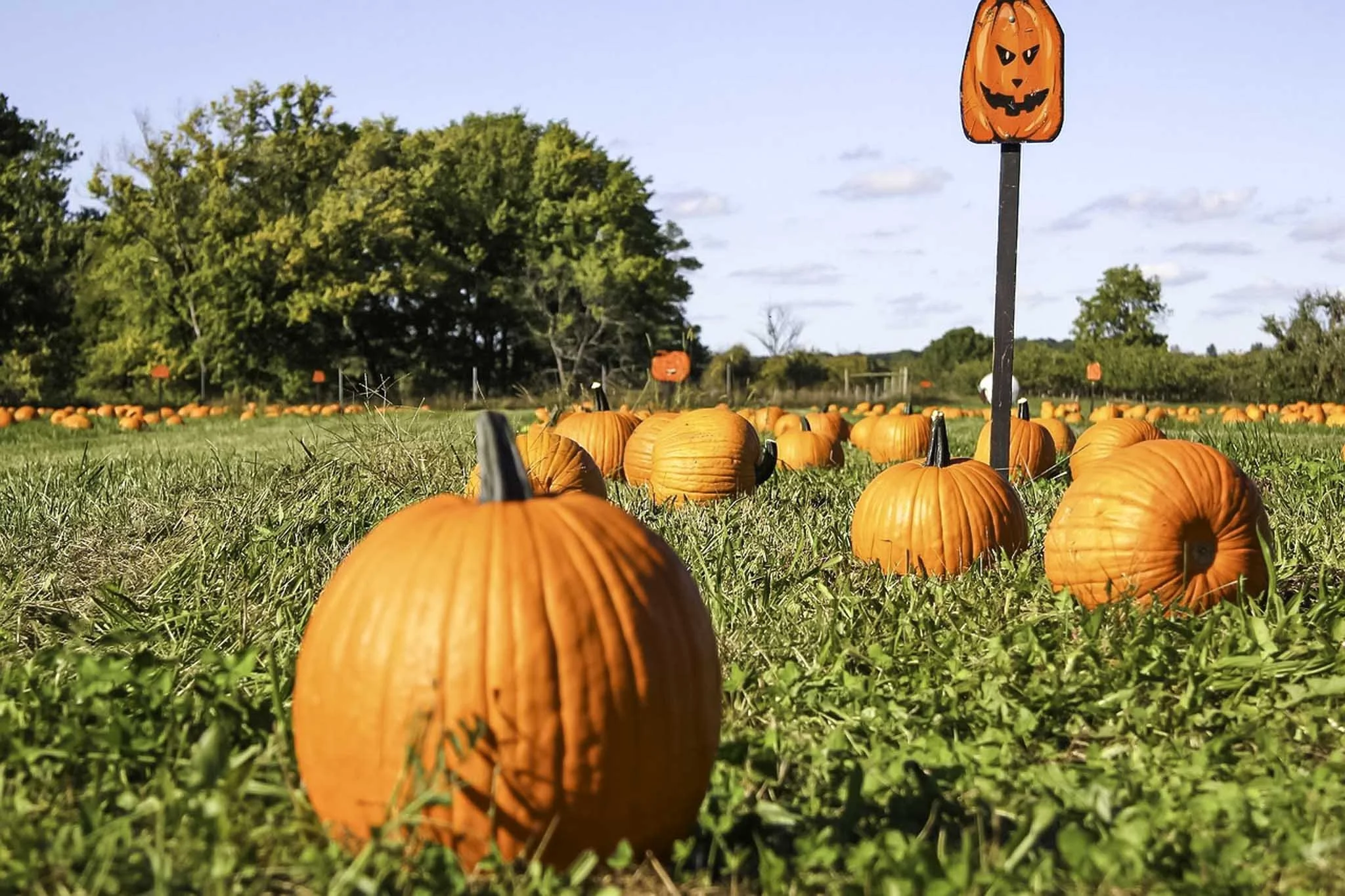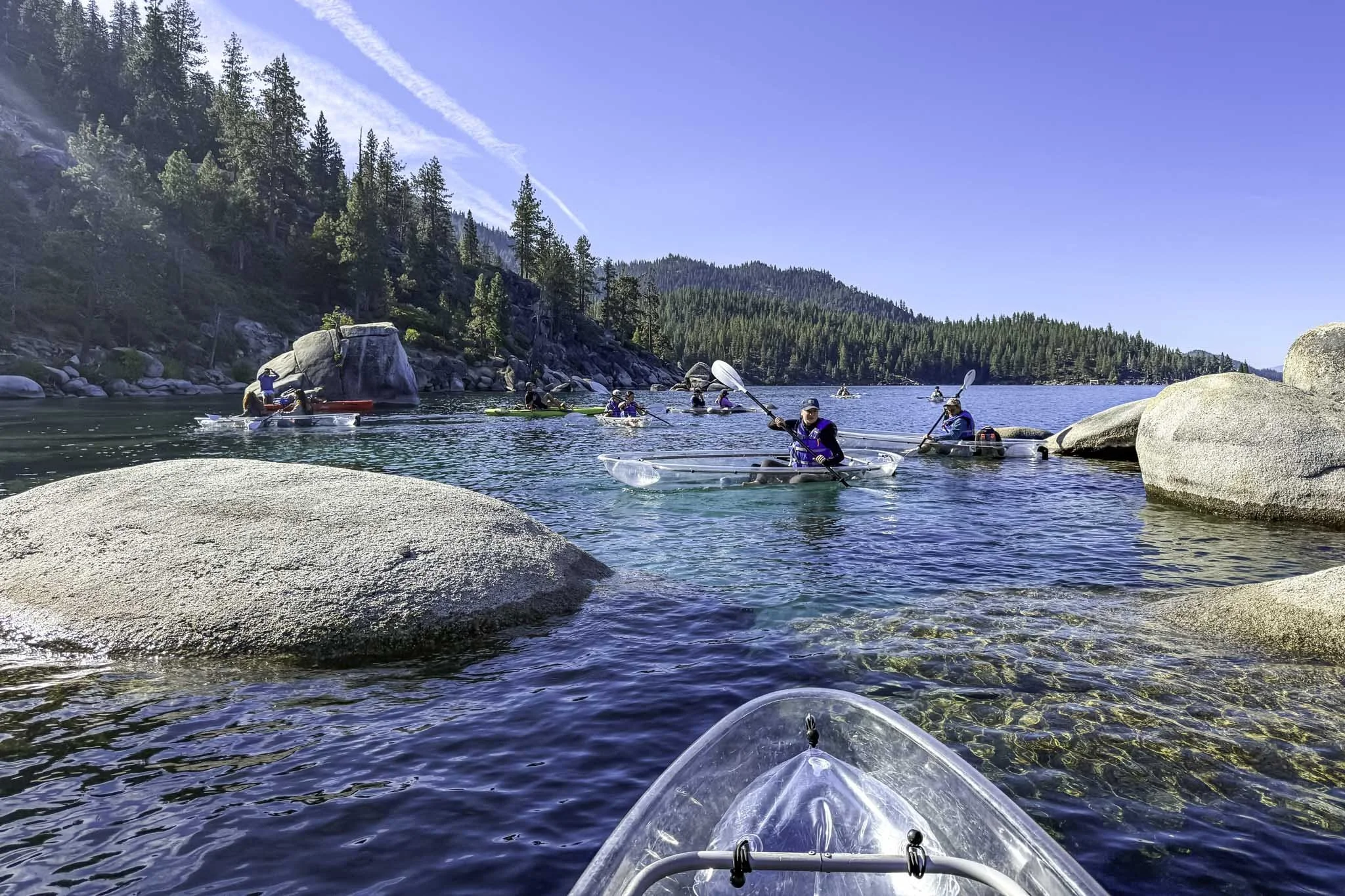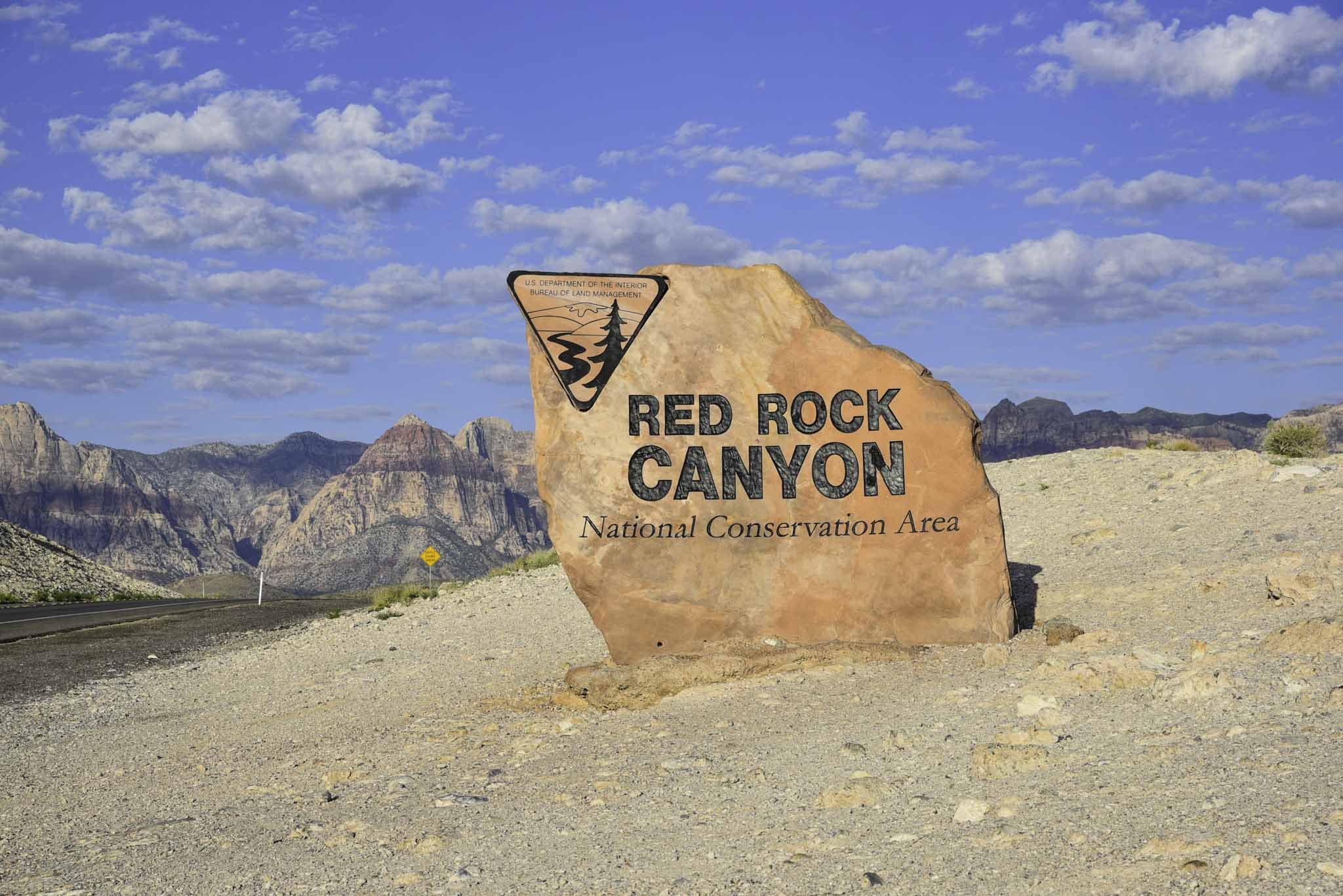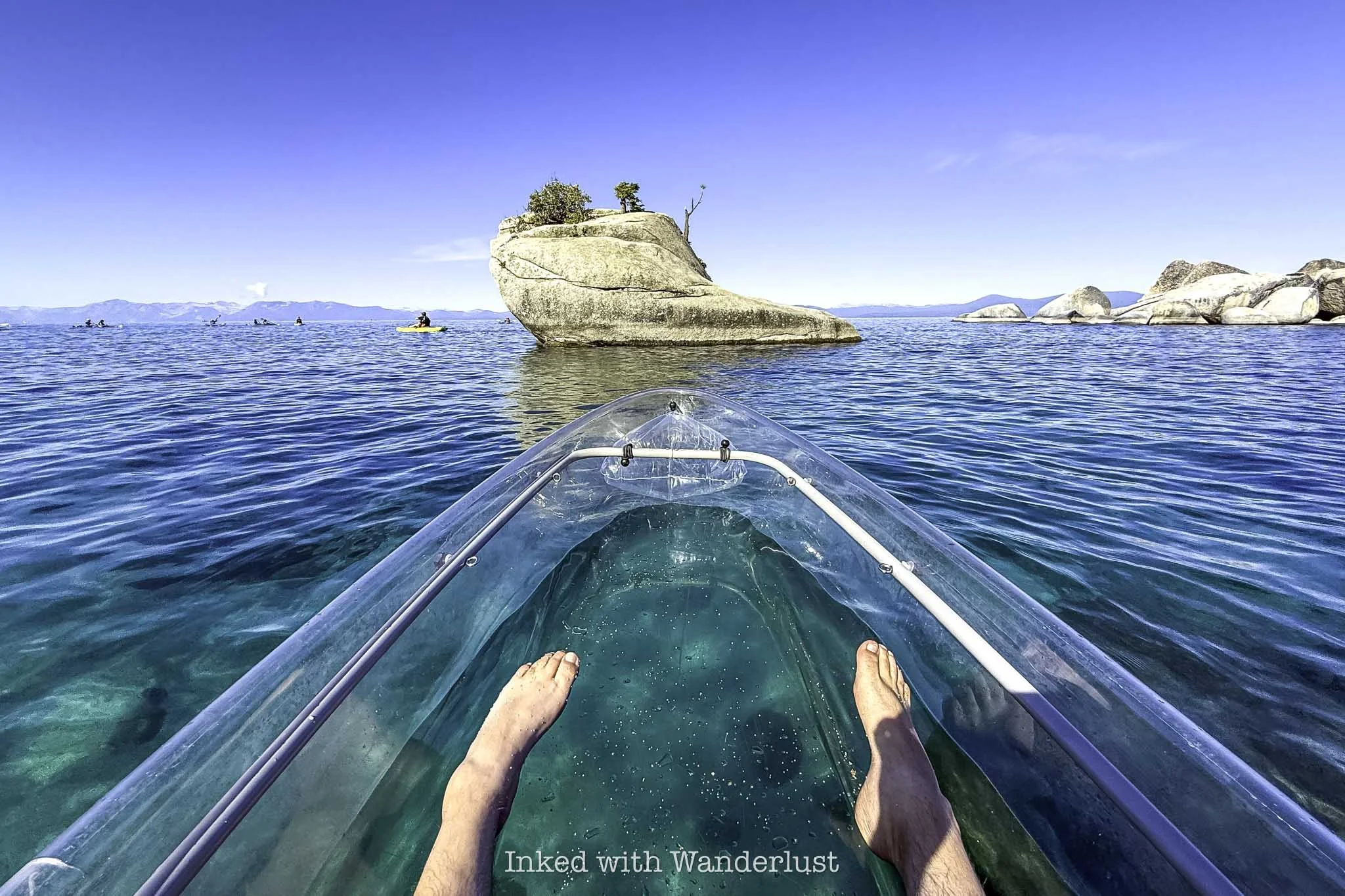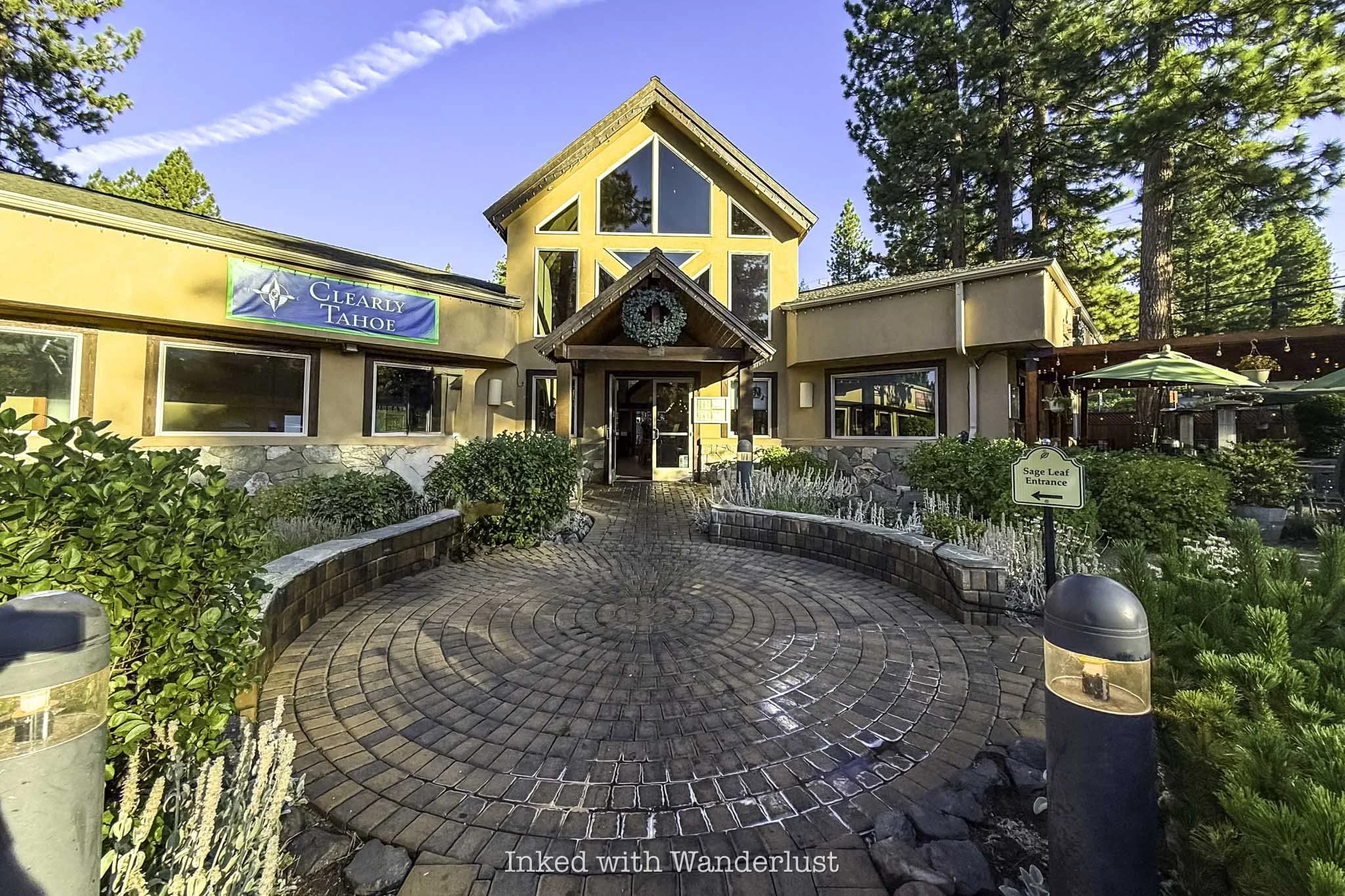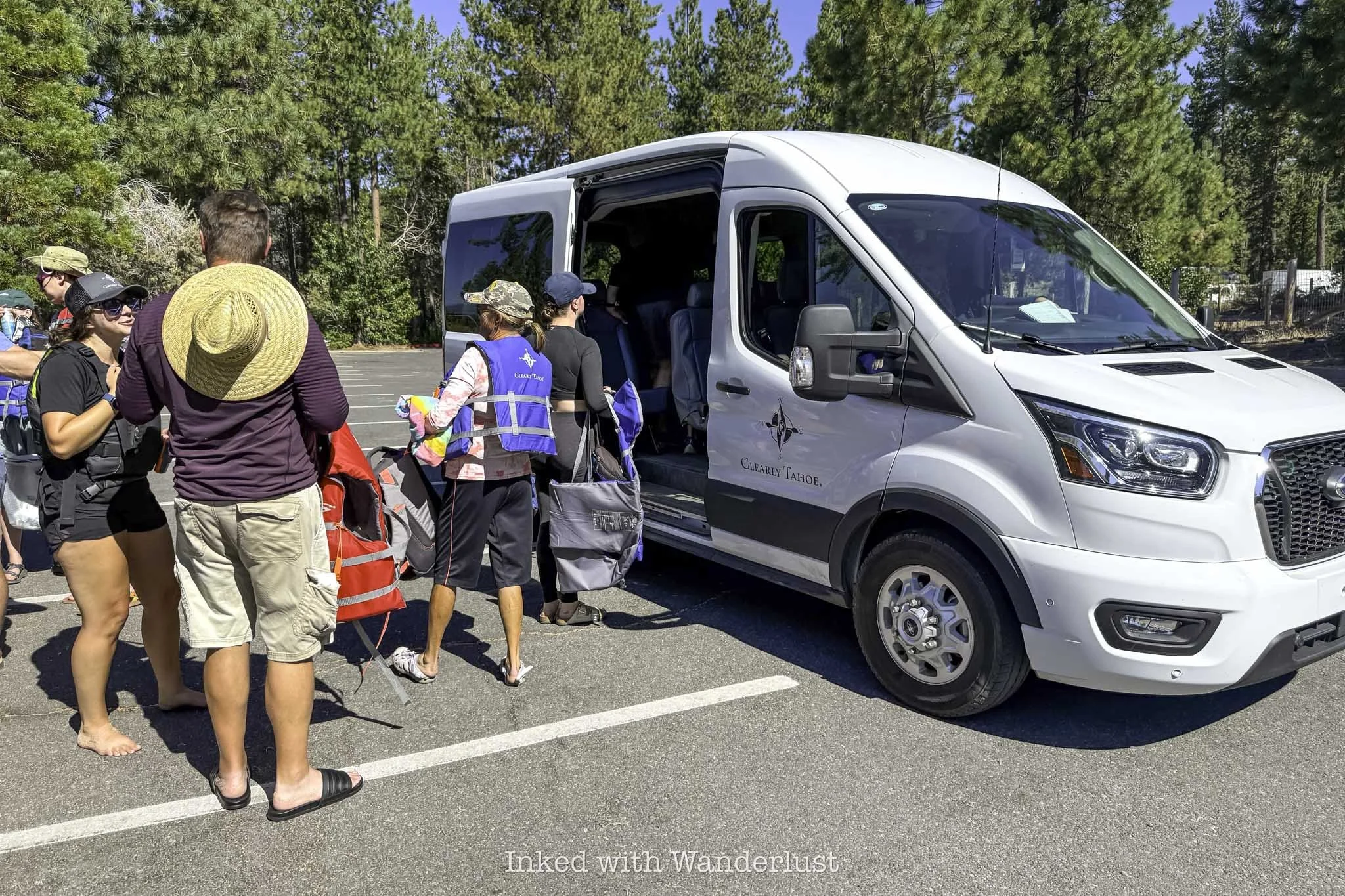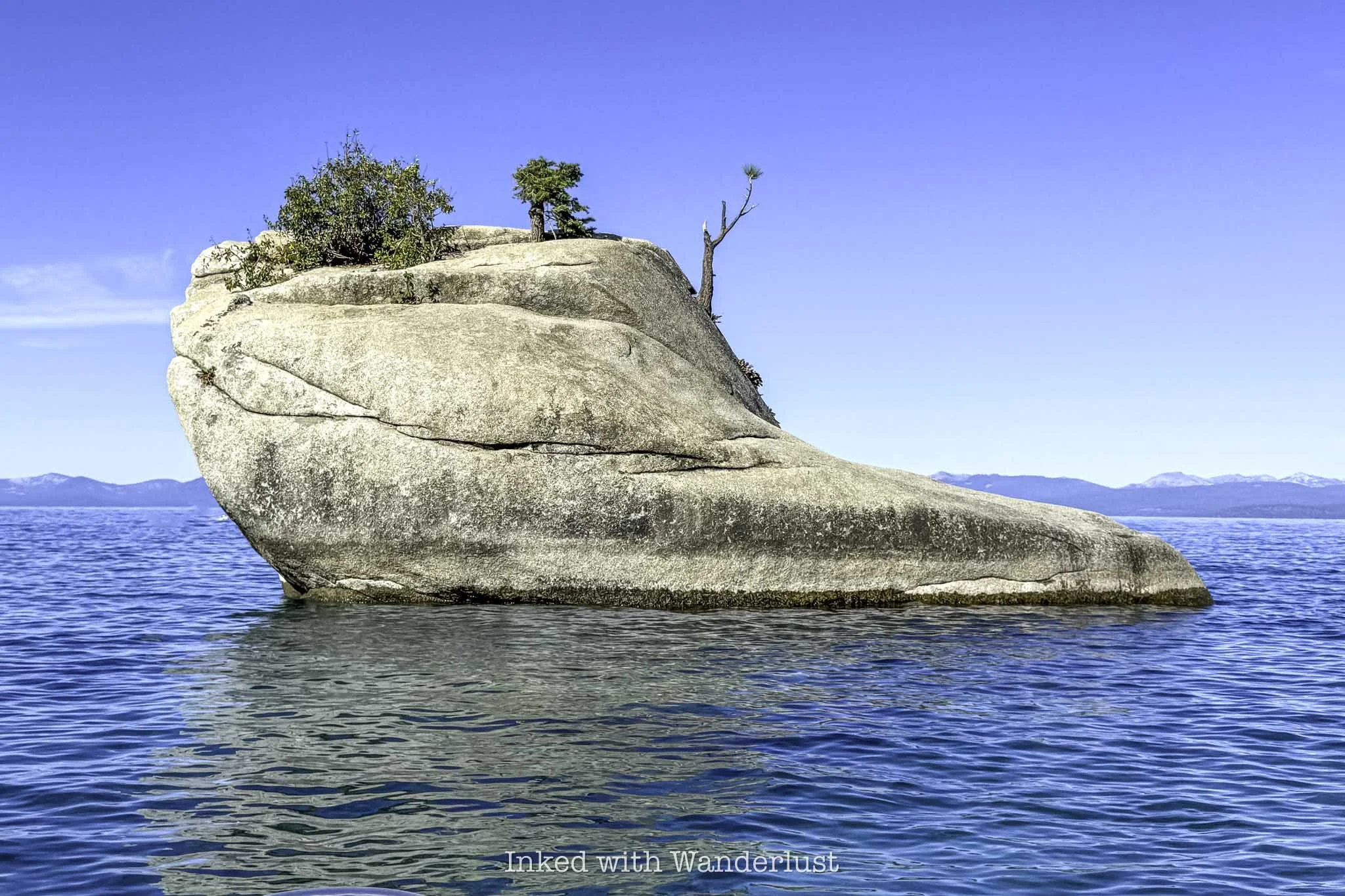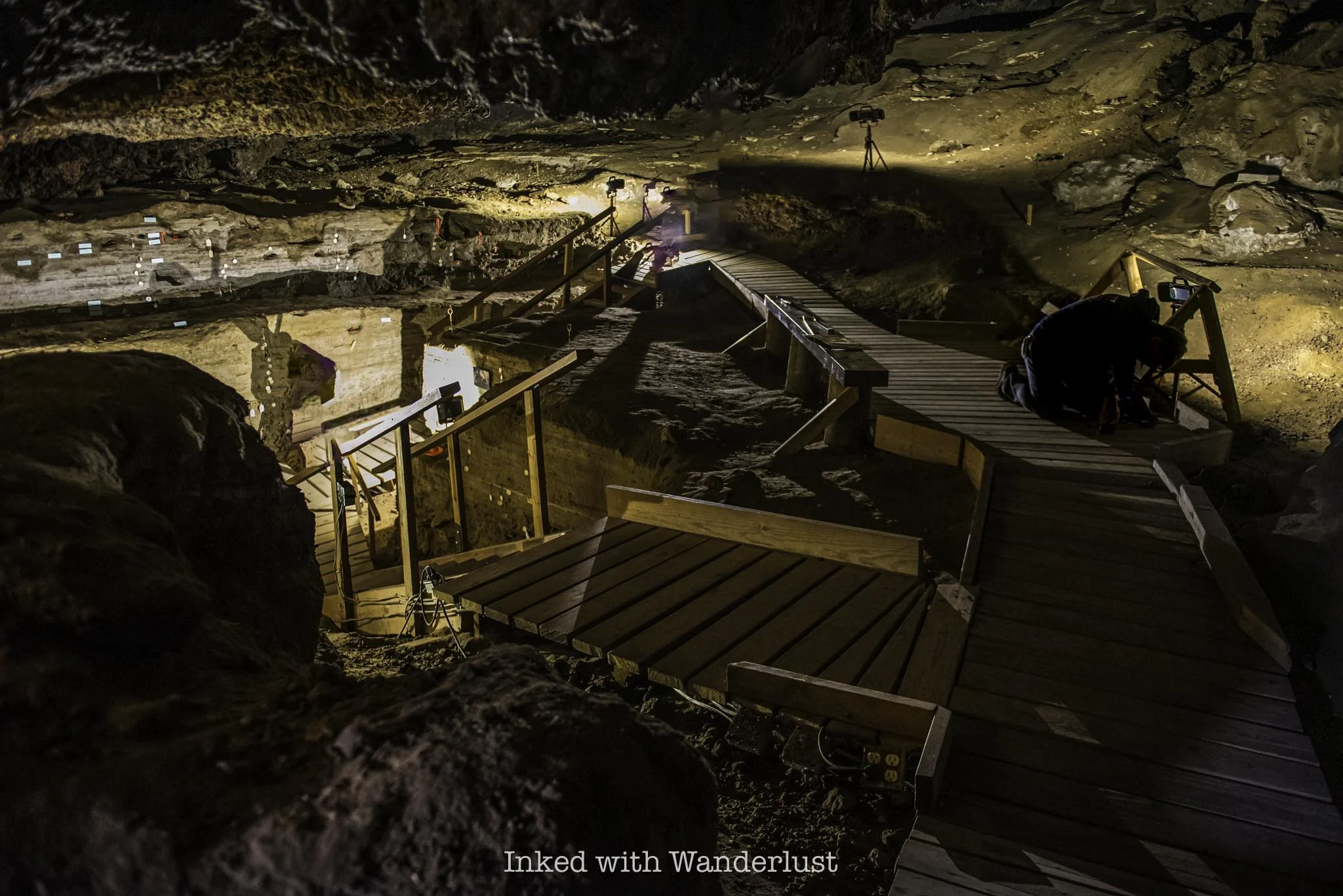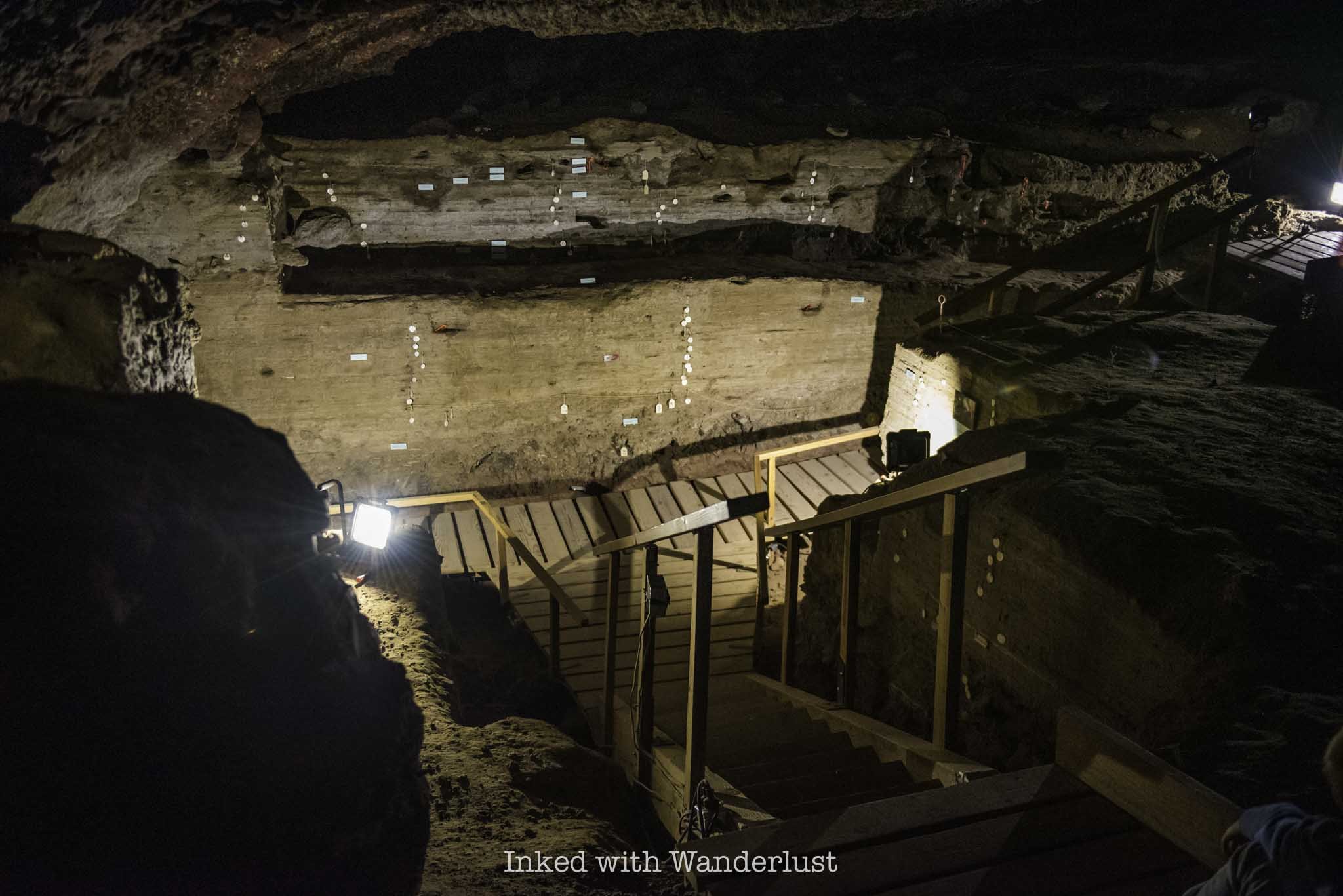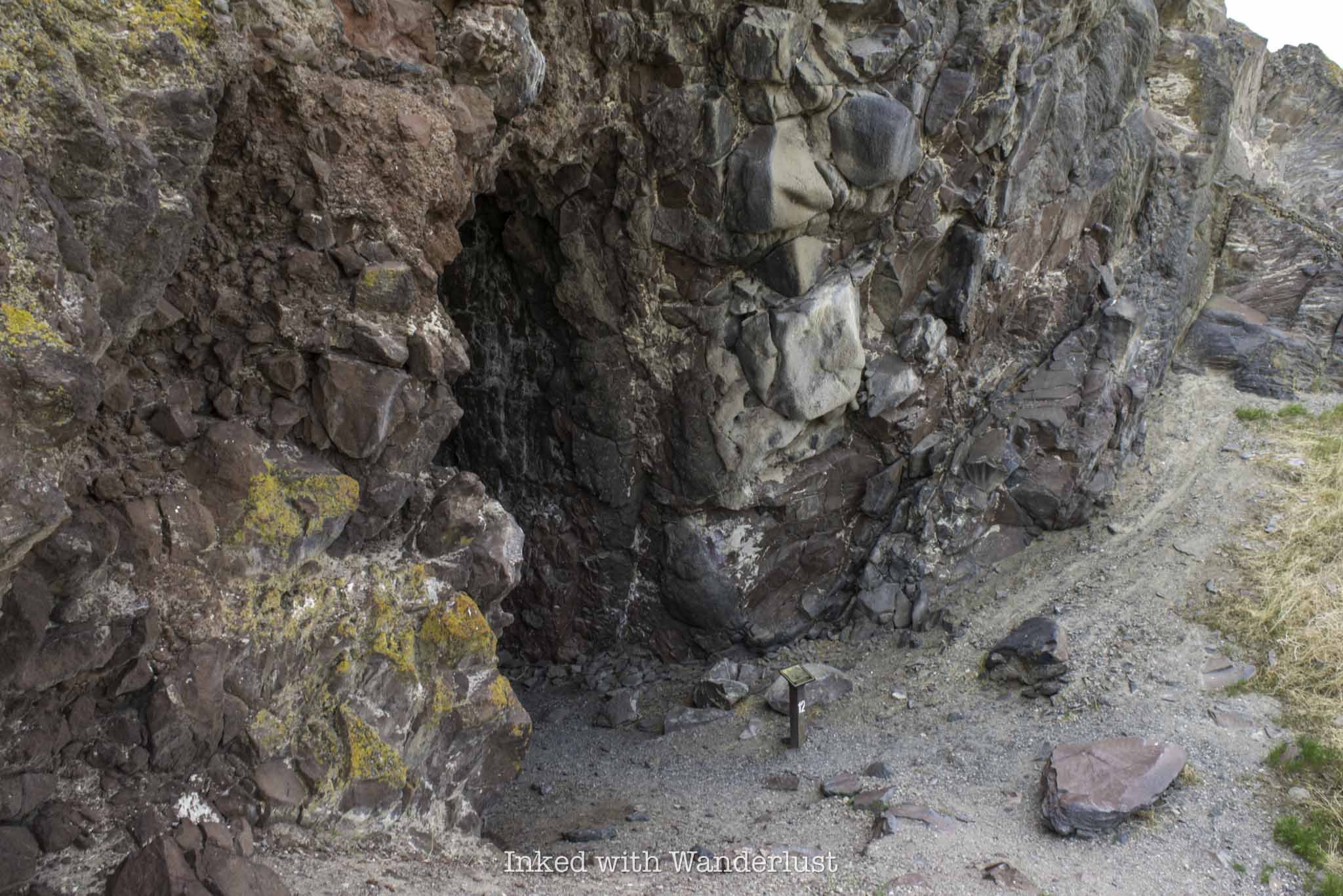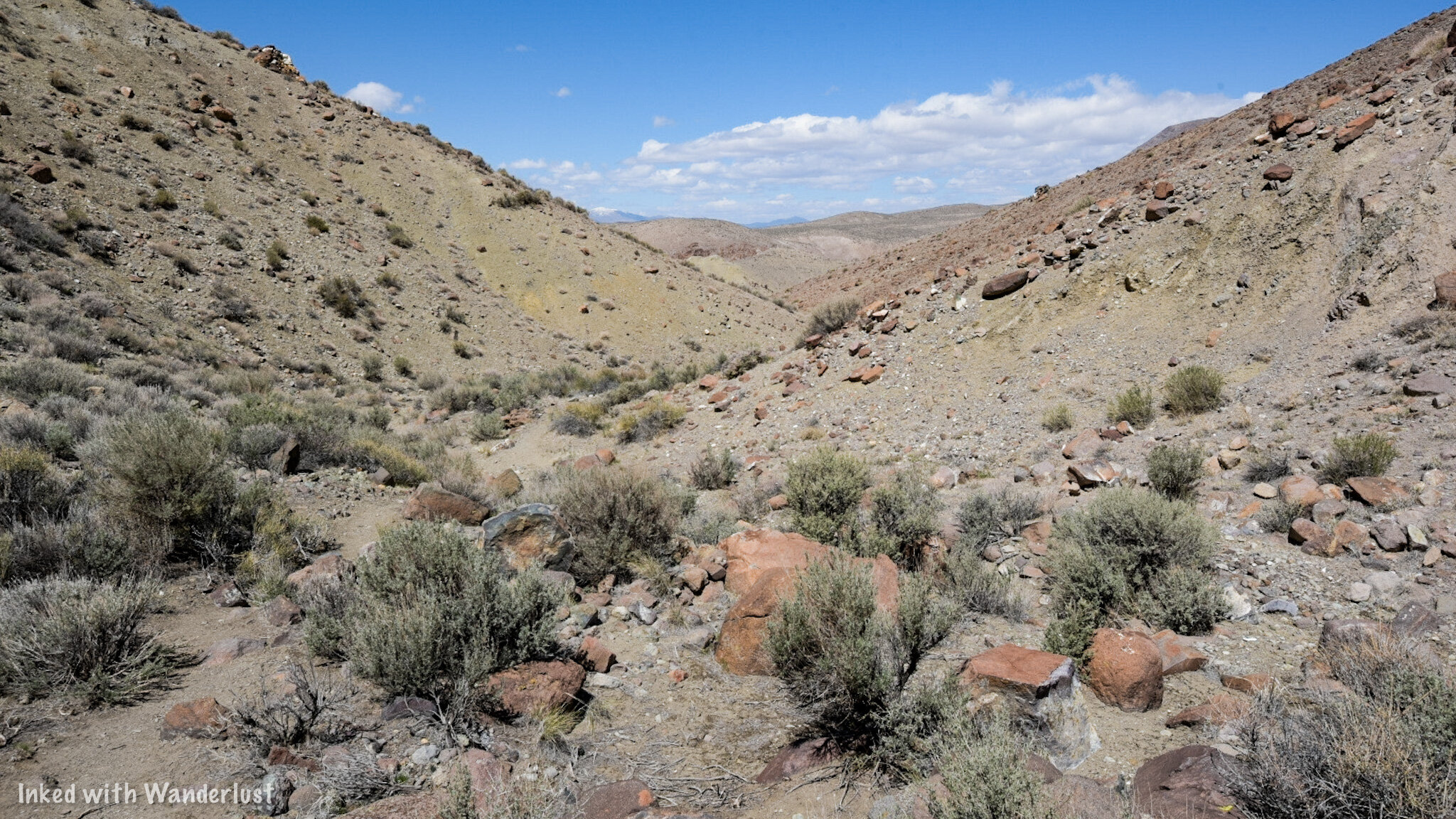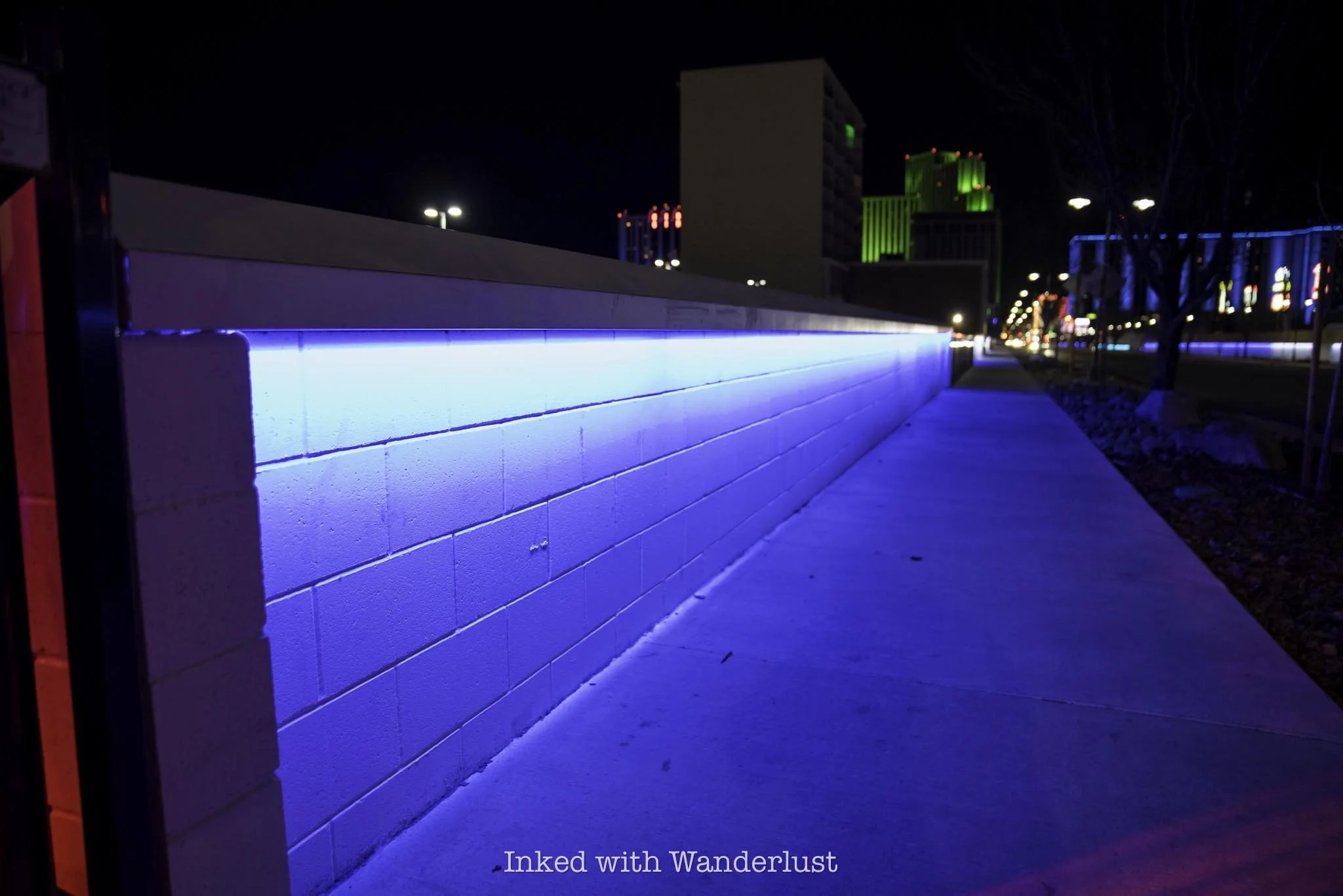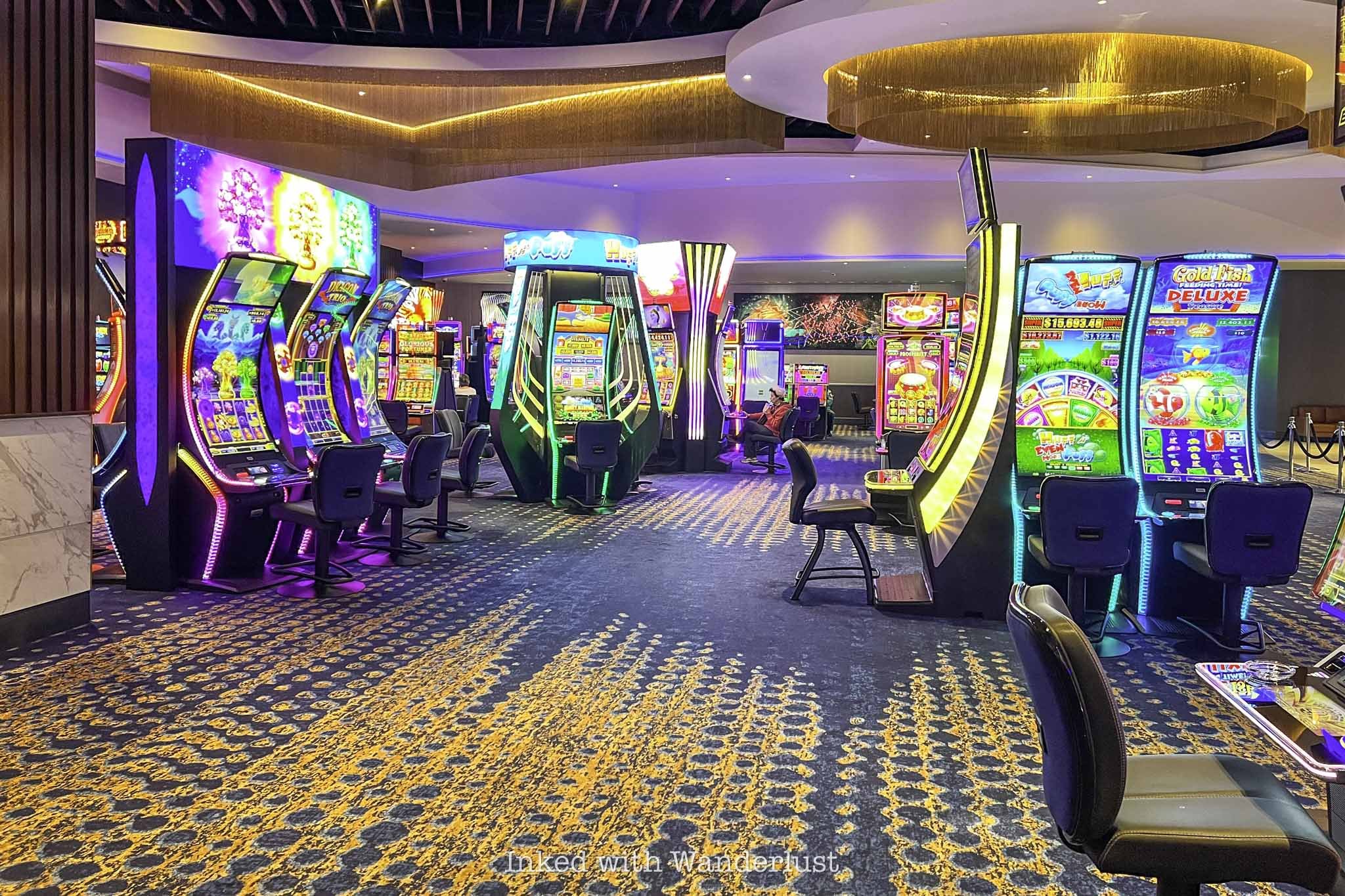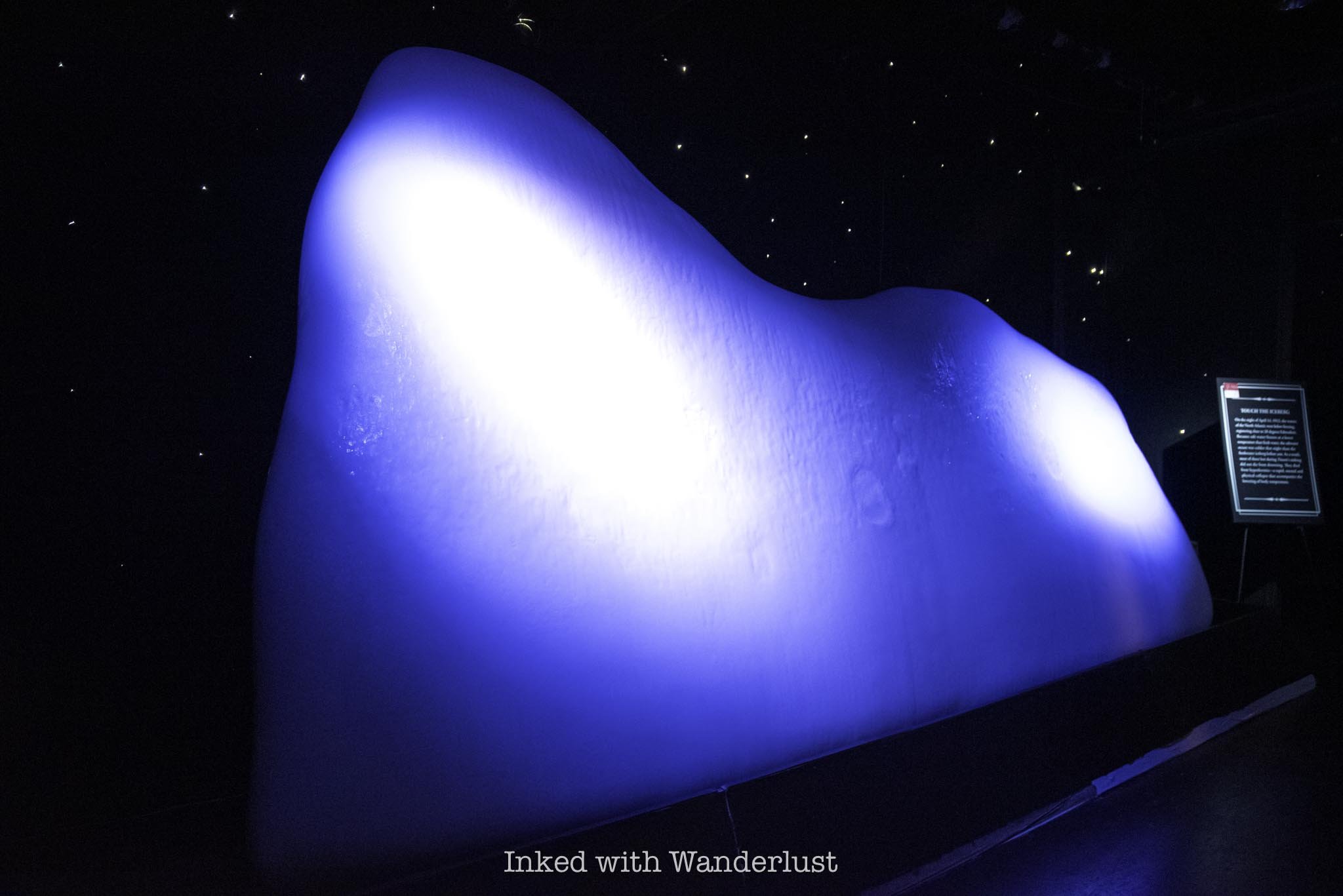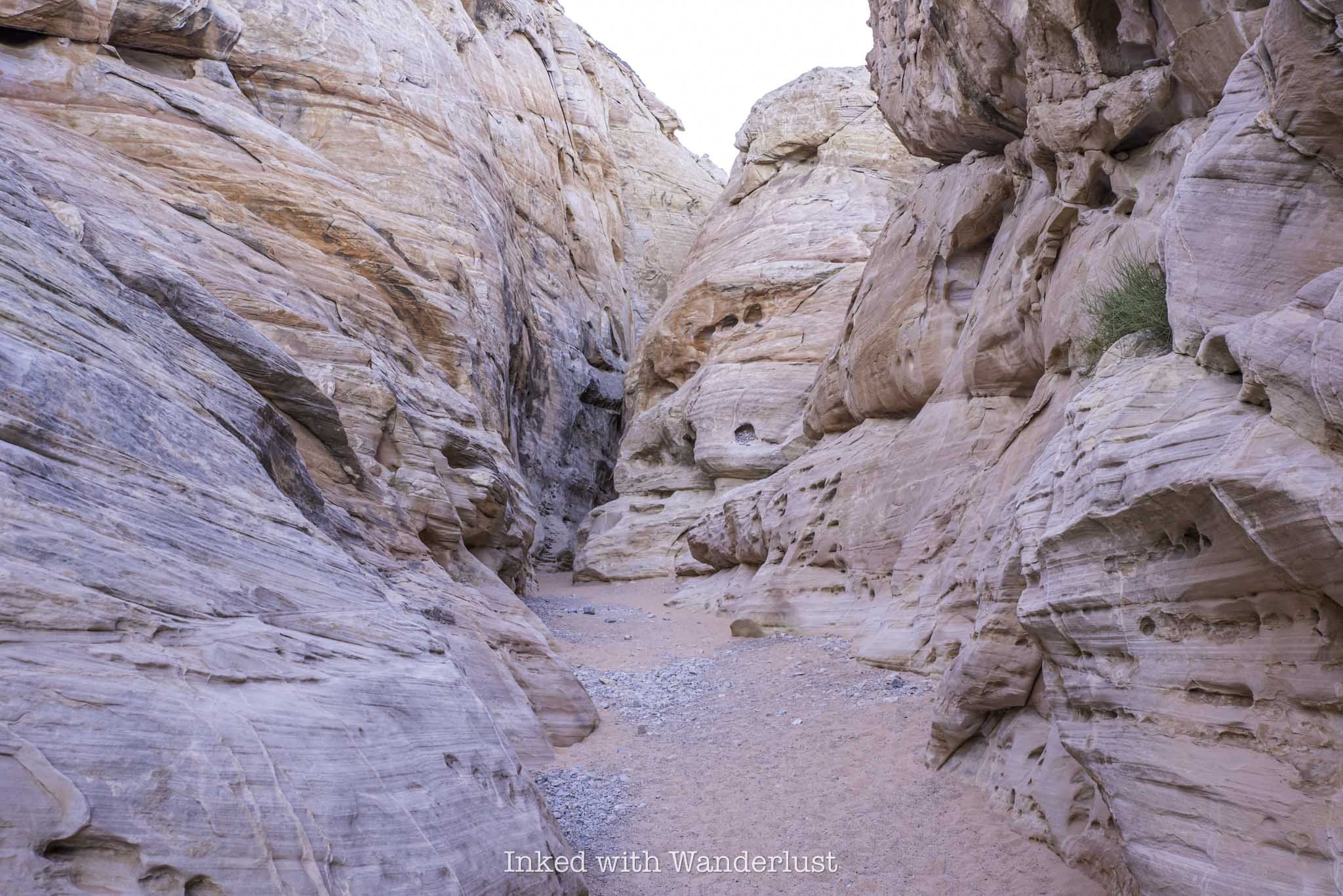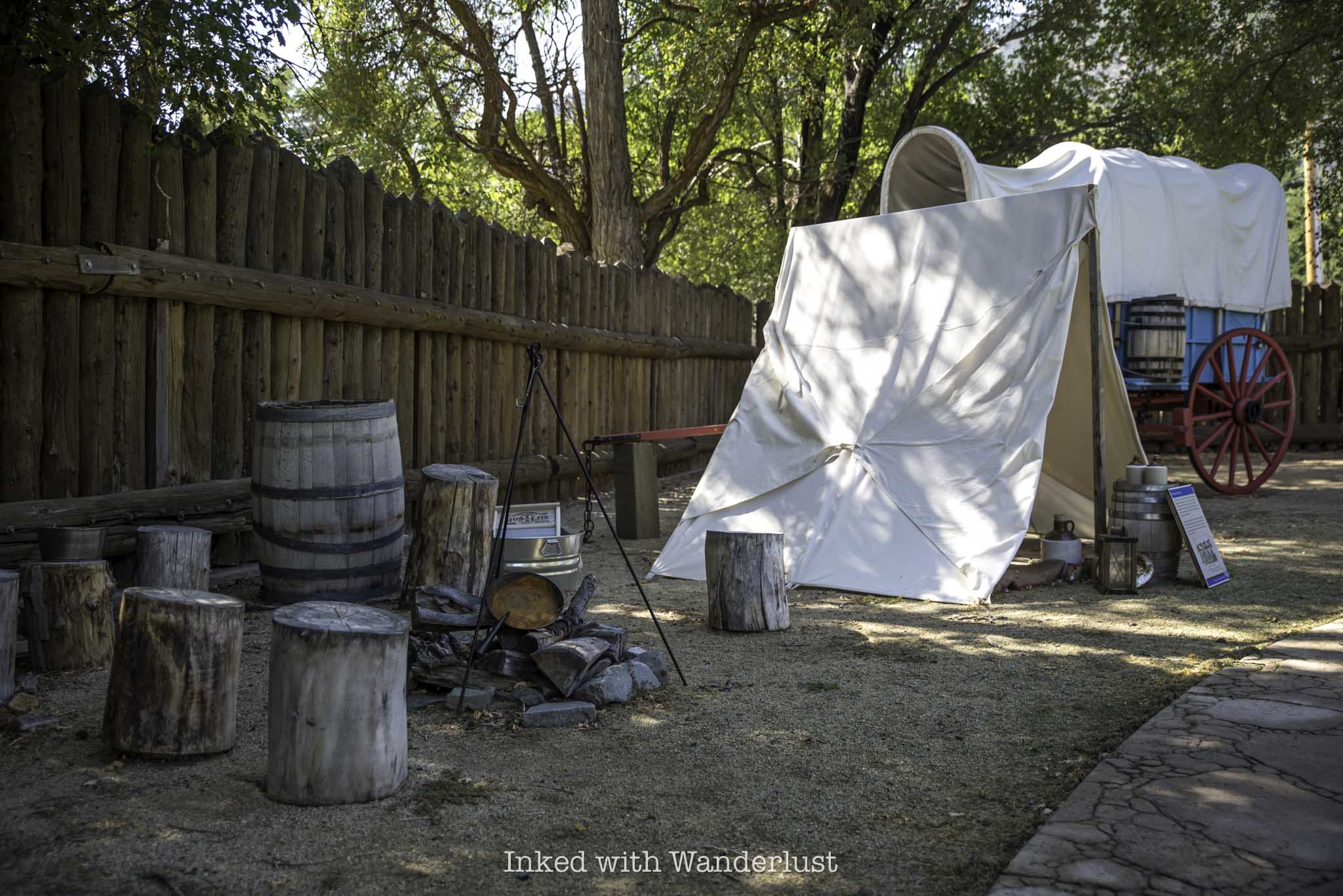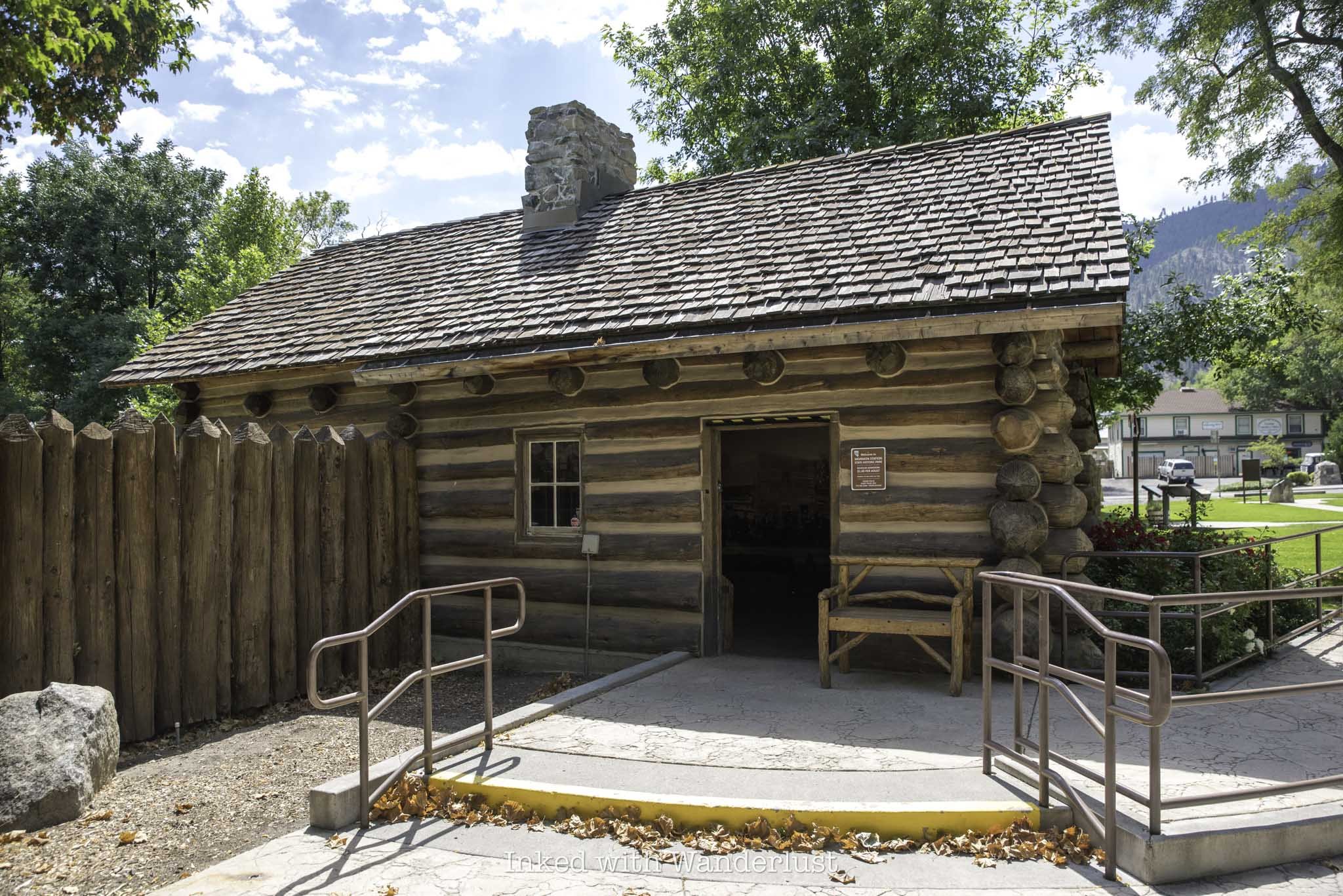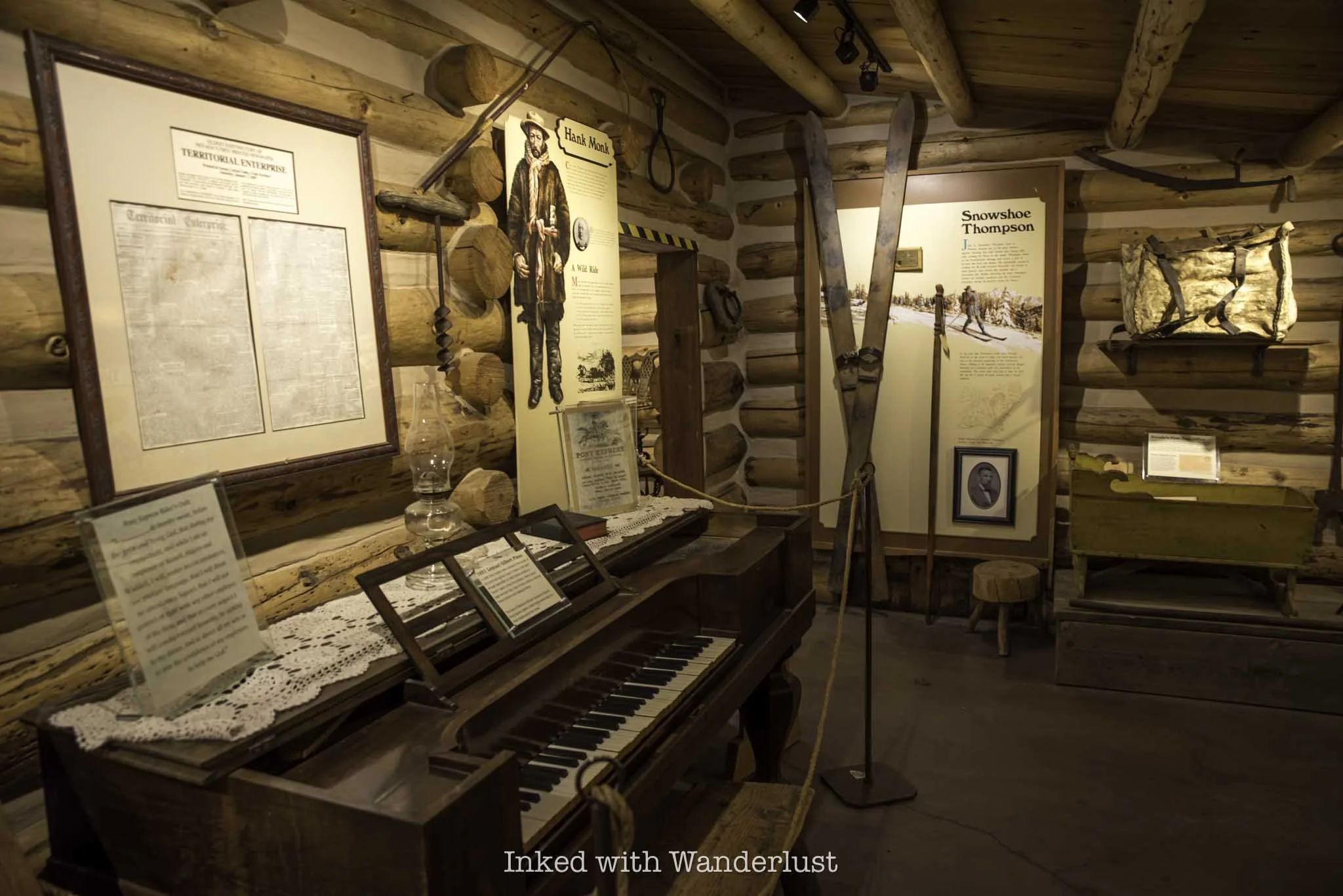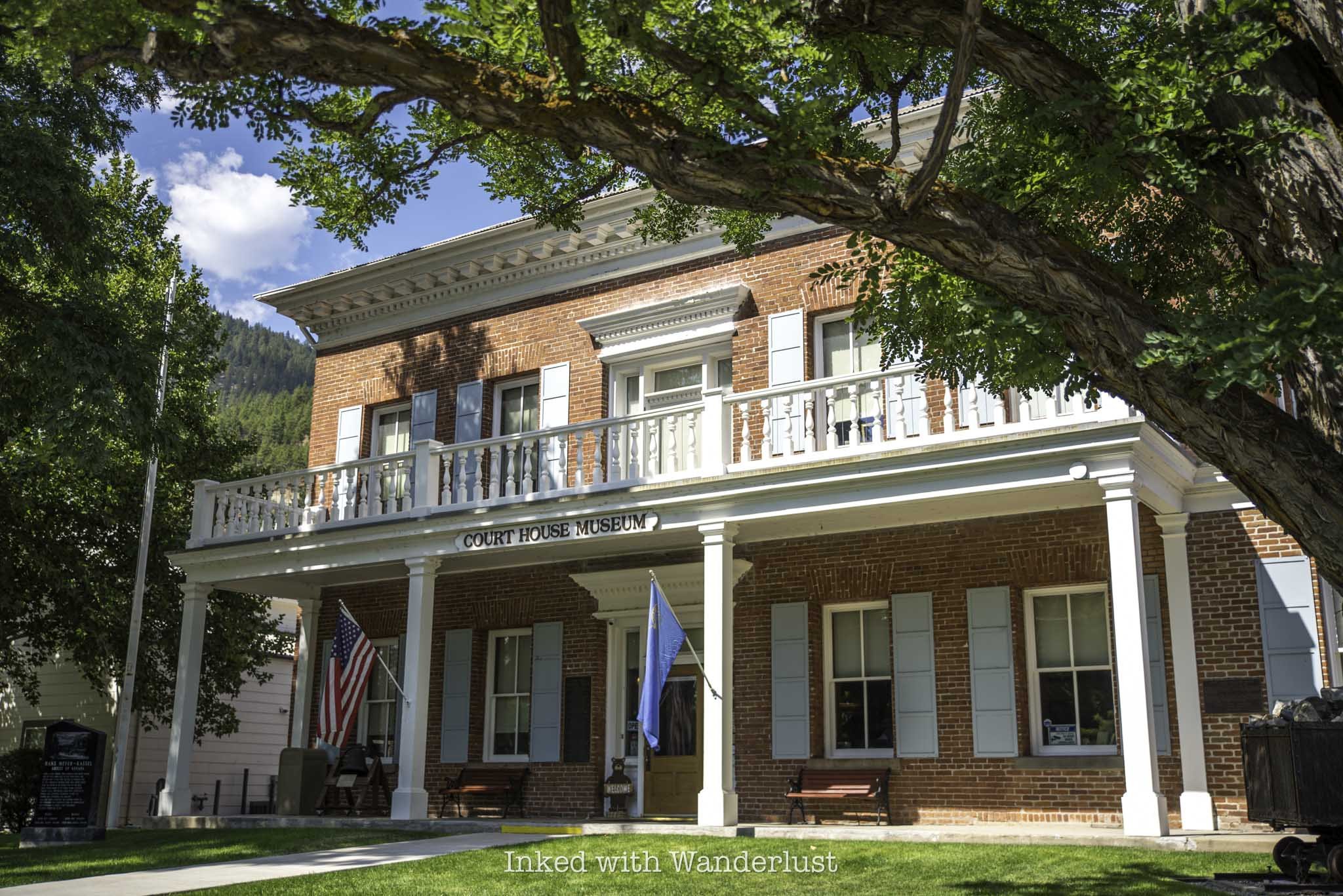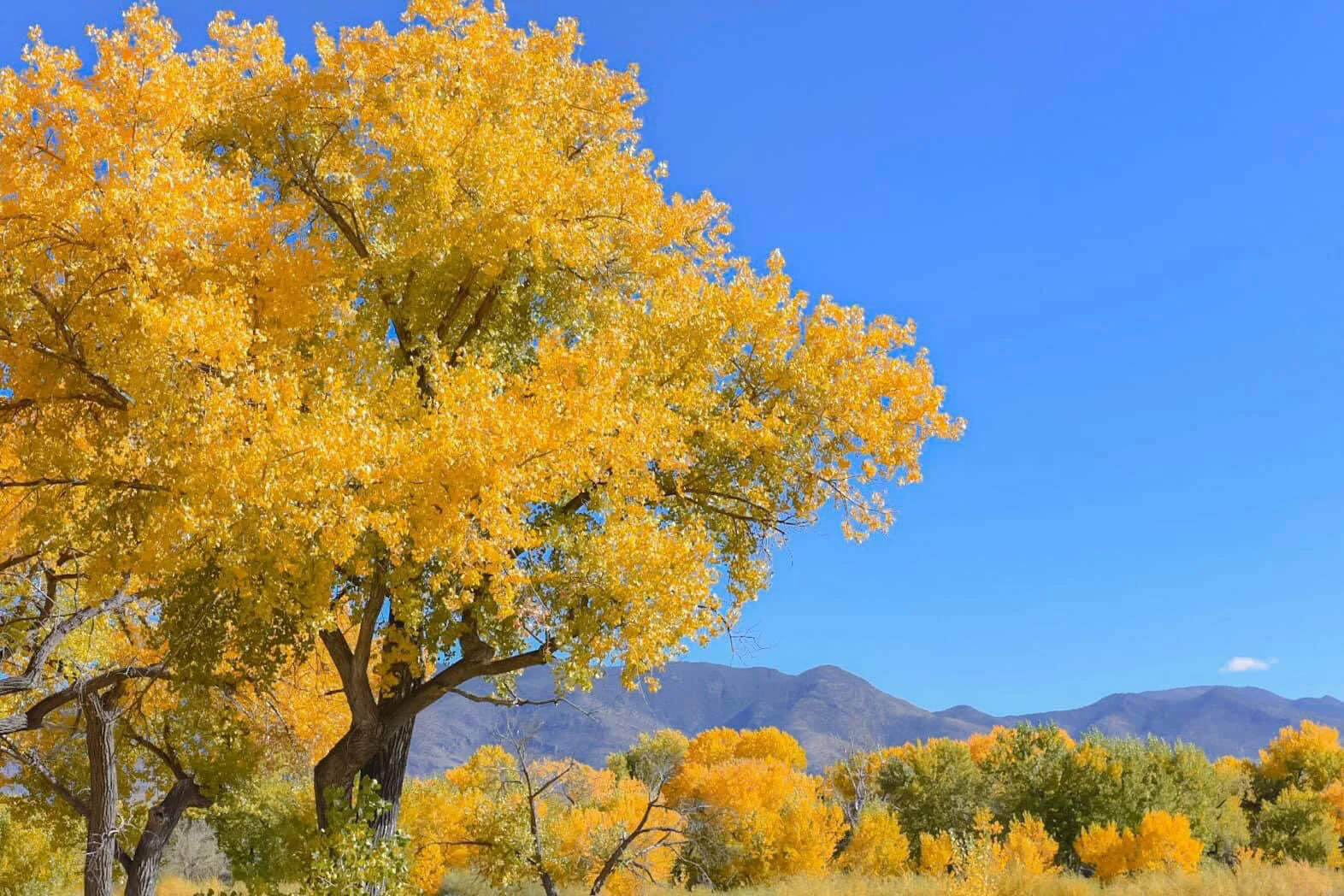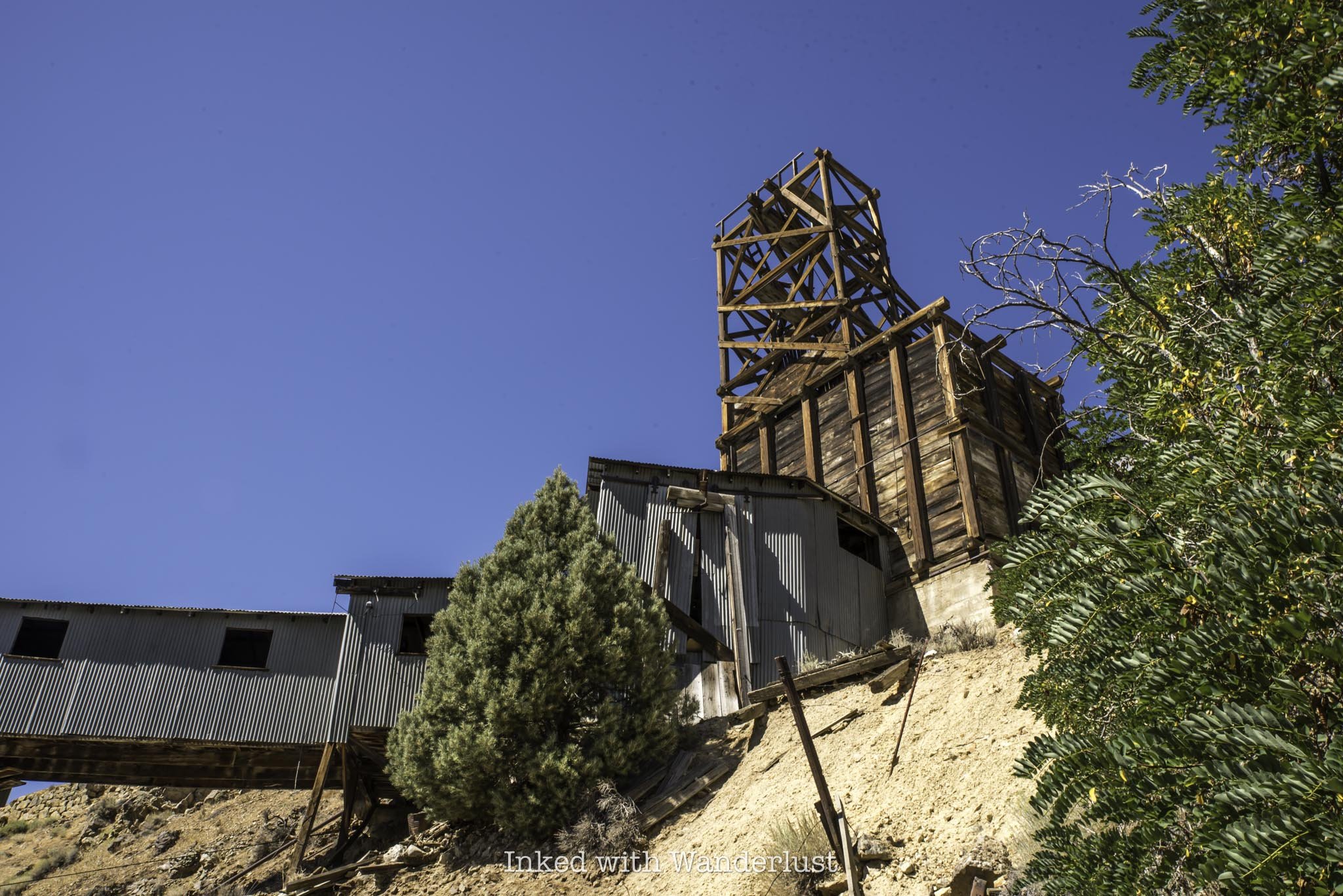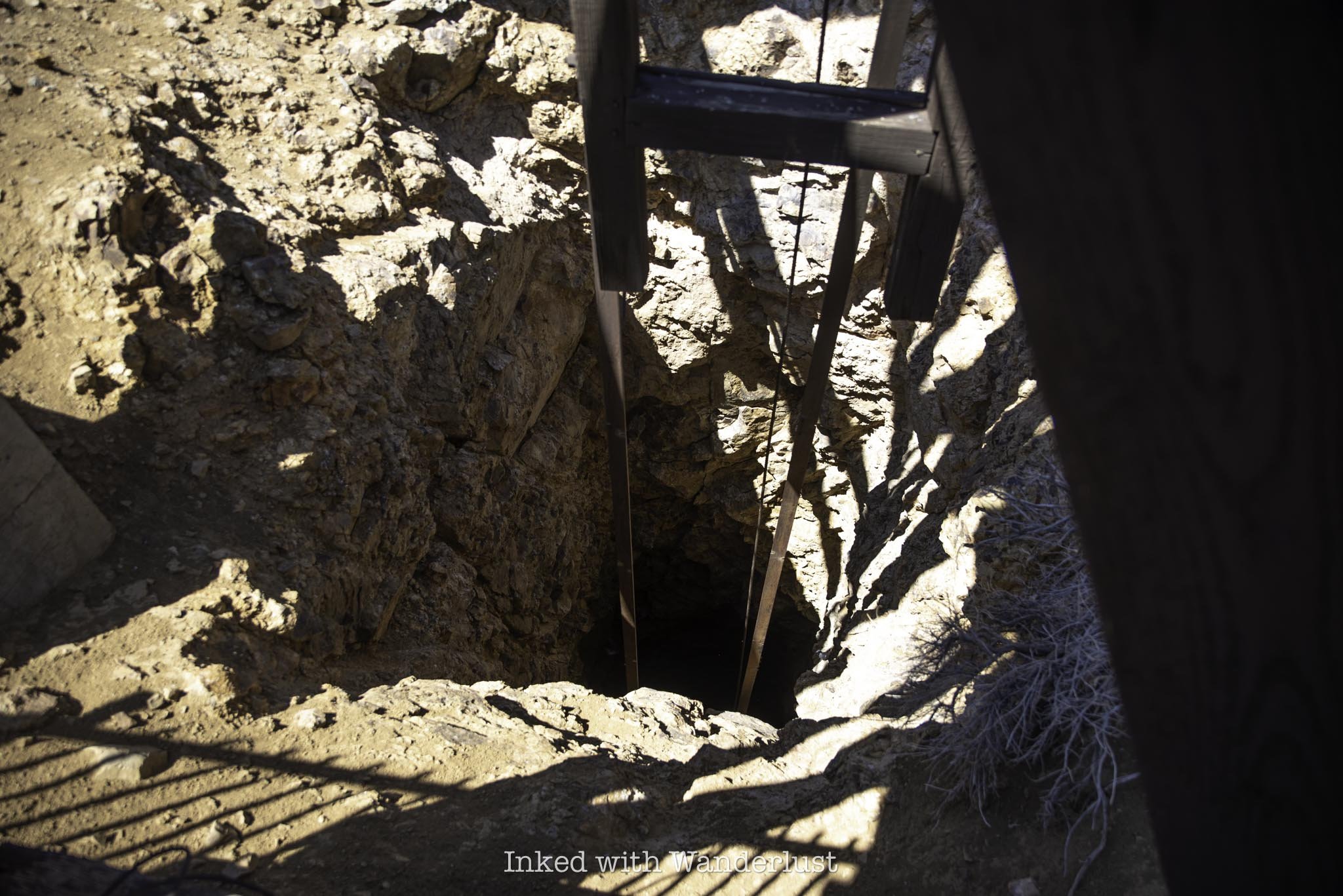Hike the Fire Wave Trail at Valley of Fire State Park
Located in the northern section of Valley of Fire State Park along White Domes Road lies one of the park’s most fascinating and photographed formations - Fire Wave…
Disclosure: This post contains affiliate links. If you make a purchase through these links, I may earn a small commission at no additional cost to you. I only recommend products or services that I believe will add value to my readers.
Located in the northern section of Valley of Fire State Park along White Domes Road lies one of the park’s most fascinating and photographed formations - Fire Wave. Best of all, it doesn’t require a whole lot of effort to see!
Known for its ultra-colorful swirls of red, white, and orange Aztec sandstone out-crops, Fire Wave offers park goers a picturesque, wavy formation resembling a fiery sunset. Due to this, it’s become one of the most popular attractions in the park.
If you’re heading out to Valley of Fire, Fire Wave should most definitely be on your list. There are a few things you’ll need to know before going, however. In this post, I’ll cover topics such as trail closures, parking, what to expect and more. Let’s get into it!
Trail Stats
Location: Valley of Fire State Park (north section)
Fee: None for the trail, but standard park entry fees apply
Open: Between October and mid-May
Family Friendly: Yes
Cell Service: Spotty (based on Verizon service)
Restroom: None (nearest is at White Domes Day Use Area to the north or Rainbow Vista to the south)
Parking: Two lots at the trailhead
EV Stations: None
Difficulty: Easy to moderate (depending on temperature)
Popularity: High
Mileage: 1.3 miles, out and back
Time: 30 minutes to one hour
Condition: Maintained and easy to follow
Features: Colorful sandstone formations
Best Viewed: Either sunrise or sunset
Pets: Not allowed
Drones: Not allowed
Hazards: Heat exposure, potential wildlife encounters, and rolled ankles
My Visit(s): November 2024
Is Fire Wave Trail Open?
The temperature at Valley of Fire State Park often exceeds tripe digits, necessitating the need to close select trails during parts of the year. This is done to protect visitors from heat-related illness and/or death, as the affected trails are exposed and pose significant danger to hikers. Fire Wave is one of them.
Even though it’s one of the shorter hiking trails in Valley of Fire, it’s mostly all rock and radiates heat like you wouldn’t believe. Thus, Fire Wave is on the annual list of closures, which take place between mid-May and the beginning of October.
If your visit coincides within that timeframe, you won’t be able to see Fire Wave, unfortunately. There is still plenty more to see and do, though. You can read my posts about how to spend a few hours at the park during summer and my pick of ten Valley of Fire short hikes, many of which are open year-round.
Fire Wave Parking and Getting There
Getting to Fire Wave trailhead (and around the park in general) is easy. There are only two entrances (west and east) and two main roads in the park. Valley of Fire Scenic Byway, the park’s main artery, runs between the two entrances.
To the north is Mouse Tank Road, which itself becomes White Domes Road just beyond Rainbow Vista Trailhead. This road dead ends at White Domes Day Use Area, which is also the trailhead for White Domes Loop, another hugely popular trail.
No matter which entrance you use, simply keep driving until you reach the turnoff for Mouse Tank Road and continue straight. A couple miles after it becomes White Domes Road, you’ll arrive to the parking lot on the left side of the road.
There are two gravel lots where you can park for Fire Wave, one on either side of the road. They’re both gravel and dirt, and are large enough to accommodate many vehicles. Sunrise and (especially) sunset are times when parking can be most competitive, as those are Fire Wave’s most popular times.
Even though the lots are large, it’s best to arrive early, especially during the trail’s peak visitation timeframe of October through mid-May. As the day progresses and the park gets busier, Fire Wave and nearby White Domes are usually the first lots to fill.
Fire Wave Trail
To find the start of the Fire Wave Trail, look for the huge sandstone rock in the picture above and head towards it. You’ll start out in a field condensed in sagebrush, with a sandy trail cutting through it.
The trail is mostly maintained, but does have spots where it seemingly vanishes. Don’t fret, though, as there are also trail markers indicating the correct path. So even in the spots where there doesn’t appear to be a trail, it’s still easy to follow.
As you get up against the huge sandstone rock, the trail turns to dirt and begins a slight descent to the right. You’re still cutting through heavy sagebrush fields, but you’ll also start to see more of the unique sandstone rock formations Valley of Fire is famous for.
When the trail flattens out again, it’ll become sandy once more and will be lined with rocks, making it incredibly difficult to get lost. You’ll now see far more sandstone rock than sagebrush and the first teasers of Fire Wave and its color patten will become visible.
As you start seeing those wavy colors on the rocks, the trail will go from sand/dirt to pure sandstone. From here, there’s no proper trail and you’ll simply keep an eye out for the trail markers and follow them. Don’t worry, each one is easy to spot from the first.
From the last trail marker is where you’ll get your first glimpse of Fire Wave. Simply keep descending on the sandstone rock until it comes into full view. Once you’re there, you’re free to explore at your leisure.
Pictures do no justice to how beautiful Fire Wave is. As stated above, sunrise and sunset are the best times to view it, as that’s when its colors really pop. Even during mid-day, though, like when I went, it’s still a sight to behold.
The swirling reds, oranges, and whites blend so perfectly with one another. The leading lines make it a wonderful photography subject, or to simply stare at in admiration. Either way, you need to see Fire Wave in person.
At Fire Wave is where the official trail ends. Simply turn back around and head in the same direction you came to your car. From there, continue driving north to hike White Domes Loop, an equally beautiful trail, or drive south to Mouse’s Tank Trail through Petroglyph Canyon. Or…
Seven Wonders Loop Extension
Just beyond Fire Wave, you’ll notice a pile of rocks with a sign atop indicating the end of the Fire Wave Trail. That same sign also marks the extension of the Seven Wonders Loop, if you have energy left over, that is.
Continuing will add another mile or so to your hike and will take you on a complete loop that’ll eventually spit you out to where you’ve parked. It’s definitely worth doing, provided it isn’t scorching that day and you’ve come prepared.
It’s a moderate-level trail and can be easy to lose at times. Due to that, I recommend coming prepared with a downloadable GPS map, like what AllTrails provides. Along the way, you’ll see several Valley of Fire attractions, such as Pastel Canyon, Crazy Hill, Thunderstorm Arch, and more.
Whether you do the full loop or just stick with Fire Wave, you’re sure to have a great time either way. Just remember to steer clear of this trail during the summer months and adhere to the trail closures. It isn’t worth the risk.
If you do find yourself here during the closure period, check out the following trails and attractions listed below, as they’re open all year:
6 Best Northern Nevada Pumpkin Patches and Corn Mazes (Reno, Sparks, and Beyond)
There are quite a few aspects of fall people love - cooler temperatures, beautiful gold and orange colors taking over the foliage…
Disclosure: This post contains affiliate links. If you make a purchase through these links, I may earn a small commission at no additional cost to you. I only recommend products or services that I believe will add value to my readers.
There are quite a few aspects of fall people love - cooler temperatures, beautiful gold and orange colors taking over the foliage, and pumpkin spiced-flavored everything, to name a few. The biggest, however, seem to be pumpkin patches and corn mazes.
Throughout Northern Nevada, there are numerous popular farms that open their properties to the general public every fall season. They each offer several activities aside from pumpkin picking, including corn mazes, tracker rides, haunts and more.
In this post, I’m going to list six of the best pumpkin patches in Northern Nevada. In each listing, I’ll discuss their locations, operating dates/hours, prices, activities offered, parking situation, and other pertinent information. Let’s get into it!
1) Renner Farm - Smith Valley
Location: 2493 NV-208, Smith Valley, NV
Price: None listed
Operating: Tuesday - Sunday beginning September 27, 2025
Parking Available: Yes
Renner Farm in Smith Valley, which is just a short drive from Yerington or Gardnerville, respectively, is open year round and typically features a variety of fresh produce, honey and farm-raised eggs. In the fall, however, this family-operated farm opens its pumpkin patch and themed corn maze to the public.
The corn maze has a different theme every year and usually has some kind of challenge or mystery involved. They don’t list prices on their website but I have been there more than a few times and it’s typically just a few bucks per person. Corn maze hours are as follows:
Tuesday - Thursday: 12-5pm
Friday - Saturday: 12-9pm
Sunday: 12-7pm
Aside from the corn maze and pumpkin patch, Renner Farm also offers hay rides, baked goods for sale, an annual harvest party and in the past, they’ve offered an evening haunt version of the corn maze. No word on if that’s happening this year, though. Afterwards, be sure to stop and hike through nearby Wilson Canyon.
2) Corley Ranch - Gardnerville
Location: 859 US Highway 395 North, Gardnerville, NV
Price: $8 - $12 per person
Operating: Daily beginning September 27, 2025
Parking Available: Yes
The annual harvest festival at Corley Ranch officially begins on September 27 and runs daily between 10am and 5pm throughout the month of October, before concluding on October 31. General admission is $8 on weekdays and $12 on weekends.
Included with your admission is the corn maze, farm animal petting zoo, 9-hole mini golf, straw maze, pig races, hay slide and hay wagon ride. It does NOT include the giant sling shot ($1), train rides ($2), and pumpkins (costs vary by size).
Corley Ranch is one of the stand-out pumpkin patches in Northern Nevada as they offer several unique activities that most don’t. They also offer a variety of food vendors on the weekends, negating the need to leave early.
3) Lattin Farms - Fallon
Location: 1955 McLean Road, Fallon, NV
Price: $15.23 per person (combo ticket)
Operating: September 27 and select dates throughout October 2025
Parking Available: Yes
Lattin Farms’ festival harvest has been held in Fallon annually for years. They’re specifically known for their frustratingly challenging corn maze, where you could spend hours (maybe that’s just me) trying to find your way out.
Other than the corn maze (which is worth the visit all its own), Lattin Farms offers a huge selection of pumpkins, cow train rides, hayrides, and a craft fair. Unlike the other Northern Nevada pumpkin patches on this list, their fall festival is only on select dates in 2025. They are:
9/27
10/4
10/11
10/18
10/24
10/25
The majority of the activities are offered between 10am and 6pm, with the corn maze remaining open until 8pm. The craft fair features a variety of vendors offering unique and hand-crafted goods and food. You can pre-purchase combo tickets at their website.
4) Ferrari Farms - Reno
Location: 4701 Mill Street, Reno, NV
Price: Varies by activity
Operating: Daily beginning September 27, 2025
Parking Available: Yes
Nestled along the Truckee River, Ferrari Farms is a Reno landmark and are known for their pumpkin patch, sunflower fields, corn maze and seasonal events. Their pumpkin patch runs daily from September 27 to October 31, 10am-8pm (Sun - Thurs) and 10am-10pm (Fri and Sat).
Ferrari Farm doesn’t charge an admission fee. Rather, you simply pay per activity you choose. Prices are as follows:
Corn Stalks: $10
Hayride: $6 or $25 for up to five people
Corn Maze: $10
Corn Walk: $6
Additionally, food vendors are featured at the farm on select dates (you can view those and other events here). This includes Grindz, a popular coffee vendor which serves handcrafted, seasonal drinks. They’ll be present at Ferrari Farm every weekend throughout the season.
5) Andelin Family Farm - Sparks
Location: 8100 Pyramid Highway, Sparks, NV
Price: $13 - $18 per person (base price)
Operating: Wednesday - Saturday, beginning September 24, 2025
Parking Available: Yes
Andelin Farm is the mecca of Northern Nevada pumpkin patches, with over 30 attractions included with your general admission ticket. When you include their premium experiences, there’s literally something for everyone here.
Base price tickets are priced between $13 and $18, dependent on day, and include access to the pumpkin patches (yes, plural), wagon rides, bumpy buggies ride, mini zip line, slide mountain, digging sand pit, petting farm, straw bale maze, duck race, and more.
For an additional charge, you can also take part in their nighttime activities, which include Zombie Paintball and Corn Creepers, their haunted corn field, touted as Nevada’s largest haunted attraction with over a half-mile of scares!
Zombie Paintball starts at $15 and tops out at $27, dependent on day. Corn Creepers also starts at $15, but tops out at $32. Tickets for both (as well as general admission) can be purchased ahead of time online.
6) Pumpkin Patch Express - Virginia City
Location: 166 F Street, Virginia City, NV
Price: $8 - $26, per person
Operating: On select dates throughout October 2025
Parking Available: Yes
Every year, the Virginia and Truckee line offers visitors train rides to a pumpkin patch in Virginia City, which is considered one of the most haunted cities in all of Nevada. Don’t worry, there won’t be any frightening spirits on this family-friendly outing.
Tours begin at the historic 1870 Train Depot. You can purchase tickets on site but to not risk the disappointment of them being sold out, it’s best to purchase them online (which you can do here). Tours depart at 11:20am, 1:20pm, and 3pm on the following dates:
10/11
10/12
10/18
10/19
10/24 (5pm only)
10/25
10/26
This is a great activity in Virginia City that kids and adults alike will enjoy. While you’re in Virginia City, be sure to complete your visit by taking tours of Mackay Mansion and the historic Chollar Mine!
REVIEW: Clear Kayak Tour to Bonsai Rock with “Clearly Tahoe”
After conducting my research, I settled on booking with the ‘Clearly Tahoe’ outfit, specifically their clear kayak tour to Bonsai Rock…
Disclosure: This post contains affiliate links. If you make a purchase through these links, I may earn a small commission at no additional cost to you. I only recommend products or services that I believe will add value to my readers.
In recent years, my wife and I have been into giving experiences to our family and friends as gifts versus physical items. For Father’s Day last year, I took my Dad to a Billy Joel concert in Las Vegas. This year, I decided to book us a kayak tour, as we’ve always talked about doing that.
After conducting my research, I settled on booking with the ‘Clearly Tahoe’ outfit, specifically their clear kayak tour to Bonsai Rock. They’ve been in business since 2016, have an impeccable safety record and are the originators of the “clear kayak” concept.
In short, the tour was amazing! In this review, I’ll cover information such as the price, where you leave from, what to expect, and other pertinent information like who’s the tour for, requirements, etc. Let’s get into it!
Tour Information
As stated above, I booked their Bonsai Rock clear kayak tour. My Dad and I, combined, exceeded their weight requirement for the double kayak so I booked us two singles at a cost of $134 each (you can view current pricing here).
This tour is suitable for total beginners, which is good because my Dad had no kayaking experience prior to this and the only experience I had was when I kayaked to Fannette Island in Emerald Bay, also in Lake Tahoe.
This is a guided tour conducted at what I felt was a reasonable pace and is around 2.5 total hours, with about 1.5 hours of that being spent in the kayak. It is NOT pet friendly (though they do offer a pooch-friendly version), the minimum age is six, and the weight limit is 375 pounds per kayak.
Items to Consider Bringing
Clearly Tahoe Meet-Up Location & Parking
Regardless of which tour you book, you’ll meet up with the group at one of Clearly Tahoe’s offices. For the Bonsai Rock tour, you’ll meet at their Incline Village location (pictured above) at the following address:
893 Tahoe Blvd. Suite 800 (across from Starbucks)
Group members must meet at the office thirty minutes prior to the start of the tour. Tours leave promptly and will not wait, so make sure you’re on time. Also be sure to fill out the waivers online when they’re emailed to you, as this helps to expedite the check-in process.
There’s a parking garage behind the building they encourage you to park in, but I was also told it wasn’t a problem to park in the lot out front. Just know it gets hectic here in the summer so if your tour is for later in the day, just park in the garage to save yourself a battle.
The Clearly Tahoe office is located just across from Starbucks and is in the same building as the Sage Leaf Cafe restaurant. When you arrive, you’ll fill out your waiver (if you haven’t already), be given a goodie bag, a dry bag, and be fitted for a life vest.
In the goodie sack you’re given you’ll find two boxes of water, a couple Nature Valley granola bars, and a towel to use to wipe the sand out of your clear kayak. Not sure if these are the exact items given every time, but that’s what was given to my Dad and me.
Speaking of water, make sure you’re hydrated going into the tour and stay hydrated throughout it. You’re in a higher elevation in Tahoe and thus, more susceptible to dehydration, sunburn, etc. I found out the hard way when my calf cramped up badly while getting out of the kayak. It’s no joke.
Once everybody has checked in, your driver (ours was Dave) will escort the group to the Clearly Tahoe shuttle van to take you to Sand Harbor Beach State Park - where your tour officially begins. There was 8 in our group and there was just enough room in the shuttle for us.
Our driver, Dave, got us there safely and without incident. The whole trip took about ten minutes. On the way, he showed us properties owned by big names such as Steve Wynn and Larry Ellison.
Sand Harbor - Where Your Tour Begins
The clear kayak tour to Bonsai Rock begins at the main beach at Sand Harbor State Park. You will NOT need to make reservations to access Sand Harbor, as Clearly Tahoe takes care of this for you as part of your tour.
You’ll be dropped off in the parking area, near the beach access. This is also where your tour guide(s) will meet you. Ours was Julia and while we didn’t find out until after the tour, we were her very first tour group ever.
After the initial introduction, you’ll be given a final opportunity at using a restroom and be shown where to meet afterwards. There’s a rug-type-thing leading to the water’s edge. The end of which is where you’ll meet.
There, you’ll be given a quick rundown on how to operate your kayak. If you’re a total beginner, you won’t have much of an issue. My Dad didn’t have any experience at all and picked up on it quickly. It’s simple - paddle left to go right, and paddle right to go left. Alternate left and right to go straight and paddle in reverse to go backwards.
Getting into and out of the kayaks was probably the trickiest part of the whole experience, but even that wasn’t bad. The guides will assist you to a point, but you’ll need to be able to lower and raise yourself.
Within a few minutes, everyone in our group had the basics down. Seasoned pros we were not, but everyone was able to keep a steady pace and not lag behind too much. Julia set the pace in front on her peddle-kayak while another guide remained in the back of the group for support.
The kayaks were closer to a canoe than a traditional kayak and were touted by the guides as “extremely difficult” to tip over. I lightly tested this claim by moving around somewhat aggressively and while the kayak did rock a bit, it remained mostly steady.
I booked the first tour of the day (8am) so there wasn’t much boat traffic on the lake. Which was nice, as it kept the waves to a minimum and enabled us to fully appreciate that glass-like clarity Lake Tahoe is known for. If it’s your first time kayaking, I recommend doing the same.
On this tour, you’ll be kayaking along Tahoe’s infamously serene east shore. For now, the water perspective is the only way to fully view this specific section of the east shore. The Tahoe East Shore Trail currently ends at Sand Harbor, but will eventually run through the entire stretch.
About 10-15 minutes into your tour is when the underwater granite boulders will start coming into view through your clear kayak. Some are dozens of feet beneath you while others appear to be right underneath the surface.
As you approach Bonsai Rock, you’ll come to a cluster of huge granite boulders you’ll need to negotiate. Here, your tour guide will take “action photos” of you as you pass through the boulder field.
Getting through the boulder field is easy, though you will likely scrap the bottom of your kayak on one. Don’t sweat it if you do, as it’s nearly impossible to crack or puncture them (according to our tour guide, anyway).
When you get through the small boulder field, Bonsai Rock will come into view on your left. You’ll immediately notice it, as it’s distinguished by several trees growing out of various cracks at and near the top.
You’ve likely seen Bonsai Rock on Tiktok and Instagram as it’s currently the second most photographed spot in all of Lake Tahoe (in case you were interested, Emerald Bay is the most photographed spot on the lake).
The group lingered around Bonsai Rock for several minutes, allowing time for light exploring and photo taking. Julia, our guide, climbed on top of the rock and took “from above” photos of each person in the tour group.
Once everyone had gotten their photo taken, the tour continued slightly past Bonsai Rock to a beautiful unnamed cove. It was here that I wish we had time to swim around because that cove looked so peaceful.
After a few more minutes of exploring, we were guided back to the beach at Sand Harbor. From the beach to Bonsai Rock was about one hour of kayak time. This included time for pictures and exploring the area around Bonsai Rock and that cove.
From that cove back to the beach, it took me just shy of thirty minutes of kayaking at an even pace, with a couple of stops here and there for water. As a beginner, I didn’t feel like this tour was too much. In fact, it was about the right amount of time to get my technique and pace down without overdoing it.
When we got back to the beach, Julia air-dropped the photos she took from her phone to ours. This was included in the tour price, by the way. Most places charge you extra for photos/video. It was nice to not get nickel-and-dimed by an outfit.
Final Thoughts…
I never got the sense that I was being rushed through the tour, but I do wish we had more free time to explore around Bonsai Rock (this is literally the only negative I can think of). I did hang back for a few minutes on my own and no one said anything, though.
For a beginner, I believe there is no better kayak tour to sign up for. The tour guides did a fantastic job helping everyone nail down the basics and help them keep pace. If Julia ever did get annoyed with those who were slagging behind, she never showed it.
The price is steep, sure, but the value is there. You’re led by experienced and patient guides, get to experience Lake Tahoe’s clarity up-close-and-personal, and you’ll get unmatched views of Tahoe’s gorgeous east shore and Bonsai Rock.
If you’re considering doing a clear kayak tour in Lake Tahoe, I highly recommend Clearly Tahoe. Be sure to tell them I said hello when you do!
If you’re looking for more to do after your kayak tour, consider the nearby hike to Monkey Rock or take a beach day at Round Hill Pines!
How to Visit and Tour Hidden Cave in Fallon
Hidden Cave, located within Grimes Point Archaeological Area on the outskirts of Fallon, is a prehistoric archaeological site containing thousands…
Disclosure: This post contains affiliate links. If you make a purchase through these links, I may earn a small commission at no additional cost to you. I only recommend products or services that I believe will add value to my readers.
Hidden Cave, located within Grimes Point Archaeological Area on the outskirts of Fallon, is a prehistoric archaeological site containing thousands of years of human and geological history.
Pounding waves from ancient Lake Lahontan, a massive body of water in the last ice age, carved and developed the cave some 20,000 years ago. As the lake receded, the cave became exposed and started being used by animals.
Around 3,800 years ago, human activity began in the cave, as the Toi-Ticutta peoples used the cave not as a dwelling, but as a cache site. Pits were created, storing a variety of tools and supplies for safe keeping.
Today, the cave is open to the public for twice-monthly guided tours. During the tour, your guide educates you on the cave and area, taking you along a trail pointing out petroglyphs, additional caves, tufa formations and more.
Trail Stats
Location: Fallon, Nevada
Fee: None
Open: Trail is open year-round. Hidden Cave only accessible via guided tour, every 2nd and 4th Saturday of each month
Family Friendly: Yes
Cell Service: Good (Verizon)
Restroom: At the visitor center and trailhead
Parking: Large dirt/gravel lot
EV Stations: None
Difficulty: Easy to moderate
Popularity: Low to moderate
Mileage: 0.7 mile loop (not counting optional spur trails)
Time: Two hour tour
Elevation: 6,700 feet
Condition: Well maintained and easy to follow
Features: Multiple prehistoric caves, hundreds of tufa formations and ancient petroglyphs
Best Viewed: Spring or fall
Pets: Allowed on trail, but not inside Hidden Cave
Drones: Allowed in area
Hazards: Potential rattlesnake encounters, head injuries in the cave and exposed trail
My Visit(s): April 2025
Churchill County Museum - Hidden Cave Tour
All public tours to Hidden Cave begin at the Churchill County Museum in downtown Fallon. Tours are guided by a Bureau of Land Management (BLM) representative on the 2nd and 4th Saturday of each month, with the exception for holiday weekends. You can view current dates here.
You’ll want to arrive by 9:15am, as orientation begins promptly at 9:30am. There is no fee to enter the museum or to take the tour, nor are there any parking fees. The address for the museum is:
1050 South Main Street, Fallon, Nevada
If you can, I recommend arriving to the museum even early than 9:15 to give you more time to explore the it. For being a small museum, it’s packed with exhibits of Native American and pioneer history.
I believe they open at 9am on tour days, which gives you time to check out the exhibits (though not enough to see it all). If you don’t arrive early, consider heading back to the museum after the Hidden Cave tour.
When orientation begins, your tour guide will make their introduction and give you a brief breakdown of what to expect on the tour and provide some historic context of what you’ll see.
Then, you’ll watch a roughly 20-minute video which dives deeper into the Native American history of the cave, how it formed and what archeologists eventually discovered in the cave.
At the conclusion of the video, your guide will answer any final questions from the group and provide everyone time to use the restroom. You’ll then return to your vehicle and caravan to the cave.
Hidden Cave Trail
You can follow your tour guide there or simply punch “Hidden Cave” into your GPS of choice and go. The cave is about 15-minutes from the museum. When you turn left onto the dirt road, keep left at the junction. Going right will take you to Grimes Point.
The dirt/gravel road is riddled with potholes, but my sedan made it through just fine. Just take it slow if you need to. You’ll soon arrive at the trailhead. There, you’ll find a restroom (vaulted) and informational signs.
Once everyone in the group has arrived, your guide will again explain what to expect. To avoid the rocky portion of the trail, you can opt to head up the direct path to the cave and wait for the rest of the group there.
However, if you can, I recommend doing the entire trail. It is rocky, but only at certain points and is easily navigable, in my opinion. You’ll go right at the trailhead and the first feature you’ll see are petroglyphs on multiple rocks.
Petroglyphs
Your guide will explain the history of petroglyphs in the area and what ancient Indians may have been trying to convey with them. You’ll find many more at nearby Grimes Point, which I highly suggest stopping there after the tour.
From here, you’ll continue up the trail. Feel free to take your time and stop to take as many pictures as you want. The tour guide was good about waiting for everyone to get the next point before speaking.
Picnic Cave
The next stop on the Hidden Cave trail is another cave called Picnic Cave. This cave isn’t closed off like Hidden Cave is and you can visit it anytime you like, with or without a tour guide.
The best feature of this cave is the large amount of tufa formations around the entrance and roof. If you don’t know, tufa is a porous sedimentary rock composed of calcium carbonate or silica, and is formed under water.
In this case, the tufa in this area formed when Lake Lahontan covered this entire region. Keep in mind, Hidden Cave is at 6,700 feet elevation. Picnic Cave isn’t much lower. Literally all of this was submerged at one point.
Another great example of tufa formations is a couple hours away in Lee Vining, California, at the Mono Lake Tufa Natural Reserve. However, the examples here are more in abundance, covering nearly the entire cliffs and mountainsides around you.
A Quick Rest with a Great View
After Picnic Cave, it’ll be an uphill slog until you reach the entrance to Hidden Cave. Due to this, the tour guide will stop the group a couple times to allow time for rest. At the second stop, you’ll have a commanding view of what was once marsh land.
Take a look around you when you’re up here. You’re at around 6,500 feet elevation at this point. You’ll notice the cliffs above you that are easily 7,000 feet and up with more tufa formations on them.
Remember, tufa only forms under water with the right amount of minerals. Photos can’t do it justice, but getting that perspective from here really shows just how massive and deep Lake Lahontan was.
Hidden Cave
After a brief rest, the group will continue up another incline until you reach the entrance to Hidden Cave. The entrance is small, requiring all but small children to crotch down to get through it.
For context, I’m 5’9 and I had get down pretty low to get in. For anyone six feet or taller, I would imagine this being challenging for them. When you get through the entrance, keep your head down for a few feet as there are low-hanging rocks.
Once you get past the first few feet, you’ll arrive to an open chamber on a wooden boardwalk. As you can see in the photo above, you’ll be able to fully stand once inside, no matter your height.
In the video at the museum, it was stated you could fit two NBA-sized courts in the cave and have room for spectators on the side. I’m not so convinced of that, as it didn’t appear to be that roomy. It was still impressive, though.
The amount of walkable space on the boardwalks is small and you cannot walk on the cave floor at all. So if you’re part of large or even semi-large group (like I was), it can be tough to navigate.
Once folks start leaving, though, you’ll have more elbow room to explore. My tour guide said he would stay for as long as anyone wanted to explore, so there was no rush. I simply waited for most of the group to leave to look around.
On the walls in the lower portion of the cave are markers. Some mark the age of each layer of rock you’re looking at and others indicate where certain animal fossils were found and their age.
Spend some time looking at these markers and getting photos, then make your way out of the cave. The entrance is also the exit. From here, the tour is over and you’re free to explore on your own.
Side Quest - Burnt Cave
When the tour was over, our guide tipped me off to another cave to check out that also had pictographs on the walls. To get there, head back down the trail until you reach the junction you see in the photo above.
Going right (where you just came from) will take you back to Hidden Cave. Take the trail on the left. You’ll start winding your way back down the mountain and see more examples of tufa formations and dramatic cliffs on the way.
After about a quarter-mile, at trail marker twelve, you’ll see a series of wooden steps leading up an incline. When you get to the top, Burnt Cave will come into view. It’s more an indent into the mountain than a cave, but still cool to see.
This cave was excavated in 1971. Looking at the cave, you’ll notice the red pictographs that were unfortunately partially covered by modern vandalism. By the way, Hidden Cave is locked behind a gate now for that very reason. It was also vandalized back in 2014.
Go a little further up the trail to the other side of Burnt Cave to see even more tufa formations. The ones over here are even crazier than those at Picnic Cave. One almost looks like a mushroom-like formation.
The trail keeps going from here, but I didn’t go any further. To get back to your vehicle, simply head back down the trail. You won’t need to climb back up to Hidden Cave as the trail splits again towards the parking lot. Take a right at the junction to get there.
From here, I recommend driving down the road to Grimes Point and taking time to explore that. The amount of petroglyphs along that short trail is mind boggling. For places to eat, I recommend Pho, The Slanted Porch, and Middlegate Station.
If you’re on a road trip heading towards Interstate-80 east, you can make another stop at Lovelock Cave (near Lovelock) and Thunder Mountain Monument in Imlay. Heading towards Yerington? Consider stopping at Fort Churchill or hike the Wilson Canyon Loop.
JEREMIAH 29:11
The 6 Best Hotel Resorts in Reno in 2025 (From a Local)
More and more, Reno, long known as the biggest little city in the world, has been seeing a steady rise in visitation rates in recent years….
Disclosure: This post contains affiliate links. If you make a purchase through these links, I may earn a small commission at no additional cost to you. I only recommend products or services that I believe will add value to my readers.
More and more, Reno, long known as the biggest little city in the world, has been seeing a steady rise in visitation rates in recent years. While Reno has always hosted a decent amount of annual travelers, it has traditionally been the casino crowd and those on their way to either Las Vegas or nearby Lake Tahoe.
With its recent push to clean up its image and to offer visitors more than just gambling, Reno has slowly been becoming a destination in its own right and not just a stopover or a place to spend a quick weekend. The city now offers family-friendly activities such as museums, hiking trails, an array of festivals, delicious local eateries, a river walk, and more.
In order to host its millions of visitors, Reno also offers an array of hotels. They range from your standard one or two level motels and all the way up to resort-style casino hotels. This post aims to provide you with my top six recommendations for the latter.
I've lived in the Reno area for the last 17 years and have stayed in many of Reno's best (and not-so-best) hotels. If my family or friends were going to visit Reno for a few days, these are the six I would recommend to them.
1. Atlantis Casino Resort Spa
With more than 800 guest rooms between its three hotel towers, the Atlantis Casino Resort Spa has been one of the top ranked and best resorts in Reno since opening in 1996. The property features a variety of amenities, such as award-winning restaurants, table games, hundreds of slot machines, a wonderful spa, fitness center, indoor pool, and more.
However, the Atlantis shines in presentation, with its exterior showcasing a harmonious blend of modern architecture and tropical-themed design elements. The three hotel towers, with their sleek lines and expansive glass facades, are complimented by Greco-Roman columns. The iconic Sky Terrace, an enclosed walkway spanning Virginia Street below, adds a striking visual highlight.
The interior spaces are adorned with warm woods, plush carpeting and rich marble accents, creating a welcoming and upscale atmosphere. Additional, there's no shortage of dining options, as the Atlantis features a buffet and a number of traditional sit-and-serve restaurants, including the Atlantis Steakhouse, which earned the prestigious AAA Four Diamond designation.
The rates at Atlantis tend to be higher than the remaining four resorts on this list, which has always surprised me given the fact that Atlantis is a fair distance away from downtown Reno, where many of the city's most popular attractions are located.
If you're in town for an event at the Reno-Sparks Convention Center, Atlantis should be your go-to as it's one of the closest luxury hotel at just under an easily-walkable half-mile away. Additionally, they offer free airport transfers to and from the nearby Reno-Tahoe International Airport.
2. Grand Sierra Resort
The Grand Sierra Resort has remained a prominent fixture in Reno's skyline since opening in 1978. Its towering 27-story structure, with white walls and golden windows, along with the distinctive "GSR" red emblem, reflects a modern design that exudes elegance and grandeur.
While a fair distance from the heart of downtown Reno, Grand Sierra's relative remote location gives it a feeling of being on an island of its own. With an array of dining options, expansive gaming options (including sports book), bars, concert hall, shopping opportunities, spa, fitness center, movie theatre, arcade facility, and bowling alley, leaving may not be necessary.
The room rates are often reasonable, but can jump at times if there's an on-site concert with a big name artist or some other area event going on, such as Hot August Nights.
I've stayed here quite a few times and have never had an issue with cleanliness or service from the staff. The staff here are generally friendly and go out of their way to ensure a flawless guest experience.
Those traveling with kids will appreciate the lower level of the property, which features an extensive arcade-game facility, in addition to a movie theatre, bowling ally, brand-familiar eateries, an escape room, and more.
3. Whitney Peak Hotel
Located in the heart of downtown Reno and mere steps from the infamous Reno Arch, the Whitney Peak Hotel takes a refreshing step away from the traditional casino-heavy environment of downtown Reno by not having one. That's right, there isn't a single table game or slot machine on property.
Some may view that as a negative but those with small children will likely appreciate their quiet and smoke-free lobby. One major downside, though, is that the Whitney Peak Hotel doesn't feature a pool. That's the unfortunate trade-off.
Even without a pool, Whitney Peak is more than worth staying at. The property's location is unmatched, placed just steps away from the Reno Arch and within walking distance of several downtown favorites, including the National Automobile Museum, Truckee River Walk, Reno Events Center, Greater Nevada Field and more.
The hotel leans heavily into the active lifestyle (obvious, given its Mount Whitney namesake). One of their main amenities is their indoor rock climbing facility and fitness center, but most immediately take notice of the 164-foot tall exterior climbing wall, which ascends the side of the 16-story hotel tower.
Unlike other resorts on this list, Whitney Peak Hotel isn't exactly flush with dining options but don't fret, you're within walking distance of several amazing local restaurants (including a few of my personal favorites). These include Sierra Street Kitchen, Pine Street Biscuits, and the Depot Craft Brewery & Distillery.
4. Silver Legacy Resort Casino
If your goal is to stay in the heart of Reno in a hotel that's quintessential downtown, then Silver Legacy Resort Casino is for you. It's located just steps from the infamous Reno arch, offers nearly 90,000 square feet of gaming space, and lights up the downtown area with its signature green and gold hues.
Together with the El Dorado and Circus Circus, known collectively as THE ROW, Silver Legacy offers many dining options in-house, with others included with the neighboring properties. These include a Ruth's Chris Steakhouse and not one, but two, restaurants by famed chef Gordon Ramsay.
Accommodations at the Silver Legacy are designed with comfort in mind. Guests can choose from a variety of rooms and suites, each featuring modern furnishings, plush bedding, and flat-screen TVs. Many rooms offer stunning views of the Sierra Nevada Mountains or the bustling cityscape, providing a serene retreat after a day of exploration.
Rates fluctuate wildly here, more-so than most hotels in the area (this also includes its neighboring properties making up THE ROW) but unless there's a big name performing that weekend or there's a city-sponsored event taking place, nightly rates generally remain under $150.
5) J Resort
J Resort is the newest resort-style hotel offering in Reno. Its parent company, Jacob Entertainment, purchased the now former property of the Sands Regency last year and committed millions of dollars worth of upgrades and additions to not only the hotel, but its surrounding area as well.
Aside from the amenity and dining upgrades, the best one yet is the installment of the Neon Line. The Neon Line is an outdoor art-walk displaying several art installations once featured at the popular Buring Man event. You can walk it any time, but at night is where the art pieces truly come to life with lighting and musical effects.
As far as rooms go, J Resort offers guests spacious and thoughtfully designed rooms. Each accommodation features contemporary furnishings, including pillow-top mattresses and floor-to-ceiling windows that provide stunning views of the city or surrounding mountains. Modern amenities such as flat-screen TVs, USB charging stations and kitchens (in select rooms) ensure a comfortable stay.
This is most recent property my wife and I stayed at. We had an overall pleasant stay, but since the property's renovation was still in progress we weren't able to enjoy the pool or partake in all of the dining options (they have another restaurant opening sometime this year).
However, we paid less than $100 a night (the resort fee included) for our room and the dining options we did experience, which included their cafe "Hanna's Table" and their signature steakhouse, "J Paul's", were nothing short of stellar.
READ ALSO: “My Honest Review of J Resort: A Downtown Reno Hotel”
6. Peppermill Resort Spa Casino
Nestled in the heart of Reno, Peppermill Resort Spa Casino exudes a blend of modern luxury and classic elegance. Its interior is adorned with rich, warm tones, intricate mosaics, and Roman-inspired architecture. The resort's design seamlessly integrates artistic elements, featuring the "Windows of the World," a collection of high-definition displays showcasing exotic landscapes and vibrant imagery.
Accommodations at the Peppermill are thoughtfully designed to cater to a range of preferences, offering everything from well-appointed guest rooms to lavish suites. Each room is equipped with modern amenities, ensuring a comfortable and convenient stay. Guests can unwind at the resort's two geothermally-heated swimming pools, as well as their award-winning Spa Tuscana.
Fine dining options include Bimini Steakhouse, renowned for its hardwood-grilled steaks and seafood and Romanza, which offers exquisite Italian cuisine in a romantic setting. Casual dining venues such as Biscotti's present an expansive menu to please all palates, while Oceano features the freshest seafood and all-you-can-eat sushi.
Room rates at the Peppermill vary depending on the season and accommodation type, but the resort consistently offers competitive pricing for its range of luxury and comfort. Given its comprehensive amenities, diverse dining options, and exceptional service, the Peppermill Resort Spa Casino stands out as a premier destination in Reno.
Hike Petroglyph Canyon via Mouse’s Tank Trail in Valley of Fire
One such hike is Petroglyph Canyon via Mouse’s Tank Trail. It’s less than a mile (0.7 mile, to be exact) roundtrip along relatively flat…
Disclosure: This post contains affiliate links. If you make a purchase through these links, I may earn a small commission at no additional cost to you. I only recommend products or services that I believe will add value to my readers.
Valley of Fire State Park in Southern Nevada is a recreational paradise and escape from the noise and chaos of the Las Vegas Strip. In fact, it’s only a one hour drive (or less) from Vegas!
The park is chock-full of shorter hikes, giving families with small children and those who’re less experienced a chance to witness epic landscapes, mind-boggling geology, and a serene environment.
One such hike is Petroglyph Canyon via Mouse’s Tank Trail. It’s less than a mile (0.7 mile, to be exact) roundtrip along relatively flat and sandy ground through a canyon dotted with hundreds of ancient petroglyphs.
What are petroglyphs, you ask? Petroglyphs are images created by carving, etching, or scraping designs into rock surfaces. This form of rock art is often associated with Native American tribes. Which is the case here.
The petroglyphs in this canyon, much like at nearby Atlatl Rock, are believed to be between 2,000 and 4,000 years old and are associated with the Basketmaker and Early Pueblo cultures.
So what can you expect on this hike? Where in the park is it located? Is it worth it? I answer all of these questions and more in the post below. Let’s get into it!
At A Glance…
Location: Valley of Fire State Park
Fee: Standard park day-use fee
Open: Year-round
For: Hikers and families
Cell Service: None
Restroom: At the trailhead
Parking: Large gravel/dirt lot
EV Stations: None
Difficulty: Easy
Popularity: Moderate
Trail Condition: Easy to follow / soft sand
Elevation: 2,024 feet
Stoller Friendly: No
Kid Friendly: Yes
Mileage: 0.7 mile, out and back
Features: Ancient petroglyphs, visually striking rock formations, and natural water basin
Best Viewed: Spring and fall months
Pets: Allowed on leash
Drones: Prohibited
Hazards: Sun exposure and extreme heat (especially in the summer months), potential wildlife encounters
My Visit(s): August 2023 and November 2024
Petroglyph Canyon Trailhead and Parking
The parking lot and trailhead for Mouse’s Tank Trail is located just off of the park’s infamous Mouse’s Tank Road. To get there, you’ll need to drive through either the west or east entrance on the Valley of Fire Scenic Byway and make your way to the visitor center.
Once there, continue up Mouse’s Tank Road for just over a mile, at which point the parking lot for Mouse’s Tank Trail will be on your right. The parking lot is of the dirt/gravel variety and is rather large. There are restrooms here.
The official trailhead is just to the left of the restroom. Keep in mind that while this trail is open year-round, the extreme heat of the summer at Valley of Fire can make this otherwise easy hike a potentially dangerous one.
If you are here in the summer, it might be a good idea to do this one in the morning or later in the evening, as the canyon walls provide a decent amount of shade from the sun at these times.
Petroglyph Canyon
The trail begins via a short descent into the mouth of the canyon on a paved ramp. At the end said ramp, you’ll be hiking on soft sand, which will continue throughout the remainder of your hike.
After a short distance, you’ll soon be surrounded by those reddish/orange rock canyon walls Valley of Fire is famous for. There isn’t much in the way of trees or greenery, just the usual desert brush.
The petroglyphs start popping up almost immediately. There are no signs pointing the way and they’re fairly easy to miss if you’re not paying attention. That said, they’re literally all over the canyon walls.
The first set of petroglyphs I spotted were just a few minutes into the hike. When you come to the sign in the photo above, look for an unmarked path on your left (right about where my Dad is standing in the photo).
Facing that unmarked path, you’ll notice a large rock in front of you and on the left side of that rock you’ll notice what looks like a large burn mark. That’s actually patina and in that patina is where you’ll find petroglyphs.
This is the largest concentration of petroglyphs on one rock that I’ve seen on this trail. The patina-heavy area of the rock is literally covered in them. I wasn’t able to spot any more in the area, but that doesn’t mean they’re not there.
Continue down the trail and keep your eyes peeled for patina on the canyon walls. Whenever you see patina, there will likely be petroglyphs there. However, there are some on non-patina’d rocks as well, so look out for those.
Before long, you’ll come upon a sign stacked onto a pile of stones pointing left, indicating the end of the trail. Turn left here and walk for about 100 feet to a natural basin of water, otherwise known as the “Mouse Tank”.
The “Mouse Tank” is a natural feature in the rocks that collects water after rainfall. It forms a natural basin where water collects. There are a few of these in the park, but this one is named for an Indian outlaw who hid out in this area named, Little Mouse (more on him momentarily).
Walk down to the end of the trail to view the tank. There isn’t always water in it, and sometimes you’ll need to lean over a fair amount to see it. Watch your footing, as it wouldn’t be fun to fall into that…water or not.
In addition to the water tank, there are more petroglyphs in this area. Some are high up on the rocks, so they’ll be a bit difficult to see. There are plenty others at eye level as well, though.
Throughout this post, you may have been wondering why they named this trail “Mouse’s Tank”. It’s named for a Southern Paiute Indian outlaw by the name of “Little Mouse” who hid in this area after being accused of and wanted for a number of crimes.
The Story of Little Mouse - A Southern Indian Paiute Outlaw
It’s said that Little Mouse - or simply, Mouse - hid in this area of the park after being implicated in the murders of two white prospectors (among other crimes). A posse gathered to find him, but they weren’t as familiar with the area as he was.
Walking through Petroglyph Canyon reveals many potential hiding spots in the walls. Whether or not Little Mouse used any of these spots is up for debate, but the sheer possibility is fascinating.
Little Mouse managed to successfully evade capture by hiding in this canyon for several years, utilizing the tank at the end of the canyon as a water source. How exactly he did that without falling is beyond me.
The posse did end up catching up to Little Mouse, though several miles away from this location near the Muddy River. He was surrounded and killed by the posse. Little Mouse’s guilt of the murder of those prospectors was never fully proven.
I hope this post inspired you to hike Mouse’s Tank Trail and explore all of the petroglyphs. When you’re done here, there are many other hiking trails nearby I recommend. White Domes Loop, Fire Wave and Elephant Rock, just to name a few.
Additionally, you can read this post to see a full list of 10 short hikes in Valley of Fire that I recommend. Additionally, if you have extra days and want to see more petroglyphs, check out nearby Atlatl Rock and the historic Petroglyph Wall in Red Rock Canyon.
Hike the Wilson Canyon Loop Trail near Yerington
Situated between the small town of Yerington and the even smaller community of Smith Valley, Wilson Canyon is a recreational paradise with something for everyone. Hiking…
Situated between the small town of Yerington and the even smaller community of Smith Valley, Wilson Canyon is a recreational paradise with something for everyone. Hiking, horse riding, river tubing, camping, motor sports, fishing, etc. You name it, you can do it.
Even though there are plenty of activities to take part in, this article is going to focus on the 3.5 mile interpretive loop trail on the west side of the canyon. If you want to use your dirt bike, quad, etc, you can do so on the opposite side of the highway at the dunes.
The trail is considered moderate in difficulty. The very beginning and end (where you climb in and back out) are short but steep sections. The rest is mostly flat with the occasional gradual ascent/descent that’ll ultimately lead you to an epic payoff at the viewpoint.
At the end of the article I’ve included a screenshot of the route we took that was recorded by my watch. That combined with the included images will give you a pretty good idea of what you’ll be dealing with.
Wilson Canyon Trail Trailhead
The interpretive loop trail begins and ends in the small parking lot located at the west end of the canyon. The decently maintained dirt lot can hold a couple dozen vehicles and features two shaded picnic tables. The trail begins just behind these.
If you’re coming from Yerington, the lot will be at the end of the canyon on your left. If you’re coming from Gardnerville or Topaz, the lot will be on your immediate right as you’re coming into the canyon (shortly after passing the rest stop).
The Loop
This first section of the trail leading up to the ridge of the canyon is the second steepest of the whole thing (the first being the opposite side coming back out, but more on that later). It isn’t difficult by any means, but if you’re not used to hiking at higher elevations, you may have a slow go at it.
When you get to the top of the ridge, be sure to turn around and take in the views. In a single frame of view you’ll see a portion of the west fork of Walker River with Mount Siegel and the Pine Nut Mountain Range providing the backdrop.
From here, you have two choices. You can go further up the ridge to the left and check out the vertigo inducing views of the river below or, once you’ve gotten your fill of the views, you can continue down the trail proper leading into the canyon.
Going down this section of the trail will mean you’re going to lose all the elevation you just gained. It’s frustrating, I know, but it’s the only way in. On your way down, you’ll get a vast view of the desert valley below that was once an ancient lake.
If you look closely to the upper left of the image above you’ll faintly see a sign along the trail just before it veers to the right. This sign indicates that you would be under water at that point had the lake still been there.
At the bottom of the trail you’ll reach a dry river bed that cuts through the trail you’re on. You’ll also see two pointed signs with one directing you to the left and another directing you forward. This is where the actual loop begins.
You could go in either direction and end up at the same spot. Going left will take you along the river before turning into and up the canyon. After reaching the viewpoint above, you’ll descend back into the canyon and here is where it’ll ultimately spit you out at. In our opinion, this is the better way to go.
After turning left at the juncture, you’ll follow the dry river bed for a short time before before running into Walker River. At the right time of year, this section of the river doesn’t move very fast. So if you brought your swimsuit, this would be a great spot to take a dip or maybe partake in some fishing.
The trail continues to the right and follows the river for about a quarter mile before finally cutting back into the canyon. When we did this hike it was still early spring, so the trees that dot the river weren’t yet blooming, unfortunately. When they do, it’s a sight to behold (especially in the fall).
Shortly after turning right into the canyon (roughly one mile into the hike), you’ll come across your first of only two opportunities for shade during this stretch of the trail. The next one is 3/4’s of a mile further. So if you’re feeling the need to rest for a bit, do it here.
This stretch of the trail starts from the time you leave the river to the time where you reach the viewpoint at the top and is almost exactly one mile in length. It is very exposed and as stated above, has only two opportunities for shaded rest breaks.
At first glance, you might think there isn’t much to look at here, but you’d be wrong. Thanks to the volunteers that maintain this trail, small informative signs dot the trail pointing out the several examples of desert flora, rock formations, and petrified wood.
Not long after the second shaded area of the trail, you’ll begin your ascent to the viewpoint. This ascent, while still requiring a fair amount of effort, is nowhere near as steep as the one you took to get into the canyon at the beginning.
At the top of the viewpoint, you’ll see a large informative sign detailing the history of the area and what you’re looking at. On your far right, you’ll see Mount Wilson, Singatse Range, and Shamarak Hill. Toward the middle and left you’ll see Ancient Lake Wellington, the Pine Nut Mountain Range, and Mount Siegel.
Once you’ve gotten your fill of the views and took your pictures, you’ll continue down the trail as you descend back into the canyon. This section of the trail is my personal favorite as you go from sweeping mountain views to feeling like you’ve stepped into a scene out of Star Wars.
READ ALSO: Visit Dayton State Park and Rock Point Mill
If you’ve ever seen the tufa’s at Mono Lake in California, the canyon walls that surround you will look similar to that environment. After all, all of what you see here was formed over millions of years of volcanic activity and water movement.
Towards the end, you’ll see examples of what are called, “Hoodoos”. Hoodoos are rock formations that were once solid pieces of land that were carved out by rain, snow melt, and wind leaving the pieces you see today. One of them, as pictured below, resembles a dragon.
As you make your way through the canyon walls and Hoodoos, you’ll come out into an opening signaling the near the end of the hike. You’ll eventually reach a sign (similar to the one at the beginning) stating that you would be under water had the ancient lake still been here. At this point in the hike, you’re at the 3-mile mark.
From here, simply continue on the trail until it spits you out at that same junction you came to at the beginning. Now that you've completed the loop, you can either head back towards to the river to recreate in there or you can go straight up and over the ridge back to your vehicle. Remember the very beginning of this article when I stated the hardest part of the whole hike is the climb out? Well, there it is pictured above. Prepare yourself.
Wilson Canyon Trail - Things to Know
This is an all season trail. Rain and/or snow can make this trail incredibly muddy and hard or even dangerous to traverse. However, this area doesn’t receive a lot of either so it is accessible anytime of year. I do recommend checking the weather before heading out, though.
Wildlife hazards are present. As with any venture into the wilderness, potential conflicts with wildlife are possible. While I have never seen anything more menacing than deer out here, others have spotted both Cougars and Rattlesnakes. As with anything, use common sense, be prepared, pay attention to your surroundings, and know what to do in case you cross paths with one of them.
The majority of the trail is rocky. The volunteers who maintain this trail do a great job, but they can only do so much. At certain points at both ends of the trail it does get rather rocky and the potential of rolling an ankle is ever present. Watch your step, keep to steady surfaces as much as possible, and you’ll be fine.
The trail is very sun exposed. The descent back into the canyon from the viewpoint has more shade than the way up does. It’s a 3.5-mile trail and for the first two or so, you’re only going to have a couple opportunities for shade. If you’re doing this trail in the summer, we highly recommend getting an early AM start and as always, bring plenty of water and salty snacks with you.
We would rate this hike as family friendly. While it does have steep sections, the trail is mostly flat with occasional gradual inclines/declines. It is our opinion that everyone from adults to children can do this hike. If your kid has never hiked before, it would be a great way to introduce them to it.
See Burning Man Art on the J Resort Neon Line in Reno
Located on the west end of downtown Reno, just steps from the J Resort, is an urban trail called the Neon Line featuring a vast and growing collection…
Disclosure: This post contains affiliate links. If you make a purchase through these links, I may earn a small commission at no additional cost to you. I only recommend products or services that I believe will add value to my readers.
About the J Resort Neon Line
Located on the west end of downtown Reno, just steps from the J Resort, is an urban trail called the Neon Line featuring a vast and growing collection of art sculptures, once featured at the famed Burning Man festival, dotted along the path.
The Neon Line, which came about with the recent transformation of the Sands Regency into J Resort, is one aspect of a multi-phase revitalization project of West 4th Street and the surrounding area.
The best part is it’s completely free to take part in and you don’t need to be a guest of the J Resort Reno Hotel. The art sculptures are located along public sidewalks, making them accessible to everyone, day and night.
There’s no official beginning and end, and accessing the Neon Line from the downtown area is easy, as the sculptures begin just steps away from other popular attractions like The Row and the famous Reno Arch.
Neon Line at Night vs. Day
The J Resort Neon Line can be experienced at both night and during the day. Both have their positives and drawbacks, but they also offer their own unique perspectives that can’t be experienced during both.
Clearly, nighttime would be the preferential time to walk it, as that’s when all the sculptures are lit up. Additionally, some of the sculptures feature special effects and music, giving onlookers the full experience.
Conversely, there are some sculptures that have an immense amount of details which are difficult to see when it’s dark. So day time would be the best time for that. Additionally, some may feel safer in this area during the day (we’ll discuss that later into the post).
No matter which time of day your choose to walk the Neon Line, you’ll still be able to see and appreciate the art sculptures. My wife and I walked it at night and during the day and I’ll display photos of the sculptures under both conditions below.
J Resort Neon Line Art Sculptures and Path
The Neon Line is easy to follow, particularly at night. All along the path is a literal blue neon light throughout the sidewalks. As long as you see the light, you’re on the Neon Line. There’s no official beginning or end, so just start walking.
If you’re driving here specifically to walk the Neon Line, I suggest parking in the small lot at the J Resort on the Ralston Street side and crossing the street from there. If you’re coming from the area of The Row or the Reno Arch, simply start walking up West 4th Street.
My wife and I found out about the Neon Line during our stay at J Resort Reno (check out my honest review here), and we accessed it from Ralston Street. If you do the same, the first art sculpture you’ll walk up on is The Rearing Horse.
It was featured at Burning Man 2018 and is nearly entirely made up of repurposed machinery parts found in junk piles. Also, it’s one of the only sculptures that are interactive, as you can make its legs, mane, tail, neck, and ears move via the various cranks.
From the Rearing Horse, make your way north up West 4th Street towards the Gold West Casino. Here, you’ll walk adjacent to J Resort’s Glow Plaza, and check out the numerous neon signs and a huge Polar Bear sculpture towering above you.
Just past this block, you’ll pass Chapel of the Bells on your left, which is one of the oldest chapels in Reno. Just past that will be the next sculpture, Bee Dance. We only saw this one at night and I couldn’t see it’s description, but when you see it, it’s pretty self-explanatory.
Head a bit further up West Fourth Street until you reach the intersection with Vine Street. For reference, you’ll see the Gold and Silver Inn restaurant on your left. Past here, there are two more art installations across Vine Street, which essentially resemble fancy light posts.
If you decide to skip these, simply cross the street to other side of West Fourth (towards Gold Dust West casino). The first piece you’ll come upon here is the Lincoln Bear. This piece pays tribute to the President Lincoln memorial, and its “fur” is made up of 127,000 pennies, collectively weighting 5,200 pounds.
From here, continue down West Fourth Street going back towards J Resort. Between Lincoln Bear and the J Resort, you’ll come upon several more art pieces, including Desert Guard, Neptune’s Luminous Dance, Odyssey, and Jibaro Soy.
The Desert Guard piece stands out from the pack. It was inspired by the armor of the ruthless Mongolian ruler, Genghis Khan, and towers over onlookers at nearly fifty feet and weighs over ten tons. It’s truly a sight to behold up close. I liked daytime, better, as I was able to see more of the detail in the armor.
Beyond the West Fourth Street and Ralston Street intersection is the Jibaro Soy piece. This piece was right up there with Lincoln Bear as one of our favorites. “Jibaro” is a Puerto Rican word describing the humble working class throughout the island.
The piece is meant to be a symbolic image of a shameless Jibaro, representing the demand of respect and dignity of preserving the culture. The details within the sculpture are amazing, as you can see the resemblance of a Puerto Rican barrio (neighborhood). The song in which it was inspired by, “Esta mi barrio y yo soy del”, translates to, “This is my neighborhood, and I’m from…”.
Past Jibaro Soy, there are three more art pieces and you’ll need to cross the street once again to see them. The first crosswalk is near Jibaro Soy, but there are no lights and people tend to fly through here. For safety, your best bet is to walk a bit down the road to the second crosswalk with stoplights.
From here, you’ll find yourself on the other side of J Resort, closest to the Silver Legacy and El Dorado Hotels. Over here, the final three pieces on the neon line (for now) include Squared (pictured above), Tara Mechani, and Bloom (pictured below).
These are their order if viewed coming from the direction listed above. If you’ll be starting the Neon Line from downtown, simply reverse the order.
Tara Mechani, another favorite of ours, was inspired by the ancient female Buddha, Tara. It’s made with 80% recycled, non-traditional materials like bike chains, hinges, machine parts, keyholes, and hardware. It’s the most beautiful of the collection.
It’ll be interesting to see if J Resort will add any additional Burning Man art to the Neon Line. The most recent additions include Jibaro Soy, Lincoln Bear, and Odyssey pieces, which were all from the 2023 event. Neptune’s Luminous Dance was commissioned in 2024, but wasn’t featured at Burning Man.
There appears to be two addition plots just past the Bloom piece that could hold more sculptures, in addition to several more spots along West Fourth Street. Burning Man 2024 just concluded last August, so it’s possible that another sculpture could be on the way.
Is the Neon Line Safe?
It’s no secret that downtown Reno has long struggled with image issues. The downtown and West Fourth Street areas, like many cities, have historically seen rapid homelessness and drug use. I won’t lie to you, those issues are still ever present but I’ve personally never had a problem.
As a local, I have explored downtown Reno on foot, during day and night, lugging around an expensive camera many times and I’ve never had an issue. No one’s ever bothered or threatened me in any way. This is also true for cities like Seattle, Portland, San Francisco, Las Vegas, and Inglewood.
That’s not to say you’re 100% safe. Anything could happen to anyone at any time or place. From downtown Reno to Mayberry, there’s always a risk. Keep your wits about you, keep your head on a swivel, and don’t flaunt expensive looking jewelry or tech.
Many times, simply making eye contact with folks and giving a friendly “hello” is all it takes to ward off a potential unwanted interaction. It lets people know you’re paying attention and you’re not going to be an easy target. Just be street-smart and you’ll be fine.
Neon Line Recap
To recap, here are the names of the art sculptures you’ll see if starting across the street from J Resort Reno on the Ralston Street side and circling back:
The Rearing Horse
Broken but Together
Various old neon signs
Longview the Polar Bear
Bee Dance
Sprouts (across Vine Street)
Lincoln Bear
Desert Guard
Neptune’s Luminous Dance
Odyssey
Jibaro Soy
Squared
Tara Mechani
Bloom
10 Must-Do Short Hikes in Valley of Fire State Park
The beautiful rock formations and colors, in addition to being packed with short day hikes, make Valley of Fire State Park a place you could easily spend a whole day (or two) exploring. Best of all, most…
Disclosure: This post contains affiliate links. If you make a purchase through these links, I may earn a small commission at no additional cost to you. I only recommend products or services that I believe will add value to my readers.
Valley of Fire became Nevada's first state park in 1934 and since then, it's developed into one of the state's most sought after destinations and is one of the best things to do when visiting Las Vegas, often rivaling nearby Red Rock Canyon.
The beautiful rock formations and colors, in addition to being packed with short day hikes, makes Valley of Fire State Park a place you could easily spend a whole day (or two) exploring. Best of all, most of the park’s most popular hikes are short and easy, making them family-friendly.
In this post, I'm going to present to you 10 must-do short hikes in Valley of Fire. If you plan correctly and not visit on a day where the heat reaches dangerous levels, it's totally possibly to do all of these in a single day visit, dependent on your conditioning.
That said, there is one caveat to this list, and that's the seasonal trail closures discussed below...
Valley of Fire Seasonal Trail Closures
While the park itself is open daily, between the months of May and September, when temperatures at Valley of Fire State Park often reach dangerous levels, park officials enact trail closures at several popular hiking trails to prevent needless deaths.
There have been quite a few exposure-related deaths over the years, including in 2023 when two hikers were found dead on the Prospect Trail on a day when high temperatures reached a scorching 118-degrees.
Unfortunately, several of the hiking trails listed below are included on the closure list. So if you're going to visit between May and September, please respect these closures and don't risk it. It isn't worth the chance of a hefty fine or even worse...death.
These are the trails affected by seasonal closures:
White Domes Loop
Fire Wave/Seven Wonders/Pastel Canyon/Pink Canyon
Pinnacles Loop
Prospect Trail
Arrowhead Trail
Natural Arch Trail (excludes Arch Rock)
Charlie's Spring
West Entrance vs. East Entrance
There are only two entrances to Valley of Fire State Park. If you’re coming from Utah, Arizona, or any state east of Nevada, you’ll likely be entering through the east entrance. If you're like most people and you're coming from the Las Vegas Strip area, you'll want to head towards the west entrance.
For some reason, Google Maps likes to take people coming from the strip to the east entrance, which is further away. It has tried doing that to me twice now. So make sure that whichever navigation system you use that you specify the west entrance.
Entrance Fees
In 2025, the fees to enter Valley of Fire are:
$15 (non-Nevada vehicles)
$10 (Nevada vehicles)
Fees are payable, at either entrance, with cash via the iron ranger/envelope or with credit cards at the self-pay digital kiosk. Note that the digital kiosk doesn't always work, so it's best to bring exact cash as a back up.
1) Atlatl Rock
SEASONAL CLOSURE: NO
TRAIL LENGTH: 0.1 MILES
Atlatl Rock is one of the most popular attractions in the entire park. It isn't much of a hiking trail, as the stairwell and rock face are located a very short distance from the parking area. Where Atlatl Rock shines is its historical significance.
At the top of the stairwell, you'll reach a platform in front of a smooth rock face. On that rock face are several old petroglyphs which are believed to be up to 4,000 years old. Atlatl Rock isn't the only spot in Valley of Fire where you can see petroglyphs, but it's the easiest (aside from the stairwell, that is).
You can read more details about Atlatl Rock in this featured post.
2) Fire Wave Trail
SEASONAL CLOSURE: YES
TRAIL LENGTH: 1.3 MILES
The Fire Wave is a stunning sandstone rock formation located at the backside of the park along White Domes Road. Over millions of years, shifting sand dunes compressed, creating the wavy swirls of red, white and pink stripes we see today.
Fire Wave is easy to get to via a short, well maintained trail that leaves from a fairly large parking area. Shortly after descending for about 6/10's of a mile, the Fire Wave will come into view. Getting there during the early morning light is good, but sunset is when Fire Wave comes to life.
3) Seven Wonders Loop
SEASONAL CLOSURE: YES
TRAIL LENGTH: 1.9 MILES
While not an official hiking trail at Valley of Fire, you can extend your hiking time by continuing past Fire Wave and see many other infamous Valley of Fire attractions. Hiking Seven Wonders will take you past Fire Wave and through pink rock formations at Pink Canyon.
You'll then cross White Domes Road and go through a stunning slot canyon, before heading onto additional sights like Crazy Hill, Fire Cave and Thunderstorm Arch. The loop will eventually take you back to where you parked for Fire Wave.
Since it's not an official trail, I suggest downloading the AllTrails map. While it isn't inherently difficult to follow, there are a few spots where the trail is easy to lose.
4) Mouse’s Tank Trail
SEASONAL CLOSURE: NO
TRAIL LENGTH: 0.7 MILES
Mouse's Tank Trail is one of my favorites in the park because of the story behind it. The canyon you hike through is one of the places where a Southern Paiute Indian, named "Little Mouse", took refuge after being accused of and wanted for the murders of two prospectors (and other crimes) in the late 1800's.
Additionally, the canyon walls are littered with old petroglyphs dating back thousands of years. They're easy to miss if you're not looking for them but once you spot them, they're easy to view. At the end of the canyon, you'll come across "Mouse's Tank", a natural rock basin which collects rain water.
The whole trail is less than a mile but you'll be traversing along loose, fine sand the entire time. Still, it's one of the park's most intriguing hikes with a great backstory, tons of history, and features numerous incredible rock formations. It can be found directly off of Mouse's Tank Road.
5) Petrified Log Loop
SEASONAL CLOSURE: NO
TRAIL LENGTH: 0.3 MILES
The Petrified Log Loop is an easy 0.3-mile loop trail that passes several examples of real petrified wood logs, as well as many informative displays detailing the history of the logs and how they came to be.
If you don't know, petrified logs are fossilized tree trunks that have been replaced by minerals. The process in which this is done - petrification - is essentially the process of turning wood into stone. It's a great trail for kids, as it has educational value in combination with outstanding views.
6) Elephant Rock
SEASONAL CLOSURE: NO
TRAIL LENGTH: 0.3 MILES
The trail to Elephant Rock is also an easy, 0.3-mile walk to and from the car. There's a slight amount of elevation involved, but you'll barely notice it. The trail leads to an amazing, orange-sandstone rock formation that strikingly resembles an elephant.
If you come into the park via the east entrance, the parking lot will be on your right as soon as you drive through. You'll ascend a short walk up a small hill and when you reach the top, Elephant Rock will come into view.
Additionally, Elephant Rock is clearly visible from the Valley of Fire Scenic Drive, but you cannot stop on this road to take pictures. Elephant Rock is a mega-popular attraction in Valley of Fire, so arrive early to beat the crowds.
7) Balancing Rock Trail
SEASONAL CLOSURE: NO
TRAIL LENGTH: 0.3 MILES
There's no way to classify the path to Balancing Rock as a "hike". The pathway is located on the left side of the visitor center parking lot and it's maybe a tenth of a mile to the viewing area. However, that doesn't make Balancing Rock any less impressive and worth checking out.
Balancing Rock is a stunning red rock formation where a large rock appears to precariously balance itself on top of a smaller, thinner rock resembling a pedestal. It's a visually intriguing rock formation, and a favorite amongst photographers.
8) Silica Dome/Fire Canyon
SEASONAL CLOSURE: NO
TRAIL LENGTH: 0.9 MILES
Silica Dome is a visually striking viewpoint in the northern section of Valley of Fire, right about where Mouse's Tank Road turns into White Domes Road. In the summer, it's the final spot in this area of the park where you explore on foot, as everything north of Silica Dome is closed in the summer months.
You can choose to just walk out onto the viewing platform and gaze at the stunning contrasting colors of red, white, and brown rocks seemingly stacked on top of one another, or you can take the trail into the canyon below.
Fans of Star Trek may find Silica Dome familiar, as it's the location of Captain Kirk's gravesite from the movie, Star Trek Generations. Many "trekkies" make the pilgrimage to this sight every year. However, you don't need to be into Star Trek to appreciate the visually striking views and formations.
9) Rainbow Vista Trail
SEASONAL CLOSURE: NO
TRAIL LENGTH: 1.0 MILE
The Rainbow Vista Trail, which is also located along Mouse's Tank Road, clocks in at just over a mile in length and features some of the best views in a short hike. In fact, this area of the park is where you have the best chance of seeing herds of Bighorn Sheep, as they're often found grazing near the parking lot and along the road.
This short and easy trail is known for its colorful red rock formations, as well as stunning views of neighboring Fire Canyon from the viewpoint at which the trail ends. While it doesn't close in the warmer months, it is mostly exposed. So if you're here in the summer, I would avoid this trail mid-day.
10) White Domes Loop
SEASONAL CLOSURE: YES
TRAIL LENGTH: 1.1 MILES
White Domes Loop, located at the northernmost point you can drive in the park, is my personal favorite Valley of Fire hike. To get to it, drive north on Mouse's Tank Road from the Valley of Fire Scenic Byway. After a couple miles, the road will become White Domes Road (just past Rainbow Vista). From there, drive another four miles until you reach the road's terminus at the White Domes day-use area.
Along this 1.1-mile loop, you'll encounter a variety of red, orange, and white sandstone formations, as well as an old movie set, slot canyon, and the white dome rocks for which the trail is known. If you're up for a longer hike, you can extend it another 7-miles or so by combining it with the Prospect Trail.
White Domes Loop is one of the most popular short hikes in Valley of Fire, so arrive early to beat the crowds. Additionally, this trail is on the seasonal closure list, so you'll need to visit between the months of November and April in order to experience it. You can read my comprehensive post on White Domes Loop here.
Do you plan to visit Valley of Fire this year? If so, let me know in the comments below. If you have any questions, you can leave them there or ask me on my Facebook page.
My Honest Review of J Resort: A Downtown Reno Hotel
In early 2023, Jacob’s Entertainment completed the purchase of one of Reno’s oldest hotels, the Sands Regency. After promptly changing…
Disclosure: This post contains affiliate links. If you make a purchase through these links, I may earn a small commission at no additional cost to you. I only recommend products or services that I believe will add value to my readers.
In early 2023, Jacob’s Entertainment completed the purchase of one of Reno’s oldest hotels, the Sands Regency. After promptly changing its name to J Resort, the company announced a nine-figure upgrade to the property, including an arts district, new pool, room and suite upgrades, restaurants, and more.
While the changes are ongoing, as it’ll take a couple more years for the project to reach completion, I recently had the opportunity to spend a weekend at J Resort and experience the changes made thus far.
Many people search for cheap hotels in Reno, you may be one of them. If so, I believe J Resort Reno is a solid option as its nightly rates are reasonable and is in an up-and-coming location near many attractions, including the Riverwalk, Reno Arch, and more.
Full transparency, J Resort did not offer me any kind of incentive to write this. I paid for my room and meals out of pocket. This is to ensure that I give you the most honest and unbiased review to help you decide if this property is what you and your family are looking for.
Buy me a coffee?
If you found this blog helpful, consider leaving a tip through the Buy Me A Coffee button below! Whether it’s $1 or $5, every bit helps offset small travel costs like coffee, water, lunch, parking, or park entry fees. Your support means the world—thank you!
J Resort Reno Location, Parking and Rates
J Resort Reno’s main parking lot and entrance is located on Arlington Ave., but other entrances include the West 4th Street and Ralston Street sides as well. When it comes to parking, J Resort isn’t lacking what-so-ever. There are multiple parking lots around the property, in addition to a multi-story garage.
As is the case with most casino hotels in Reno, parking is free of charge for both registered guests and visitors, regardless of where you choose to park. For those who prefer valet, you can find that service at the main entrance off of Arlington.
If you’re coming from the parking garage, you’ll likely use the elevator attached to the Aspen Tower (more on those later). You’ll find the check-in desk straight ahead coming off said elevator. From the main entrance, walk straight through the casino and head up the short stairwell to reach it.
Compared to photos I’ve seen of the Sands online, J Resort has definitely upgraded the interior. Gone is the dated reflective paneling, as well as the reds and yellows that scream 1980’s Reno. They’ve been replaced with a more modern approach of cream-colored ceilings, with touches of blue and gold throughout.
You can still tell it’s an aged property, but the effort is just as noticeable. The casino is largely made up of slot machines, but they also have a walled-off high limit area and a few blackjack tables across from the check-in desk.
In my experience, checking in was a breeze. They have self-check in kiosks, but both were out of commission. We had a bit of a wait, but the giant screen behind the desk featuring rotating photos of area attractions kept us occupied. I snapped a photo right as a photo of Emerald Bay, one of my most favorite places, popped up.
Once my credit card was approved, I was given my room keys and a quick break down of the property. All in all, checking in took about fifteen minutes (including waiting in line). That’s good, especially for a Saturday.
I booked our stay through Expedia and paid a total of $215 for two nights in an Aspen Tower king room, which included tax and the $30 per night resort fee. So not accounting for tax, I paid less than $100 per night. Looking at averages throughout the year, their rate tends to hover under that mark. If you’re looking for cheap hotels in Reno, I would consider starting here.
J Resort Reno Towers
There are three towers that make up J Resort Reno. They are the Aspen, Birch, and Cedar Towers. As of January 2025, Birch Tower and its room are under renovation and not available to book. Rooms in the Aspen and Cedar Towers are currently available, though.
Depending on which tower you’re staying in and the amenities you care most about, each tower offers its own set of locational advantages. For example, staying in the Birch Tower would put you close to the main hotel entrance, Hanna’s Table restaurant, the buffet and the smoke free area of the casino.
The Cedar Tower is the newest, but offers the least amount of advantages to guests. All you’re close to is the hotel entrance, a slot machine-heavy area of the casino, a small bar and the gift shop.
Conversely, the Aspen Tower is the only tower with rooms featuring kitchenettes and quick access to the 16th floor fitness center. Additionally, you’ll be closest to the check-in desk, J Paul’s Italian Steakhouse, the blackjack tables, and Afterglow Lounge.
J Resort Reno Aspen Tower King Room
My wife and I booked a king room in the Aspen Tower and were pleasantly pleased with the upgrades. Each wall featured a different color in a mixture of creams and browns, with the main wall featuring a patterned design. The flooring is carpeted, which I look at as a negative as I personally prefer hard floor.
Aside from the king size bed, the room featured a bed bench, small work space, flatscreen TV, ironing board with iron, hair dryer, small array of toiletries, walk in-style shower, an abundance of USB ports and standard plugs, and a kitchenette with microwave, mini-fridge, and coffee maker.
The bathroom was much smaller than it looked in photos, but it was well appointed and made good use of the space. The walk in-style shower was a nice touch, though I can see this being a negative to families with littles who prefer bathtubs. Based on Expedia photos, it looked like the Cedar Tower rooms have bathtubs.
I loved the vanity lighting around the wall-sized mirror, though there is still direct lighting you can’t get around. I’m a huge proponent of indirect lighting, so I’m glad to see more and more hotels heading in this direction.
Both the shower and bathroom floor were made of white marble tiles with a black design pattern (probably faux, to be honest, but it still looks nice). The shower was amazing, as it had the best water pressure of any cheap hotel in Reno I’ve stayed in.
I’m one of those people who inspects my room no matter the hotel. I don’t care if it’s Motel 6 or a Westin. Initially, this room appeared impeccable. To be fair, the bathroom, bed, carpet, and most of the kitchenette were clean. No signs of bed bugs, nothing left over in the bathroom, and no food particles in the microwave.
On the flip side, there were black marks and dust all over the A/C unit, mystery stains on the walls, and not-so-mystery stains on the bed bench. The biggest offender, though, was the inside of the coffee maker’s water compartment. It looked like it’s never been cleaned.
These findings didn’t affect us enough to change rooms, nor did they damper our stay. However, they’re worth mentioning. The rooms may have been upgraded, but this is still an old property dating back to the 70’s. There’s no way they would catch everything, but there needs to be more attention to detail when cleaning.
Another negative was the severe lack of seating. The only options were the single office-style chair and the bed bench, which was out for us due to the visible stains discussed above. There was definitely room near the window to add a love seat or small couch, so I’m baffled as to why they omitted this.
On the flip side, there was an abundance of USB ports and standard plugs throughout the room, which is something a lot of hotels can’t say. There were two of each on each side of the bed, along with additional ports and plugs on the work desk, kitchenette and in the bathroom.
J Resort Reno Amenities
The changes at J Resort Reno are still ongoing, so a few of the typical amenities you’d find at hotels like this aren’t available at the moment. For example, they’re expected to open a new spa sometime in 2025 and they’re working on a new rooftop pool, among other amenities.
The current pool is seasonal as it’s unheated, so it was drained and unavailable to us during our stay. From what I’ve gathered from employees, it may not reopen at all as they’ll just wait to debut the upgraded one.
J Resort Reno Dining and Drink Options
The high end dining offering at J Resort Reno is J Paul’s Italian Steakhouse. During our stay, my wife and I opted to dine here, as we’ve been to a number of Reno steakhouses and have yet to try this newest one. In short, our experience was simply stellar all the way through.
Of course, you have a hearty selection of cuts of both beef and bison. In addition, J Paul’s offers hand crafted Italian fare and seafood classics for those who wish to avoid red meat. They also feature specialty cocktails, offered in both the steakhouse itself and the neighboring lounge.
Their secondary dining option is Hanna’s Table, which is akin to a diner experience. Here, you’ll find typical dishes found at many restaurants, including smash burgers, pan-seared chicken, grilled ribeye, salmon, and a variety of breakfast options in the morning.
If you’ve been to Cafe Milano at the Peppermill, you’ll find it similar to that. Unlike Cafe Milano, though, it isn’t open 24/7 (as of now, at least). Hanna’s is currently open for breakfast, lunch, and dinner. After hours, you can get coffee and quick grabs at neighboring Hanna’s Express (though it was frustratingly never open during my stay).
My wife and I dined here for Linner (our term for a lunch + dinner combo) and were pleasantly surprised at the quality of the food. My wife ordered sliders while I ordered a barbecue bacon smash burger. Was it the greatest burger I’ve ever had? No. However, it was flavorful, cooked perfectly, and they didn’t charge me an arm and a leg.
The final dining option at J Resort Reno is The Buffet which is, you guessed it, a buffet. We didn’t partake, as I’m usually not a fan of buffets. However, the online reviews indicate it’s decent and it’s currently the only buffet option in the downtown area.
Afterglow Lounge
The main lounge at J Resort Reno is Afterglow Lounge. The lounge/bar area is lit with bright neon pinks, yellows, greens, and ambers. I can’t say for sure how popular it is, as we were the only ones here on a Saturday night. If it does get crowded, I can see it being problematic with the lack of seating options.
There’s a small stage near the main entrance of the lounge where musical acts perform. This typically occurs on Fridays and Saturdays at 9pm, though I was told those performance nights expand during the summer.
Additionally, there’s a small bar just off the casino near the elevators to the Cedar Tower. Beyond that, the only other option is the lounge at J Paul’s Italian Steakhouse. You do not need a reservation to sit at the bar and if desired, you can order food as well.
J Resort Reno Recreation
As stated earlier in this post, the spa at J Resort Reno won’t be opening until later in 2025 and they’re working on an upgraded rooftop pool. So as of now, recreational opportunities are limited. Thankfully, there are a couple of ways to get your steps in.
On the 16th floor of the Aspen Tower is where you’ll find the fitness center. It’s fairly small, especially considering they advertise is as “world class” on their website. It does the job, though. You’ll find cardio equipment, weight machines, dumbbells, flat screen TVs, and a water bottle refill station.
J Resort Reno Neon Line
Outside of J Resort Reno is the Neon Line, which features a vast and growing collection of art installations from Burning Man. You can view the pieces during the day, but at night is where they truly shine.
Each piece has its own story and some even have interactive elements. At night, they’re lit up and play music. During regular intervals, each piece stops playing the generic music and puts on a show, complete with lighting effects and movements.
There’s no real beginning and end but for context, we began at the Rearing Horse piece on the corner of Ralston and West 4th Streets. From there, we walked up West 4th to Vine Street, then crossed the street and worked our way back down West 4th to the corner of West Street.
Clearly, J Resort is leaning heavily into Reno’s sprawling arts culture and I’m here for it. It helps J Resort to stand out from the other downtown area hotels. Honestly, exploring the Neon Line was my favorite aspect of our weekend here.
If you’re looking for cheap hotels in Reno, I’d recommend J Resort. Rates are cheap right now due to the ongoing construction and currently unavailable amenities, but in my opinion there’s still enough to keep you busy.
In addition, J Resort is a short walk from THE ROW in downtown, Reno Arch, Riverwalk, National Automobile Museum, Bicentennial Park, City Plaza, Nevada Museum of Art and more. To see more recommendations for best resort hotels in Reno, read my post here.
Buy me a coffee?
If you found this blog helpful, consider leaving a tip through the Buy Me A Coffee button below! Whether it’s $1 or $5, every bit helps offset small travel costs like coffee, water, lunch, parking, or park entry fees. Your support means the world—thank you!
Sorry Not Sorry Creamery in Las Vegas
With temperatures often getting close to and even into the three digits fairly often, Las Vegas is the one of the few places with an ice cream shop could flourish all year…
Disclosure: This post contains affiliate links. If you make a purchase through these links, I may earn a small commission at no additional cost to you. I only recommend products or services that I believe will add value to my readers.
With temperatures often reaching three digits fairly often, Las Vegas is the one of the few places where an ice cream shop could flourish all year long. With several locations in the area, Sorry Not Sorry Creamery had long ago earned a reputation as a shop that serves the best ice cream in Las Vegas.
Using quality ingredients, including dairy from grass-fed and hormone-free cows, Sorry Not Sorry Creamery serves several creative ice cream flavors made up of the highest percentage of butterfat legally allowed (16%).
It may not be the healthiest thing you’ll ever eat (quite the opposite, actually), but this ice cream in Vegas is not to be missed. No matter the weather, a visit to try a scoop (or several) of ice cream at Sorry Not Sorry is a must.
Sorry Not Sorry Creamery on Flamingo
The chain has several locations, but the closest to the Las Vegas Strip is their shop on Flamingo. This is the one I went to and it was about a twenty-five minute drive away. There’s a way to avoid that lengthy Uber ride, though.
Sorry Not Sorry offers delivery through app services like DoorDash and UberEats. The downside to this (aside from the inflated cost), is you can only order pints. If you had your heart set on trying multiple flavors, it could get expensive.
The other way is to go to Fremont Street to a place called We All Scream, which is an ice cream themed nightclub. There’s a Sorry Not Sorry walk up window located on the right of the club’s entrance. Otherwise, the Flamingo location is your best bet if you’d rather visit a proper shop.
The Flamingo location opens daily at noon and closes at 11pm on most days, except on Fridays and Saturdays when they close at midnight. Time your visit strategically to avoid crowds, because it isn’t unheard of for a massive line to form, causing a wait upwards of an hour to order. This is particularly true on weekends.
I came on a weekday and arrived shortly after they opened. I was able to walk right up to the counter with no wait. Fifteen minutes later, though, it started to get packed as a line began forming. So be sure to arrive early to avoid the crowds.
Sorry Not Sorry Creamery Ice Cream Flavors
Sorry Not Sorry Creamery features many unique flavors. Their menu advertises sixteen classic favorites that are always offered, in addition to four additional flavors that rotate based on season (they also vary by location as well).
In addition to the traditional dairy-based ice cream, Sorry Not Sorry also offers a handful of flavors made with an oat milk base and vegan ingredients, making them vegan friendly.
The sixteen classic flavors you can enjoy throughout the year are:
Bumbleberry Cheesecake Crumble
Campfire S’mores
Cinnamon Snikerdoodle Cookie (vegan)
Coffee and Doughnuts 2.0
Cookie Butter Swirl
Double-Stuffed Cookies n’ Cream
Honey Lavender
Milk & Cereal
Mint Chocolate Chunk
O.G Buttercake
Rocky Road (vegan)
Salted Pistachio Brittle
Sea Salt + Caramel
Strawberry Shortcake (vegan)
Triple Chocolate Chunk Brownie
Ube Honeycomb
Blackberry Basque Cake (Downtown Las Vegas location exclusive)
Their wide variety of unique, creative flavors help to maintain their status as the best ice cream in Las Vegas. Just like at other ice cream shops, you can order their flavors in single or double scoops in a freshly made cone or cup, or go with a pint size if you favor a specific flavor.
If you’re new to Sorry Not Sorry and can’t decide on a single flavor, you can order the flight and receive four scoops in any combination of the classic or seasonal flavors. This option is also good for those who came with a group and wish to split their order.
Since it was my first time at Sorry Not Sorry, I decided to go with the four scoop flight ($14). In my flight, I went with the Ube Honeycomb and Bumbleberry Cheesecake Crumble flavors (pictured above in order) and the Cream Cheese Cinnamon Roll (fall seasonal flavor) and Double-Stuffed Cookies and Cream flavors pictured below in order.
Of the four, the cinnamon roll flavor, which was a fall seasonal exclusive, was my least favorite as I found it to be way too sweet. My favorite was the Ube Honeycomb, with the Bumbleberry Cheesecake Crumble coming in at a close second.
You will definitely taste the difference. I found their ice cream to be rich, creamy, and thicker than any other ice cream I’ve ever tried. This is due to the high amount of butterfat content, which Sorry Not Sorry touts as the, “highest legally allowed”, at 16%.
If you’re looking for the best ice cream in Las Vegas, look no further than Sorry Not Sorry Creamery. It may be a lengthy Uber ride away from the strip, but you could always head to the Fremont Street pick-up window for quicker access to it. You won’t regret trying it.
10 Unique Places to Visit in Nevada
When thinking about Nevada, if you’re like most people, you’ll generally think of labels like “weird” or “haunted” when describing its wide variety…
When thinking about Nevada, if you’re like most people, you’ll generally think of labels like “weird” or “haunted” when describing its wide variety of destinations. However, us locals tend to prefer referring to our state as “unique”, more than anything.
Don’t get me wrong, we do have some arguably weird things here. Additionally, with our history being intertwined with the pioneer days, wild west, and early mining efforts, we definitely have our fair share of haunted buildings.
In my opinion, though, those myths or beliefs (whatever you want to call them) only add to the overall uniqueness of this state. If you look outside of Las Vegas and Reno, I believe you’d be genuinely surprised at all of what Nevada has to offer (I know I was when I first moved here nearly twenty years ago).
If you’re eyeballing Nevada for your family travel plans but want to go outside of the box, read on to discover my recommendations for ten unique places to visit in Nevada. This list is by no means exhaustive, but it’s a great place to start. Let’s get into it!
1) Berlin-Ichthyosaur State Park
Located 20 miles up the road from the small town of Gabbs, the abandoned ghost town of Berlin gives visitors a glance of what life was like in Nevada’s gold rush era. Many of the original buildings, including the mill, still remain.
The other awesome feature of the park is the large concentration of Ichthyosaur fossils on display inside the fossil house. The fossils were first discovered in 1928 and excavations continued until the mid-60’s. All told, 40 near complete fossils were found here.
READ ALSO: “How to Visit Berlin-Ichthyosaur Historic State Park”
2) Wilson Canyon
At first glance, Wilson Canyon may seem like it offers nothing more than a beautiful section of Walker River to gaze at. That couldn’t be further from the truth as the canyon offers hiking, camping, fishing, and motor bike opportunities.
Wilson Canyon can be found roughly 12 miles from the town of Yerington. There are plenty of pull outs for you to use and towards the end of the canyon just before and after the bridge are large dirt lots. Coming from Yerington, the left side of the canyon is for hikers while the right side is where you can use your motorbikes and ATV’s.
READ ALSO: “Hiking Wilson Canyon: A Hidden Gem in The Nevada Desert”
3) Fly Geyser
It doesn’t get much more unique than Fly Geyser. Situated right outside the tiny town of Gerlach (near where the annual Burning Man Festival is held), is an ever evolving, sulphuric formation that was initially and accidentally created by humans, but over time has been formed and perfected by nature.
Currently, Fly Geyser is only accessibly via a tour with the Friends of Black Rock, a local non-profit. Included in your tour is a visit to historic Fly Ranch, which has numerous art installations from Burning Man on display. You can read more about the tour in the post below.
READ NEXT: “The Ultimate Guide to Visiting Fly Geyser in Gerlach”
4) Pyramid Lake
If you’re an avid fisherman, there’s a good chance you’ve at least heard of Pyramid Lake. Located on Paiute Tribe land, and not very far from Reno and Carson City, this beautiful desert lake is home to some of the best fishing in the state.
If fishing isn’t your thing, then it’s gorgeous landscape, captivating sunsets, and eye-catching geology will leave you wanting to return again and again. Photographers, drone operators, kayakers, history buffs, and more, will love recreating here.
5) Historic Genoa
When it comes to Genoa, an argument could be made that it’s the most historically significant site in the entire state. After all, Genoa is the location of the very first settlement in Nevada. It was founded with the opening of the Mormon Station in 1851, which was a full thirteen years before Nevada earned statehood.
These days, visitors of Genoa can explore a full scale replica of the aforementioned Mormon Station, the town’s preserved courthouse and jail at the Courthouse Museum, enjoy a drink at Nevada’s oldest operating thirst parlor, enjoy a family meal at The Pink House, and more.
6) Rhyolite & Goldwell Open Air Museum
When it comes to unique places to visit in Nevada, Rhyolite and the Goldwell Open Air Museum are up there with the best. After the discovery of high grade ore in 1905, Rhyolite stood out among the rest of the mining camps of the time. Even attracting the attention of Charles M. Schwab in 1907. Despite its success, the town’s quick decline was just as impressive as it’s rise. By 1920, all but 14 people had moved on.
The Goldwell Open Air Museum was established in the 1980’s as a direct result of the increase in tourism at nearby Death Valley. Artist Albert Szukalski created the museum’s most famous sculpture, a ghostly take on the, “The Last Supper”, painting. Both of these attractions are located just a few miles outside the town of Beatty.
READ ALSO: “Visit Rhyolite Ghost Town and Goldwell Open Air Museum in Beatty”
7) Extraterrestrial Highway
Officially known as Nevada State Route 375, the Extraterrestrial Highway is a near 100-mile stretch of desolate road between State Road 318 in Crystal Springs and U.S Route 6 in Warm Springs. The highway was given its official nickname in 1996, following the success of the Hollywood blockbuster, Independence Day, which was partially filmed in the area.
There isn’t much in the way of sights, aside from the dramatic landscapes and various mountain passes. The main attraction, the tiny town of Rachel, features a motel called Little A’Le’Inn, various Alien-related art, a monument given to the town by the producers of ID4, and more.
8) Lovelock Cave
While not big and expansive by any means, the cave near the tiny town of Lovelock is both easy to get to and rich in history. It doesn’t seem like much at first glance, but read about its history before visiting and you’ll see it in a whole new perspective.
It was once home to Northern Paiute American Indians and during an archaeological dig in 1912, skeletal remains of ancient giants and artifacts were discovered, making this cave popular with historians, scientists, and history buffs alike.
READ ALSO: “How to Visit the Historic Lovelock Cave”
9) International Car Forest of the Last Church
The International Car Forest of the Last Church (mouthful, isn’t it?) in Goldfield is a collection of dozens of vehicles, most of which are planted halfway into the ground, covered in a variety of painted art and general graffiti.
The car forest can be accessed right off of Highway 95 and there are no entry or parking fees, but they do accept donations if you feel inclined. It’s a great way to stretch your legs during a road trip. If you or someone with you is an artist of any skill level, you’re invited and encouraged to leave your own mark here.
READ ALSO: “How to Visit the International Car Forest in Goldfield”
10) Valley of Fire State Park
Of all the unique places to visit in Nevada, Valley of Fire should be at the top of every traveler’s “must-see” lists. Valley of Fire became the first state park in Nevada in 1935 for its captivating landscapes of red and white sandstone rock, creating stunning formations and insane color swirls of red, white, and even pink hues.
There are many popular attractions and hiking trails to experience at Valley of Fire, including Atlatl Rock, Mouse Tank Road, White Domes Loop, Fire Wave, Elephant Rock, and more. If you’re considering visiting for the first time and are short on time, see my itinerary below on how to see many of the above attractions in just a few hours.
READ ALSO: “10 Must-Do Short Hikes in Valley of Fire State Park”
My Honest Review of TownPlace Suites Hotel Near Allegiant Stadium
When searching for hotels near Allegiant Stadium, many look to the resorts located on the southern end of the strip. A few of which include…
Disclosure: This post contains affiliate links. If you make a purchase through these links, I may earn a small commission at no additional cost to you. I only recommend products or services that I believe will add value to my readers.
When searching for hotels near Allegiant Stadium, many look to the resorts located on the southern end of the strip. A few of which include the Excalibur, Mandalay Bay and Luxor. However, just as many prefer Las Vegas hotels off the strip for a variety of reasons.
Since opening in 2020, Allegiant Stadium has been the new home of the Las Vegas Raiders and has played host to a variety of events. Due to this, Allegiant Stadium attracts millions of visitors on a yearly basis.
If you’re coming to Las Vegas, primarily for an event at the stadium, and you want to avoid the chaos of the strip, there’s an off-strip hotel near Allegiant Stadium that I’ve recently stayed at and recommend. It’s within walking distance of Allegiant Stadium and the strip, and offers solid amenities. Best of all, it’s reasonably priced.
In this review, I’m going to share photos of the property and room, and discuss their various amenities. Additionally, I’ll tell you about my experience and whether or not I would book here again. For transparency purposes, I was not given anything by the property in exchange for this review.
TownePlace Suites Location, Parking, and Rates
TownPlace Suites Stadium District (mouthful, I know), is located on the corner of Dean Martin Drive and Tropicana Ave., roughly half a mile from Allegiant Stadium. Its exact address is 4920 Dean Martin Drive, Las Vegas, NV, 89118.
During my stay, there was a ton of construction happening on Dean Martin Drive and the neighboring overpass, which made it an absolute nightmare driving in and out. However, the hotel is located directly off of Interstate 15, which is the jumping off point to Valley of Fire. Once construction is complete, it’ll be a conveniently located hotel.
Across the street from the property is an In & Out Burger, Chevron gas station, and a variety of other fast food restaurants and marts. TownPlace shares the property with a neighboring Hilton, and both of these hotels share the parking structure as well.
The parking garage is four-levels, with additional parking in the small lot behind it. At TownPlace Suites, guests are charged a daily parking fee of $15. This is becoming more and more commonplace in Las Vegas, with free parking just about non-existent at this point.
Upon check-in, you’ll be given a code to get in and out of the parking garage. Additionally, there are EV charging stations on property. You’ll inquire about those with the clerk at check-in.
If you’re part of the Marriott Bonvoy program, it’s possible to obtain free parking. Not sure which tier my Dad is at but for what it’s worth, he was never charged for parking. It’s worth looking into if you’re a member.
The nightly rate varies greatly according to time of year, current events, and more. On average, you can expect to pay between $250-$350 per night. I believe we paid near the high point of that range. However, there are NO resort fees, which are commonplace for hotels on the strip.
TownPlace Suites Stadium District Amenities (Common Areas)
TownPlace Suites offers many amenities for guests, both in-room and throughout the common areas. In the exterior area just outside of the lobby are many lounge-style seating options with a propane-powered fire pit. Parts of this area are shaded, both by trees and an awning.
Inside, near the check-in desk, are additional seating areas. Some of it is for lounging or socializing, while other areas are reserved for dining during their complimentary, buffet-style breakfast. Breakfast is served:
Monday - Friday: 6:30am - 9:30am
Saturday & Sunday: 7:00am - 10:00am
The food offered at breakfast included a variety of yogurts (none of which were greek), waffles, pancakes, breakfast cereals, fruit, eggs, sausage (turkey and beef), and bacon. To be honest, it was just ok. The eggs tasted like the powdered, mix-n-go, type. But hey, it was free.
The pool is considerably small, especially given the locale they’re in. I can’t give it a proper review as it was closed during my stay for an unknown reason. The neighboring Hilton was allowing guests of TownPlace Suites to use theirs, though.
Inside the hotel, a few steps past the elevators on the right is where you’ll find the fitness center. Honestly, I was impressed with its size and amount of equipment, as many hotels of this type tend not to put a whole lot of effort into their gyms.
When you first walk in, the cardio equipment and smith-style weight machine come into view. To the right are a few benches and a dumbbell rack with weights up to 65-pounds. Additionally, there’s water bottle refill station and a plethora of towels at your disposal.
Lastly, to the left of the check-in desk, you’ll find a grab and go market where you can purchase a variety of snack foods, candy, and drinks. To be honest, there’s nothing in there you couldn’t find across the street at Chevron at much better prices.
Most of the hotels near Allegiant Stadium have similar amenities, so there isn’t much here to truly make it stand out, in my opinion. Still, considering the size of the property and price point, they make good use of the space. However, the rooms are where this property shines most.
TownPlace Suites Stadium District One Bedroom Suite
My Dad and I were in town for the Billy Joel concert at Allegiant Stadium, so we decided to book a one bedroom suite since it has a queen bed and a pull out-style couch in the living space. The room was impeccably clean, organized, and well appointed.
The main room comes with a queen-sized bed, a plethora of drawers for organization, flat screen TV, and a closet. While semi-small, it does the job just fine. My Dad reports the mattress and pillows as comfortable. However, there’s a severe lack of plugs and USB ports.
The room came with just about every kitchen amenity you could ask for, including a full-size refrigerator with top freezer, oven with stovetop, dishwasher, and microwave. In addition, you’re provided with a variety of cook and dish ware.
To be honest, we didn’t utilize any of it, with the exception of the refrigerator. That said, the set-up is fantastic. If you’re looking to save money in your food budget, you’ll have everything you’d need to make all of your meals right in your room.
Also in the kitchen is decently-sized coat closet. Inside is a stand-up ironing board, complete with iron, as well as bedding for the pull-out couch. One thing I really liked about this closet was the additional storage space.
The living space, along with the bedroom, is carpeted and comes with a couch that coverts into a bed (more on that later), plenty of drawer space, a flat screen TV, lap desk, rolling food tray and a work desk complete with lamp and a good amount of USB ports.
The couch, when utilized as such, is fine. When converted to a bed, though, it was far and away the most uncomfortable thing I’ve ever slept on. The “mattress” was so thin that I may as well have just slept straight on the metal bars underneath.
Despite this being the sole negative I experienced, it was a big one considering this was what I had to sleep on. If you decide to book this room, do yourself a favor and bring an inflatable sleeping pad, like this one, to give yourself more comfort.
Finally, the bathroom featured a walk in-style shower. These are my preference, but those with kids may prefer a tub. Going through Yelp photos, it appears as though this property doesn’t have any rooms with tubs. If that’s a deal breaker for you, you may want to call the property to verify.
Mounted on the shower wall are full-size containers of shampoo, conditioner, and body wash by Alice & Co. Botanicals. Additionally, on the sink counter are hand wash bars and tissues, as well as a blow dryer on the shelf underneath.
How Close to Allegiant Stadium is TownPlace Suites?
TownPlace Suites is one of the many hotels within walking distance of Allegiant Stadium. If you’ve ever been to an event here, you’d know how much of a hassle it is to park or worse yet, the complication of summoning an Uber when the event is over.
When my wife and I came here for a Beyonce concert, we were hit with a three figure Uber ride back to our hotel, all thanks to surge pricing. Additionally, it took close to two hours for our Uber to reach us.
This time around, I was able to save myself a lot of money and hassle by simply walking a short distance back to my hotel. From the hotel’s lobby to security check at Allegiant, TownPlace Suites was just over a half-mile (or about thirteen minute), straight-shot walk down Dean Martin Drive.
As far as safety is concerned, my Dad and I walked this street numerous times, both during the day and at night. Not once did anyone bother us. Additionally, on the night of the concert, there was a heavy police and security presence along the street.
If you’re looking for hotels near Allegiant Stadium, TownPlace Suites Stadium District is a solid option. Additionally, while it’s a hotel off the strip, it’s still close enough to the action. Nearby is the Titanic Artifact Exhibition museum in the Luxor, which is a great family-friendly activity on the strip.
Titanic: The Artifact Exhibition in Las Vegas
Located on the second level promenade of the Luxor Hotel, the Titanic museum features dozens of real artifacts recovered from the Titanic’s wreckage…
Disclosure: This post contains affiliate links. If you make a purchase through these links, I may earn a small commission at no additional cost to you. I only recommend products or services that I believe will add value to my readers.
If you’re a fan of the Titanic and you’re planning a vacation to Las Vegas, you’ll want to make your way to the southern end of the strip and tour Titanic: The Artifact Exhibition.
Located on the second level promenade of the Luxor Hotel, this Las Vegas museum features dozens of real artifacts recovered from the Titanic’s wreckage site, 2.5 miles below the surface of the Atlantic Ocean.
The museum’s most famous artifact, the “Big Piece”, is an actual section of the Titanic’s hull, formally located near the center of the ocean liner. It hangs in one of the final rooms of the museum, along with several other displayed pieces.
If you’re not aware, Titanic, formally referred to as the, “Unsinkable Ship”, indeed sunk during its maiden voyage across the Atlantic after striking a rouge iceberg. More than 1500 people lost their lives either during the sinking or by freezing to death in the bitterly cold water.
As a long-time Titanic aficionado, I’ve always wanted to tour this museum and see the artifacts for myself. I did so recently, along with my Dad, and it was a somber, yet epic experience. In this post, I’ll discuss what it costs, where to find it, what to expect during the tour, the museum rules, and more.
Quick Stats
Location: Inside the Luxor Hotel in Las Vegas
Fee: $27 - $34 per person
Open: Seven days a week, even on holidays
Family Friendly: Yes
Cell Service: Yes
Restroom: Outside the museum
Parking: Paid parking at the Luxor
EV Stations: Yes
Popularity: Moderate
Features: Numerous artifacts recovered from the wreckage site
Pets: Not allowed
Cameras: Allowed, but a few off-limit areas (explanation below) and no video or live feeds
My Visit(s): November 2024
Titanic Exhibit Las Vegas Price, Location & Hours
To find the Titanic museum, you’ll need to make your way to the Luxor Hotel, which is the big black pyramid-shaped hotel on the southern end of the strip. Trust me, you can’t miss it. There’s plenty of parking available, though you’ll likely have to pay.
Current parking rates are $18 to $40, dependent on where and when you park. If you’re a Nevada resident, you can get free parking for three hours by showing the attendant your Nevada drivers license. If you’re an MGM Rewards member with a ranking of Pearl or higher, you’ll receive free self-parking. Otherwise, you’ll have to pay.
Once inside the Luxor, take the escalators to the second level promenade. This is where you’ll find the Titanic museum, Bodies exhibition, restaurants, and more. The escalators are located to the right of the giant Egyptian statues and across from the check-in desk.
When you get to the second level, you should have no problem spotting the museum’s entrance. Look to your right and you’ll spot a giant, billboard-like sign with a huge mural of the Titanic indicating the correct spot.
To the right of this sign is where the ticket booth is. If you’ve purchased your tickets online, simply get in the queue and they’ll scan your phone. If not, head to the ticket booth first. Ticket prices to the Titanic Artifact Exhibition are currently:
$34 - General Admission
$32 - Seniors (65+)
$27 - Military (w/ ID)
$27 - Nevada Residents (w/ ID)
$26 - Child (4 - 12)
$0 - Child (0 - 3)
Additionally, you can purchase combo tickets, which include access to the Titanic Artifact Exhibition and Bodies..The Exhibition. The combo tickets are only available at the booth. My Dad and I passed on “Bodies”, but if you’re interested, combo ticket prices are $44 for adults and $38 for children.
Also, you can opt for the recording device for an additional $5. It includes headphones and a narrator who guides you through the museum, explaining things along the way. It’s not a requirement, though, as there’s plenty of signage you can read in the museum.
Titanic Artifact Exhibition Photography Rules
Photo copyright - Titanic Artifact Exhibition, Las Vegas, Nevada
To answer the question on if cameras are allowed in the museum, the answer is “yes”, but with a few caveats. For starters, you are allowed to bring your cell phone and/or DSLR to capture photos of the exhibits. However, there’s no video and/or live streaming allowed.
The only area inside the museum “off-limits” to photos is the replica of the Grand Staircase. I put “off-limits” in quotations because it’s only “off-limits” to your camera. The only way to get a photo of or with the staircase is through their photographer, and you’ll have to pay for it. No, the photographer won’t take your picture with your camera.
Turning to commentary, I never participate in these, as I view them as cash grabs for something that should be included with the money you’ve already spent. Conveniently, they don’t advise you of this until after you’ve purchased your ticket. I declined the employee’s request to take my photo and continued on. If you want your photo here, though, they’ll happily oblige.
Titanic: The Artifact Exhibition in Las Vegas
After they’ve scanned your ticket, they’ll have you go through the obligatory photo opp, where one of their employees takes your photo in front of a giant green screen. At the conclusion of your tour, these photographs will be available to purchase.
Normally, when I do things like this on my own, I decline the photo and move on. However, my Dad was me and he actually had a great idea for photo of the two of us, so we opted to do it. If you don’t want to, simply advise the employee of such.
Additionally, you’ll be given a card that resembles a boarding pass. On the flip side of the pass will be the name and details of a real-life Titanic passenger. Hang on to this because at the end, you’ll discover the fate of that passenger.
The first room you’ll enter is lined with burnt-orange walls and features numerous artifacts from Titanic’s boiler room, as well as information about the doomed ship’s construction and the people who worked on it. You’ll then walk down a short hallway before turning into a re-creation of the third-class level of the ship.
Third-Class Level
Along the hallway, you’ll see signs with details on individual passengers. This will be a common theme throughout the museum that I thought was a great way to honor their memories. Learning how they ended up on the Titanic, some by pure chance, stirred up emotions at times.
At the end of the hallway, there’s a re-creation of a third-class passenger stateroom. It’s small, no bigger than a walk-in closet, and contains four bunk-style beds. It wasn’t uncommon for ships in this era to place complete strangers together in the same room.
Second-Class Level
In the next room, you’ll see recovered artifacts from the second-class level of the Titanic. The stark differences between third-class and second-class quickly becomes apparent just by looking at the dish ware. You won’t see a re-creation of any staterooms here, as they were starkly similar to first-class, which you’ll see up ahead.
One of the featured passengers you’ll learn about is the Laroche family. The Laroche’s initially booked a passage on the steamship France, however, due to that ships’ policy of not allowing children in the dining room, they were transferred to second-class accommodations on the Titanic. While his wife and children survived the sinking, unfortunately, Joseph Laroche did not.
After the second-class room, you’ll enter a white-walled hallway with a quote from the shipbuilder on the wall. At the end of this hallway through the exit on the right, you’ll come up on the museum’s replica of the grand staircase.
As mentioned above, there are no photos or video allowed here, unless their employee does it. There are also two or three artifacts on display in this room but unless you’re wanting to take the photo, bypass the queue and head straight into the first-class room.
First-Class Level
In the first-class room, opulence is the name of the game. In the re-created first-class stateroom, you’ll immediately notice the size difference from its third-class counterpart. I didn’t measure, but it appears as though you could fit three or four third-class staterooms in just one first-class room.
One of the featured artifacts in this room is a gold-plated chandelier that once hung from the ceiling of the first-class men’s Smoking Room. Additionally, there’s a wall-sized display case showcasing many of the first-class dish ware and eating utensils recovered.
Beyond the first-class room, you’ll step out onto a re-creation of the outdoor promenade, complete with a view similar to what passengers would’ve seen that fateful night. Looking out beyond the guardrail, all passengers would’ve seen is pure darkness in the middle of the Atlantic.
After the promenade, you’ll enter a darkened, chilly room, meant to mimic the sound and feel of a windy evening on the ocean. On the wall to your immediate right are a few signs with the timestamped words of several iceberg warnings sent to the Titanic the day it sunk.
April 14, 1912 - The Fateful Day
Up to this point, you’ve been shown examples of the various levels of Titanic’s accommodations and amenities. No matter the class, the first four days of the ship’s maiden voyage had been nothing short of spectacular for her passengers. Marking what should’ve been a happy memory for all.
However, the evening of that fourth (and final) day would warp feelings of happiness and excitement into those of horror and panic. Shortly before midnight on April 14, 1912, Titanic struck an iceberg, forever changing the course of its brief history.
The next series of rooms are dedicated to the events between the collision and the ship’s eventual sinking. Despite Titanic’s false reputation as unsinkable, it took less than three hours from the time it struck the iceberg to smash into the ocean floor.
In one of the rooms, the main attraction is an example of an iceberg made of actual ice, maintained at a temperature similar to the stinging cold of the water passengers experienced when they jumped in to escape, or worse yet, unexpectedly fell into.
Unlike the other exhibits, you’re allowed to touch it. In fact, they encourage you to do so in order to get an idea of what passengers went through. It was so cold, I could only keep my hand pressed against it momentarily. Knowing the water that night was even colder than that really put things into perspective.
You’ll then walk down a dark hallway, illuminated by several display cases, each showcasing a single artifact. At the end of that hallway, you’ll enter another room. This one features several more artifacts, such as a few dozen au gratin dishes.
These dishes were discovered stacked neatly together in the sand, much like they appeared in the case. This happened when the cabinet they were stored in remained intact after hitting the ocean floor, but rotted away over the years, leaving the dishes almost perfectly in place.
Another featured display in the same room is a scale-sized model of the bow (front) half of Titanic as it appears on the ocean floor. During the sinking, Titanic was going down by the bow but before going near vertical, the stern (back) split, leaving the two halves only loosely connected.
After the split, the stern crashed back into the water, before being lifted again by the still sinking bow. This time, the ship went completely vertical. The bow, now completely submerged, broke free of the stern and began its descent. The stern would bob around momentarily before it too sunk.
This left the Titanic with two wreck sites 2,000 feet (600 meters) apart, roughly 12,500 feet (or nearly 2.5 miles) beneath the surface. At some point, a sizable chunk of the ship’s hull would break off and eventually, would go on to become the largest piece of the Titanic ever recovered.
The Big Piece
First discovered in 1994, nine years after Titanic’s wreck site was first discovered, the Big Piece was brought to the surface in 1998 after several failed attempts, with the intention of making it the centerpiece for a planned exhibition.
The piece, formally located around the mid-point of Titanic’s starboard side hull, weighs fifteen tons and is twenty-six feet, six inches across and twelve feet, six inches high. The extensiveness of the rivet work is on full display, showing a mere fraction of the three million rivets used to build the Titanic.
The portholes on the Big Piece came from C deck and were part of cabins C-79 and C-81, both of which were suites (presumably second class). Both of these suites were unoccupied but the neighboring suite, C-83, was occupied by Henry B. Harris, a famous New York theatre producer. He did not survive the sinking.
To date, the Big Piece is the largest artifact ever recovered from Titanic’s wreck site. Given the quickly deteriorating state of the ship, it’ll likely remain as such. Due to strong currents and rust-eating bacteria, it is estimated that the Titanic will completely collapse by 2030.
Titanic’s Death Toll
In the final exhibit room will be a giant wall-sized display. On this display will be the names of every Titanic passenger and crew member, separated by class and whether or not they survived. As you can see in the photo above, Titanic’s crew suffered the greatest loss with 701 perishing. Interestingly, they also had the most survivors at 209.
Of the passengers, third-class suffered the greatest loss at 529, with only 181 surviving. In stark contrast, the overwhelming majority of the Titanic’s first-class passengers survived, with about 200 surviving and 125 perishing, most of those being men. This was largely due to the “women and children first” rule of the time.
Remember the “boarding pass” you’re given at the start of your tour with a passenger’s name on it? Here is where you’ll scan the back of it to discover the fate of your passenger. Mine was a man named Johannes Joseph Van de Velde, a native of Belgium.
Not much is known about him, but we do know he did not survive. We only know this because a survivor named Theodor De Mulder visited Johannes’ family and relayed to them the final days he spent with him.
While the exact number varies, it is believed that over 1,500 passengers and crew lost their lives in the early morning hours of April 15, 1912. Many, including the ship’s captain, went down with the ship, but the vast majority was due to drowning or freezing to death in the icy Atlantic waters.
Perhaps the largest contribution to the high death toll was an insufficient amount of life boats. Titanic had only twenty, capable of holding only 1,178 of the 2,240 passengers and crew, if filled to capacity (and none of them were).
Of the 1500 victims, most were third-class passengers and/or men, as well as crew. As mentioned above, Captain Smith was thought to have given the order of “women and children” first.
It is now believed that first officers mistook this as, “no men until all women and children are off the ship”. Consequently, the lifeboats were lowered with plenty of room available, some at just half capacity.
Additionally, many third-class passengers were largely prevented access to top deck, where the lifeboats were located, to allow the wealthier passengers to board them first. This delay meant that many in third-class were doomed from the start. May they all rest in peace.
PSALM 23:3-4
White Domes Loop Trail: A Valley of Fire Hike
The White Domes Loop Trail, located in Valley of Fire State Park, is one of the most popular trails in the entire park. Its trailhead is located at the terminus of Mouse’s Tank…
Disclosure: This post contains affiliate links. If you make a purchase through these links, I may earn a small commission at no additional cost to you. I only recommend products or services that I believe will add value to my readers.
The White Domes Loop Trail, located in Valley of Fire State Park, is one of the most popular trails in the entire park. Its trailhead is located at the terminus of Mouse’s Tank and White Domes Roads in the park’s north section.
This short, yet stunning Valley of Fire hike takes you through jaw-dropping scenery consisting of white sandstone formations which starkly contrast with the vibrant reds and pastels. Additionally, it’ll also take you through a narrow, but brief slot canyon.
Before heading out on this hike, there are a few things you should know first. In this post, I’ll discuss topics such as the trail’s seasonal closure, what to expect along the trail, some tips that’ll help ensure a smooth experience, and more. Let’s get into it.
Trail Stats
Location: Valley of Fire State Park in southern Nevada
Fee: $10 for Nevada license plates / $15 for non-residents to enter the park
Open: Typically between early October and mid-May.
Family Friendly: Yes
Cell Service: Spotty (based on Verizon service)
Restroom: Multiple in the trailhead parking lot (vault style)
Parking: Large paved lot with multiple parking spots
EV Stations: None
Difficulty: Easy to moderate
Popularity: High
Milage: 1.1 miles
Elevation Gain: 177 foot gain
Condition: Well maintained and easy to follow
Features: White, red, and pastel colored sandstone formations and slot canyon
Best Experienced: When open, in the morning
Pets: Allowed, must be leashed
Drone: Prohibited
Hazards: Rocky/sandy decents, sun exposure, and possible wildlife encounters
My Visit(s): 2023 and 2024
White Domes Trail Seasonal Closure
Valley of Fire is just an hour or so from the bright lights of Las Vegas but here, there are no air conditioned casinos to duck into when it gets too hot. Valley of Fire is pure desert. So when it gets hot, it gets really hot.
So much so that it isn’t unheard of for the heat to go well into triple digits in the summer months, making hiking a potentially dangerous, or downright life-threatening activity. In 2023, two women were found dead on the closed Prospect Trail, on a day where temperatures reached a scorching 118 degrees.
To prevent senseless loss of life, Valley of Fire officials enact seasonal closures of a handful of trails, White Domes being one of them. The exact dates change slightly year over year but generally, White Domes Trail is closed between mid-May and early October. You can monitor exact dates here.
You can still drive the highly scenic White Domes Road (which begins shortly after Rainbow Vista) and can access White Domes’ day-use area, but the trail itself is off limits during that period. Please respect the closure. If not, you risk fines, arrest, and death. No trail is worth that.
White Domes Trail Parking and Trailhead
To reach the parking lot and trailhead for White Domes Trail from either entrance of Valley of Fire, make your way to Mouse’s Tank Road, which is where the current visitor center is located. From the visitor center, it is roughly 15-minutes to the trailhead.
Drive along Mouse’s Tank Road for a few miles. When you pass Rainbow Vista on your right, the road will become White Domes Road. Continue for another couple miles until you reach the literal end of the road at the White Domes Trail parking lot.
The parking lot is large and paved, with spaces for many vehicles, including RVs. It isn’t unheard of to see tour busses parked here as well. At the trailhead are two restroom structures. In my experience, they’re not well maintained, so bringing your own biodegradable toilet seat covers and hand sanitizer would be wise (trust me on this).
Behind the restrooms, you’ll find a series of craggy, white sandstone towers with pastel stripes, a sneak peak into what awaits you on the trail. To the right of the restrooms are multiple covered picnic tables available for use. To the left are information boards. Between them and the restrooms is where the trail begins.
White Domes Loop Trail - What to Expect
Beyond the parking lot, you’ll start going slightly uphill on a trail consisting of fine, reddish-colored desert sand. There will be periods where the sand becomes a bit compact and moments where you’ll be traversing along solid, rocky ground but for the most part, you’ll be hiking through sand.
This is why I rated the trail as easy to moderate. Overall, this is an easy hike, but the fine sand takes the challenge level up a slight notch, particularly for those used to hiking on compact dirt. Soon into the trail, you’ll need to descend a series of rocky steps. Watch your step here.
The sandstone walls around you get higher and higher as you descend into the canyon. This is also where you’ll see a variety of unique sandstone formations that Valley of Fire is famous for, where no two formations are the same.
When you reach the bottom, the ground begins to soften again as you rejoin the sand-based trail. Up ahead, you’ll take notice of a man-made structure. This structure was part of a set piece for the 1965 movie, “The Professional”, which was partly filmed here. There’s a monument adjacent to the structure detailing Valley of Fire’s ideal location for filming westerns and the like.
Past the filming location, keep to the left to rejoin the trail. You’ll see a pile of rocks with a black trail marker guiding the way. When you descend further down the rock and back onto sand, you’ll turn right at the junction. Up ahead is another featured aspect of White Domes Trail - the slot canyon.
The entrance to the slot canyon is wide at the beginning, but quickly narrows as you progress, though not to the point where you’ll need to squeeze through it. The walls of the slot are a beautiful mixture of white and pastel waves, gliding through the sandstone. You would think it was painted on if you didn’t know any better.
The slot canyon is brief, taking mere minutes to get through. When you get to the other side, the trail continues to the right, up and over more rock. At this point, the ground becomes solid again, making for an easier trek.
This side is where the white domes aspect of the trail becomes more apparent. If you’re here early in the morning, you’ll see the pastel colors shine stunningly as the sun rises on the dome formations. Most of these are on the left side of the trail. On the right side, you’ll see mostly burnt-orange sandstone. The contrasts are truly a sight to behold.
Before long, you’ll reach the point in the trail where it again veers to the right, between two rock formations (pictured above). Past this point, the trail will briefly align with White Domes Road and lead you back to the parking lot, concluding your hike.
Accounting for some picture taking and additional exploring, hiking the White Domes Trail shouldn’t take longer than an hour or two, dependent on your level of fitness and experience, and how often you stop.
When is the Best Time to Hike White Domes Trail?
Obviously, the summer months are out due to the seasonal trail closure discussed above. That leaves early spring, mid-fall, and the entirety of winter. In case you’re wondering, yes, it does snow in Valley of Fire, but it’s rare and even when it does, it isn’t for long and melts away quickly.
My recommendation is to visit the park, and the White Domes Trail, in November. That’s when I came for my second visit and the weather was pleasant. The temperature maintained a comfortable 65 degrees throughout the day. The early morning was cold, though, so dress in layers.
My other recommendation is to start this trail early. White Domes isn’t nearly as sun exposed as nearby Fire Wave and Seven Wonders but in the middle of the day, it’ll definitely beat down on you. By starting your hike early in the morning, the canyon walls will provide shade for much of the hike.
Keep in mind that this will diminish the “pop” of the sandstone colors. If you’re here specifically for photography, that may not work for you. Conversely, if that doesn’t bother you, then you can’t beat morning. My Dad and I started shortly after sunrise and not only did we have plenty of shade, we had the trail all to ourselves until the very end.
PSALM 23:3-4
7 Historical Sites in Genoa You Should Explore
The small community of Genoa, Nevada, set in the beautiful Carson Valley, is one of, if not the, most historically significant sites in the state...
Disclosure: This post contains affiliate links. If you make a purchase through these links, I may earn a small commission at no additional cost to you. I only recommend products or services that I believe will add value to my readers.
The small community of Genoa, Nevada, set in the beautiful Carson Valley, is one of, if not the most historically significant sites in the state. This is because the town was founded as the first pioneer settlement in Nevada in 1851, a whopping thirteen years before it even gained statehood.
This happened when the John Reese Party, a group of Mormons from Utah, emigrated to what was then an area within the territory of Utah to set up a trade post to sell much needed goods and services to pioneers before they begin the final, most challenging leg of their journey to riches in the gold-dense California mountains.
That trade post would eventually become what we know today as “Mormon Station”. Prior to Reese establishing his trade post, pioneers were forced to stock up at the former final trade post before California’s infamous Sierra Nevadas in Salt Lake City, a hearty 500 miles away. You can see how it became so popular and successful.
As time went on, and especially with Nevada completing its statehood campaign in 1864, more and more of the town began to develop with additional residents moving here to stake their own claims with varying businesses and accolades. Some of which would stand the test of time and remain to this day, though many aren’t operating as they did in the 1800’s and early 1900’s.
If you’re a fan of Nevada history, a visit to Genoa is a must. There are many historical sites within Genoa, Nevada itself that are worthy of your time and in this post, I will discuss and recommend seven of them, and provide some context as to their historical significance. Let’s get into it.
1) Mormon Station Historic State Park
We’ll begin with the most historically significant site in Genoa - Mormon Station Historic State Park. As stated above, this is the site where it all began for Genoa and no visit to this charming town would be complete without it.
You’ll find it on the corner of Genoa Lane and Jacks Valley Road shortly after driving into town. There’s ample (and free) parking and best of all, the exterior portion of the former stockade is free to explore, while the accompanying museum only charges a paltry $1 to enter.
The museum is small, but packed with historical items germane to the site and area. A few items include wooden skis used by Snowshoe Thompson to traverse the California mountains, actual makeshift escape keys used by prisoners of the jail, a burnt piece of log from the original stockade, and more. The museum’s structure is a replica of a cabin, similar to the one lived in by Mormon Station’s founder, John Reese.
Throughout the grounds, you’ll also see the original structures of a former blacksmith’s shop and chicken coop, as well as examples of pioneer-era wagons, tools, a memorial statue of Snowshoe Thompson, numerous informational boards detailing the area’s history, and more.
READ MORE: “Visit the Historic Mormon Station in Genoa”
2) Snowshoe Thompson’s Grave Site
John A. “Snowshoe” Thompson, also known as the, “Mailman of the Sierras”, was an important figure in mid-to-late 1800’s Genoa, Nevada. When no one else would (or even could) Thompson, without ever being formally compensated, delivered the mail over the Sierras between Genoa, Nevada and Placerville, California through the heavily snow-packed mountains, using nothing but homemade skis (known as “snowshoes” back then).
This journey took him an average of three days when traveling west to California, and about two days when going back to Nevada. He was uniquely skilled to complete this demanding task, as Thompson was a native of Norway, and traversing mountains in this manner came naturally to him. In fact, on one occasion, Thompson was credited for saving the life of a man who was stranded in this portion of the Sierras.
Thompson passed away on May 17, 1876 after a brief illness and was buried in what is now the historic Genoa cemetery, a half mile north of town, in a shared plot with his family. His grave has become a tourist attraction of sorts, with signs pointing the way as soon as you drive into the cemetery grounds. Fittingly, a plastic toy of a USPS truck remains at his tombstone, a subtle nod to his sacrifice and service to a community in need.
3) Genoa Bar - The Oldest Bar in Nevada
You may not be into bars, I’m not either, but there’s no way you can pass up the chance to enjoy a drink at the oldest bar in Nevada. Genoa Bar opened in 1853, not long after Genoa was first settled and a full eleven years before Nevada was granted statehood.
Many celebrities and dignitaries frequented this bar, including the likes of Mark Twain, Teddy Roosevelt, John Wayne, Raquel Welch, Snowshoe Thompson, and more. The interior walls are adorned in quirky items, such as buffalo heads, old photographs, bottle caps, paintings, and more.
They feature a menu consisting of specialty cocktails, including their world-famous Bloody Mary. However, they do have a full bar and can make you just about anything you’d want if you’d rather have something simpler. There’s no food service inside, but there’s usually a food truck parked outside during the peak travel season.
READ MORE: “Enjoy a Drink at Genoa Bar: The Oldest Bar in Nevada”
4) The Hanging Tree
The Hanging Tree in Genoa Nevada is a morbid, yet historically significant site. Known as the “blackest day in Nevada history”, it is where Adam Uber, a drifter from California, was hung after shooting and killing local teamster Hans Anderson during a drunken fight at a local bar (not Genoa Bar discussed above).
Uber was taken into custody and thrown in a jail cell at the Genoa Courthouse that night. However, locals weren’t happy with the way Uber’s trial was going and instead, decided to take matters into their own hands.
Roughly a week or so after the killing, a drunken mob of vigilantes stormed the jail in the middle of the night, removed Uber from his cell, marched him down what is now Genoa Lane, and strung him from the tree you see in the photo above. To ensure he was dead, a vigilante then shot Uber in the head.
Just prior to his hanging, Uber was said to have cursed those in the crowd for, “several generations”. This was rumored to have actually come to fruition, as those who took part in the hanging began to die in suspicious ways. In an effort to quell the curse, locals cut down the branch Uber was hung from. The tree, however, remains standing to this day and a plaque was placed near the stump of the cut branch.
5) David Walley’s Hot Springs Resort
In the late 1850’s, a young New Yorker by the name of David Walley came to Genoa to do what many came here to do - strike it rich. However, his luck didn’t come from the golden hills of California or the Comstock Lode in Virginia City, like it did for so many others. Instead, it came from the earth’s mantle just a mile and half from town.
While digging a tunnel nearby, Walley stumbled upon the hot springs. Once he took a dip and experienced the benefits of the springs for himself, he purchased the land and began charging folks fifty cents to experience it for themselves. Later, in the early 1860’s, an opulent 40-room resort hotel was built on the property, playing host to numerous celebrities and dignitaries over the years.
The property has had numerous owners throughout its history, including the current owner, IHG Resorts and Hotels. Today, a few original aspects of the resort remain, including one of the stone pools. Additional rooms and suites have been added, in addition to an on-site restaurant, 1862 Restaurant and Saloon. You can find rates and booking information here.
6) The Pink House
This Gothic Revival-style house was built in 1855 and was home to many Genoa families, the most notable of which include the Reese family, who were the founders of the original settlement. The most known resident, however, was Lillian Finnegan, who went on to found the annual Candy Dance festival.
Today, the former house serves as a restaurant, offering guests a variety of tasty dishes, including pizzas, burgers, sandwiches, steaks, and more. There’s plenty of seating throughout the property, including on the front porch, in the living room, and outside in the side yard.
There are a few notable places to eat in Genoa, but The Pink House is the only one listed on the National Register of Historic Places for its significance and importance to Genoa and Nevada as a whole. It’s a great place to eat after working up an appetite exploring the area.
7) Genoa Courthouse Museum
In my opinion, one of the best things to do in Genoa, Nevada is exploring the many exhibits at the Genoa Courthouse Museum. It’s easy to get to as it’s right across the street from Mormon Station State Park and just down the street from The Pink House.
Entrance fees to the museum are minimal and include access to both levels. A few of the exhibits include a recreation of Snowshoe Thompson’s cabin with items actually owned by him, the refurbished Genoa courthouse, and the downstairs jail, with the original cells included.
In case you’re wondering, yes, one of the cells you’ll see here is where Adam Uber, the drifter from California discussed above, was taken from by the group of vigilantes and hung at the Hanging Tree. It was an eerie feeling stepping inside those cells.
I thoroughly enjoyed my time in the Genoa Courthouse and have no doubt you would as well. Keep in mind that they’re only open seasonally and even then, their hours are minimal. Check out my post about the Genoa Courthouse Museum for all of those details.
READ ALSO: “Step Back in Time at the Genoa Courthouse Museum”
Visit the Historic Mormon Station in Genoa
When searching for historic places in Nevada to visit, it doesn’t get much more historical than visiting the site of the first settlement in the state, Mormon Station Historic State...
Disclosure: This post contains affiliate links. If you make a purchase through these links, I may earn a small commission at no additional cost to you. I only recommend products or services that I believe will add value to my readers.
Mormon Station History
When searching for the best historic places in Nevada to visit, it doesn’t get much better than the site of the first settlement in the state, Mormon Station Historic State Park in the charming town of Genoa city, Nevada.
It was here in 1851 where the John Reese Party emigrated from Utah to construct the Mormon Station. While often referred to as a “fort”, it, in fact, never served as such. There was never a military presence, nor did any battles take place here.
Instead, it was actually a stockade, which is defined as an enclosure of walls built with logs placed vertically, side by side. Instead of cannons and officer’s quarters, you would often see grazing oxen, stable sheds, bails of hay, and a small vegetable garden. In addition to the stockade, John Reese also built a hotel and blacksmith shop near the stockade.
The purpose of the stockade was to house oxen and other farm animals, in hopes to sell them to other emigrants traversing the trail. Additionally, the stockade provided protection from thieves, as these animals were highly valuable, while also providing refuge in the event of an attack.
In addition to the stockade, John Reese and party cultivated about thirty acres of land and planted many fruits, vegetables, and grains. Many emigrants coming through were astounded to see fresh crops, as many claimed it was the first bit of cultivated land they’ve seen since leaving the Missouri River - a distance of nearly 2,000 miles!
Thanks to James Marshall and his discovery of gold in California in 1848, the rush was on, and Mormon Station served as an important supply stop for those braving the mighty Sierra Nevada Mountains with gold in their eyes. The station was badly needed as the final supply station prior to Mormon Station was in Salt Lake City, nearly 500 miles away.
Mormon Station Fees and Parking
Parking is both plentiful and free at Mormon Station Historic State Park. There’s a small gravel lot in front of the side entrance, just off of Genoa Lane. If this is full, additional parking can be found along Jacks Valley Road in front of the museum and/or the Snowshoe Thompson memorial statue.
If on the off-chance both of these areas are full, you can park across the street on either Genoa Lane or Jacks Valley Road, or in a small parking area adjacent to the Genoa Bar and Saloon. From the saloon, it’s a quick walk to the station.
The only fee you’ll have to pay is the meager price of $1 per person to enter the museum. Entry into the exterior portion of the station is free, though. So if all you want to do is walk the path and check out the displays, you can do so free of charge. Though I do recommend popping into the museum, as there is a lot to look at in there.
Mormon Station Exterior Path and Displays
The exterior pathway and its displays can be accessed from either side of the log-built wall, in addition to the main entrance adjacent to the museum. Again, access to this portion of the park is free. One thing to keep in mind is that, unfortunately, the station you see today isn’t original, but a replica.
In 1910, a massive fire ripped through Genoa city, Nevada, and destroyed many of the original structures in town. There wasn’t much left of the original station so in the late 1940’s, the replica was built in order to honor and help preserve what is essentially the birthplace of Nevada.
*Fun Fact: Nevada didn’t become a state until 1864, thirteen years after Mormon Station was built. Since Nevada became a state during the Civil War, it earned the moniker, “Battle Born State”
That shouldn’t stop you from visiting, though, as there are many artifacts on display that were used during that period, as well as those actually owned by John Reese and Snowshoe Thompson, Genoa’s mailman who traversed the Sierras using skis to deliver the mail between Genoa and Placerville, California.
The paved pathway within the log-built walls of the former trade post leads around the beautiful green grounds and features numerous informative boards that detail the history of both the station and the area. You’ll also see an example of a pioneer camp set up, a replica of a covered wagon, and a stagecoach used by pioneers.
On the other side of the station in the wagon shed, near the official entrance closest to the museum, are more examples of wagons and tools used at the station and elsewhere. The wagon on the left side of the photo below was actually used to traverse the Sierra Nevada Mountains. You must see it in person to truly appreciate how hard the pioneers had it as it pertained to travel.
To continue to tour the grounds, keep on the paved pathway and walk beyond the walls towards the other side of the grounds. On that side is a historical home, that was built on the site once occupied by the hotel John Reese built, and an early 1900’s chicken coop and blacksmith’s shop.
This isn’t the blacksmith’s shop that John Reese built, rather it was built and owned by a man named, Nels Morrison, who in 1908 used material from the former White House Hotel, which sat on the site where the shop is now, to build the structure.
By the time Nel’s shop opened, the days of Genoa being a transportation hub for pioneers were finished. Instead of repairing wagons and stagecoaches, his work typically involved repairing a variety of farm machinery, horse shoeing, and forging branding irons.
As far as the exterior grounds area of the park is concerned, that’s about it as far as things to see. Once you’ve checked everything out, now would be a good time to head over to the Mormon Station Museum and explore the exhibits inside.
Mormon Station Museum
The Mormon Station museum is a near exact replica of the log cabin built and lived in by John Reese and his family. While the park itself is always open, the museum’s hours vary by day and season. They are:
May - September: 10am - 4pm, daily
October - April: 11am - 3pm, closed Tuesdays and Wednesdays
As stated above, the cost to enter the museum is only $1 per person and I highly encourage you to visit it. When you first walk inside, you’ll immediately see a full-size replica of Reese’s rock-built fireplace and next to it, the sole surviving piece of wood from the original stockade lost by the 1910 fire.
There about four rooms in the museum, each with a variety of artifacts ranging from the actual skis used by Snowshoe Thompson to deliver the mail over the Sierra Nevadas to California and his mail bag, to an interesting range of keys used by prisoners to escape their cells at the old Genoa jail.
Once you’re finished looking around the museum, head outside and take a look at the memorial statue of Snowshoe Thompson and read the two or three historical markers that detail the founding of Mormon Station and Genoa, in general.
If you look at the statue from the right angle, it almost appears as though Thompson is looking out towards Genoa Canyon, which is fitting as that was one of the routes he would take to work his way to California with his mail bag in tow.
From here, continue your history tour of Genoa by crossing the street and taking a self-guided tour of the Genoa Courthouse Museum. When finished there, walk a few minutes down Jacks Valley Road and enjoy a drink at the historic Genoa Bar and Saloon, the oldest bar in Nevada. Then, walk a couple minutes down Genoa Lane and enjoy lunch at The Pink House.
PSALM 91
Enjoy a Drink at Genoa Bar & Saloon: The Oldest Bar in Nevada
Genoa Bar and Saloon opened back in 1853, a whopping eleven years before Nevada even became a state, in the charming town of Genoa, which two years prior in 1851 became the first settlement...
Disclosure: This post contains affiliate links. If you make a purchase through these links, I may earn a small commission at no additional cost to you. I only recommend products or services that I believe will add value to my readers.
Genoa Bar and Saloon History
Genoa Bar and Saloon opened back in 1853, a whopping eleven years before Nevada even became a state, making it the oldest bar in Nevada. It was opened in Genoa city, Nevada, which two years prior in 1851 became the first settlement for white settlers in Nevada.
Thousands of people from all walks of life enjoyed a drink (or two) on its historic bar top, from early locals such as Snowshoe Thompson, Genoa’s mailman who delivered mail over the mountains between Genoa and Placerville, California, to well-known celebrities and dignitaries such as actor John Wayne, President Teddy Roosevelt, and author Mark Twain.
Even the prohibition era couldn’t stop the bar, as it managed to survive the devastating years (for alcohol) between 1920 and 1933 by operating under the guise of a soda fountain shop. You have to give the owners at the time points for creativity.
Genoa Bar Hours, Drink Menu, and Food Offerings
The Genoa Bar in Nevada operates every day of the year, opening at 10am with no set closing time, simply stating they’ll, “close when the last patron leaves”. That could be 5pm or 2am. If you’re here during Genoa’s peak season, I wouldn’t worry too much about showing up and finding a locked door (unless you show up during Vegas hours).
However, if you’re visiting during their off season, I would recommend showing up around opening time or soon after if you had your heart set on visiting. While there are plenty of locals in Genoa to keep the bar busy, I’m sure their traffic ebbs and flows with tourism levels, so they likely close earlier than usual during that time.
Their drink specials menu is posted on both the outside and inside of the bar. Many of these drinks are crafted cocktails, including their famous Bloody Mary. Their prices are actually reasonable, as I’m used to seeing prices for cocktails reach the $20 mark and their most expensive (listed) drink costs $11.
During my visit, they had a food truck parked outside of the bar near the parking lot. I’m not sure if this is a regular thing or not but if it is, I’d imagine it’s only during the peak tourism season. There is no food served at the bar itself, just drinks.
I didn’t eat here as my friend and I were holding out for lunch at The Pink House, but I looked them up and it appears as though they offer a variety of burgers and sandwiches, along with optional sweet potato fries.
Genoa Bar and Saloon Interior
As you walk up to the front door, you’ll see historical markers proudly displayed on the brick walls, as well as old signage with vague directions to various places such as Virginia City, Dayton, and Hangtown (Placerville). This is in addition to the, “No Horses Allowed”, sign that’s hung in the window.
Once inside, you’ll immediately take note of the cluttered (in a good way) walls. The historic bar top will be to the left and to the right is some additional seating, a pool table, and select merchandise for sale.
Aside from the collection of random decor on the walls, another thing you’ll take notice of is the smell. It isn’t a bad smell, but you’ll immediately know you’re in a very old building. If I had to describe it, it smells like old cedar wood. Again, not a bad smell, just a distinctive one.
Looking around the walls, you’ll see taxidermist deer and buffalo heads, old clocks, signage with quirky quips, old black and white photos, chandeliers with obvious patina, faded but still very visible boudoir paintings, and more.
They don’t charge you to enter the bar, but it’s always good idea to support local businesses, so my friend and I decided to try one of their featured drinks. I went with the Lavender Lemon Fizz ($9). It’s made with Tahoe Blue vodka, lavender syrup, fresh lemon juice, and lavender aroma sugar.
I’ve been into lemon and lavender drinks lately and considering this was already a hot day, I found it deliciously refreshing. I’m definitely going to come back, though, as I live relatively close by and there’s a couple other drinks I want to try. When I do, I’ll be sure to update this post.
You don’t have to order one of the featured drinks if you don’t want to. They have a full bar and can make just about anything. My friend ordered a simple vodka cranberry, for example. They also have most of your usual beers on tap as well.
Even if you’re not a drinker, I highly recommend paying Genoa Bar and Saloon a visit for the historic value alone. While you’re there, be sure to visit the historic Mormon Station across the street, the Genoa Courthouse Museum down the street, and enjoy lunch at the historic Pink House nearby.
PSALM 91
Step Back in Time at the Genoa Courthouse Museum
Located in the small, highly historic town of Genoa is the equally historic Genoa Courthouse Museum. This museum is packed with Genoa history, displaying the original courthouse...
Disclosure: This post contains affiliate links. If you make a purchase through these links, I may earn a small commission at no additional cost to you. I only recommend products or services that I believe will add value to my readers.
Located in the small, highly historic town of Genoa is the equally historic Genoa Courthouse Museum. This museum is packed with Genoa history, displaying the original courthouse with restored furniture, the ground-floor jail, a blacksmith shop, a Snowshoe Thompson exhibit, and more.
Considering most people visit Genoa in order to invoke the feeling of nostalgia, it would be criminal not to visit the museum. If you want to take it a step further, you could even retrace the steps of the, “blackest day in Nevada history”.
In 1897, the murderer of a local teamster met a violent end when an angry mob of locals took the man from his jail cell in the courthouse and marched him to a tree a quarter-mile away, where he was ultimately hung. Both the cell and tree involved in the hanging remain to this day.
With all of the history contained in this building, I believe it’s one of the best historical places in Nevada to visit. So what are the museum’s hours? How much does it cost to visit? What’s the parking situation like? I answer all of these questions and more in the post below. Let’s get into it.
Products I recommend bringing with you to Genoa…
Genoa Courthouse Museum Hours, Location, and Fees
As stated above, the museum is located in Genoa, which itself is located within Carson Valley, between the larger cities of Gardnerville and Carson City. From Gardnerville, it’s about 8.5 miles away. From Carson City, it’s just about 13 miles.
If you’re driving in on Jacks Valley Road from the north (Carson), you’ll arrive to the museum shortly after entering Genoa city limits. It’ll be on your right, across the street from Mormon Station. From the south on the same road, you’ll find it just after the one and only intersection in town on your left.
If you’re driving in from the highway on Genoa Lane, you’ll turn right at the stop sign at the intersection. The courthouse will be on your left shortly after turning. There isn’t much of any parking in front of the courthouse, but there’s plenty right across the street along the road.
One thing to keep in mind is the museum is only open seasonally, between the months of April and October. In those months, it’s open daily between the hours of 11am and 3pm. Occasionally, the museum offers docent led tours but more often than not, tours are self-guided.
I found the entry fees to be reasonable. They accept both cash and credit cards as payment. As of 2024, the fees are as follows:
$5.00 - Adults
$2.00 - Youth (there wasn’t a defining age cut-off for what’s considered “youth” posted)
Free - Kids aged 0 - 6
Genoa Courthouse Museum Tour (Ground Level)
As stated above, tours of the museum are largely self-guided, though they do offer docent led tours from time to time. If you’re interested in that, it’s best to contact the museum directly to inquire about docent tour schedules. Also, I will only give minor details about the exhibits as to not spoil your visit.
When my friend and I visited the museum we did the self-guided option, so that’s what this post will focus on. There are two levels to the museum, each featuring their own exhibits. You can start and end your tour however you wish, and even go another round if you wanted.
On the ground level are four rooms (not counting the bookstore) that feature multiple exhibits. The first two rooms, which are located directly next to the stairwell, feature a classroom exhibit and a set up of what the recorder’s office looked like. All of which contain artifacts that were used in each respective environment, including actual court case records and property deeds from the period.
An interesting feature of this museum is that almost none of the exhibits are roped off and you’re free to wonder about them. Of course, they do ask that you not touch anything but aside from that, there are very few restrictions. This is rare as at most museums, you have to stand behind a rope and view exhibits from a distance.
The next room displays many photos and artifacts of the Wa She Shu tribe, who inhabited the area near Lake Tahoe near the Nevada and California border, including what is now Genoa, prior to the arrival of white settlers. The most prevalent artifact are the many examples of hand-woven baskets and hand tools.
In the room behind this one is an example of a local blacksmith shop and the exhibit perhaps most people come here to see - the historic jail. The two cells and accompanying bathroom aren’t recreations. These are the actual cells that people were detained in.
It was one of these cells that Adam Uber, the man who killed teamster Hans Anderson in 1897, was kept in. In a fit of rage on November morning, an angry mob of locals stormed the courthouse, overtook the Sheriff and Undersheriff, marched Uber a quarter-mile away to a tree and hung him from it.
This would become known as the, “blackest day in Nevada history”. While the branch he was hung from was cut down, the tree still remains and is identified by a plaque. To get there, walk or drive down Jacks Valley Road and turn left onto Genoa Lane. The tree will be on your right and marked by the plaque pictured below. You can’t miss it.
This isn’t meant to glamorize what happened, as it’s an unfortunate part of the state’s history. In order to learn from it, though, it’s important to preserve sites such as this tree and these cells. To access the next floor, walk back into the bookstore area of the museum and head up the stairwell near where you paid to get in.
Genoa Courthouse Museum Tour (Second Level)
The main attraction in the upstairs portion of the museum is the courthouse. This is the actual room where trails took place and most of the displayed furniture is of the period, though most of them have been restored.
Much like the rooms downstairs, you’re free to walk about the courthouse, including the area where the attorneys and defendants used to sit. The only roped off area is behind the bench, where the judges would preside over trials.
The room directly across from the courthouse is an exhibit on John “Snowshoe” Thompson, who made regular trips over the Sierra Mountain Range to deliver the mail from Genoa to Placerville, California, using a pair of homemade, wooden skis.
*Note: You can see the actual skis he used in the museum at Mormon Station State Historic Park across the street
In this exhibit, the main draw is a recreation of his cabin, complete with actual furniture and other household items which belonged to him. On the walls, you’ll find letters written by him, photos, and a map showing the routes he would take when delivering the mail.
Other exhibits in the upstairs portion of the museum include the front panels of the Genoa post office counter and accompanying mail slots, both of which predate Nevada as a state. You’ll also see an example of what a child’s room looked like in Genoa’s early days, and one on George Washington Gale Ferris Jr - a Carson City native and inventor of the Ferris Wheel attraction.
As you can see, there is much more to this museum than just the jail and courthouse exhibits. There’s so much local history packed into this relatively small building, that you could literally spend hours looking around. If you ask me, it’s well worth the five bucks.
When you finish up at the museum, walk across the street and explore the historic Mormon Station State Park, the site of the first settlement in Nevada. Then, take a few minutes walk down Jacks Valley Lane to enjoy a drink at the oldest bar in Nevada, the Genoa Bar and Saloon. From there, head over to The Pink House for a delicious meal.
PROVERBS 16:9
Exploring Yellow Jacket Mine: Site of Nevada’s Worst Mining Disaster
All told, between 35-40 miners (and potentially more) lost their lives that day. To make matters worse, up to eleven of those perished miners’ remains are still entombed in the depths...
Disclosure: This post contains affiliate links. If you make a purchase through these links, I may earn a small commission at no additional cost to you. I only recommend products or services that I believe will add value to my readers.
Yellow Jacket Mine Disaster
Located in the tiny community of Gold Hill, just down the road from Virginia City, sits the remnants of the abandoned Yellow Jacket Mine. While there are hundreds of abandoned mines in Nevada, the Yellow Jacket’s unfortunate claim to fame makes it stand out from the rest.
On April 7, 1869, the Yellow Jacket became the site of Nevada’s worst mining disaster when a fire broke out at the 800-foot level of the mine, entrapping dozens of miners. The cause of the fire is often debated, but the general blame points to an unattended lamp.
The honeycomb-shaped timbers burned and smoldered, eventually collapsing and flooding Yellow Jacket, as well as connecting Kentuck and Crown Point mines, with poisonous gas. Firefighters made several attempts to rescue the trapped miners, but kept getting pushed back by flames and smoke.
All told, between 35-40 miners (and potentially more) lost their lives that day. To make matters worse, up to eleven of those perished miners’ remains are still entombed in the depths of Yellow Jacket, as rescuers weren’t able to reach them due to the continuous fires, and had to seal them off.
While horrific, the timing of this fire was actually fortunate because it happened during a shift change and a minimal amount of miners were working at the time. Had the fire occurred in the middle of a shift, the body count likely would have been much higher.
A few weeks later, miners would return to work at Yellow Jacket, as it was considered safe due to the affected areas of the mine being sealed off. Although the mine produced over $16.5 million in ore by 1889, Yellow Jacket would suspend major operations by 1894, and shutter for good by the 1920’s.
I recently paid a visit to this abandoned Nevada mine with my wife and explored its remains. There wasn’t much left, but being able to retrace the history of the property with the equipment that did remain made it a great outing on a weather-perfect day. Let’s get into it.
Yellow Jacket Mine Location & Parking
As mentioned above, Yellow Jacket Mine is located in Gold Hill, which is just down the road from its better known counterpart, Virginia City. It sits on the property now owned by the Gold Hill Hotel.
While Yellow Jacket is technically on private property, the owners of the hotel don’t seem to mind people exploring it, as a couple employees walked by us while we were there and didn’t say anything. Additionally, online reports seem to indicate the same.
There is paved parking on a hill directly adjacent to the hotel and restaurant. Additional parking can be found by driving to the top of the lot and turning left. You’ll see a sign ahead indicating where to park. If you happen to be here during the restaurant’s operating hours, it’s probably best to park there to keep the lot open to its patrons.
There’s no fee to park. Nor is there a fee to enter the property. If you feel inclined to do so, you could always support the owners by dining in their restaurant, Crown Point. The hotel and bar have been opened since 1861, making it the oldest operating hotel in the state. In fact, famed novelist Mark Twain enjoyed a beverage (or two) in that very bar.
Exploring the Remnants of Yellow Jacket Mine
The first thing you’ll likely see upon driving in is the old miner’s cabin, which once served as a break room for miners in between shifts. It has since been converted into an Airbnb of sorts, and is rented out to guests through the hotel.
Behind it is the head frame for the elevator shaft, which lowered the miners into the mine. The entrance into the mine shaft has been completely filled and sealed off, but you can clearly make out its outline. Near the head frame are numerous pieces of rusted equipment you can check out as well.
To the left of the first structure is a second one that looks identical to the first. Based on my research, this building was used as the main office and assay. An assay was where ore samples were tested and processed. These days, they’re simply called, “labs”.
Off in the distance from there is another mill. This structure is the former Crown Point Mine, which was separate from (but connected underground to) Yellow Jacket. This mine was also affected by the fire. You can go inside and explore the structure. I attempted to, but kept getting chased away by angry hornets (an omen, perhaps?).
Just past the second structure, and before Crown Point Mine, you’ll notice a linear dirt path which works its way to the top of the hill. You’ll take this path to access the incline chute. When you get up there, you’ll notice the train tracks.
These tracks are active, so be sure to keep an eye out for trains. During our visit, we encountered the V&T Railway conducting a tour of the area. The train stopped, the conductor gave his spiel to their patrons, and moved on. If this happens during your visit, just wait it out for a few moments because they stop right in front of the chute.
Just across the train tracks is the incline chute used to deliver ore from within the mine to the surface and from there, onto train cars. The easiest way to access the top of the incline chute is by going up the path located to the right of it.
There is a chain between two concrete posts about halfway up the path. I’m assuming this is an attempt to block access to off-road vehicles, as there’s no presence of trespassing signs and the chain is easy to step over. It was maybe knee-high on me (for context, I’m 5’9).
When you reach the top of the hill, you’ll immediately take notice of the decaying structure with metal walls and a fenced-off area to the left of it. Inside the structure is the motor and lifting mechanism (with steel cable intact) for the incline chute.
On the other side is an unguarded doorway you can use to enter the structure. If you prefer to stay outside, the items inside are clearly visible through the windows and separations between the walls.
In the fenced-off area is a shaft where the ore was brought up to the surface from the different levels of the mine. After breaking the surface, it would then be sent down the incline chute and into a train or ore cart below.
I have no idea how deep it actually goes but by the time Yellow Jacket ceased operations, the mine reached a depth of 3,080 feet. Needless to say, it’s advisable to not jump the fence for a closer look. You could send a drone in there, but there were many birds moving around in the shaft.
From here, there isn’t much more to see aside from general exploring. Watch your footing around the area of the incline chute (both up top and along the bottom). I saw many holes along the rock wall near the chute. Some were guarded and some weren’t.
Is Yellow Jacket Mine Haunted?
The answer to that question all depends on perspective. I can say that during our visit, neither my wife or myself witnessed or heard anything unusual. At one point, when I was at the top of the incline chute, I thought I heard a voice. However, that was quickly debunked when I noticed the V&T Railway conducting a narrated tour in the distance.
Aside from exploring the remains of the property, that was the only excitement we experienced. Your milage may vary, though. This property is regarded as one of the most haunted places in Nevada, as many others have reported sightings of ghostly apparitions and voices.
That said, many men did perish inside the mine. Additionally, the Gold Hill Hotel itself has been subject to paranormal activity. So much so that the crew from the “Ghost Adventures” TV show have visited this location more than once. Take that as a grain of salt, though. It is a TV show, after all.
PSALM 121:8

